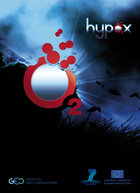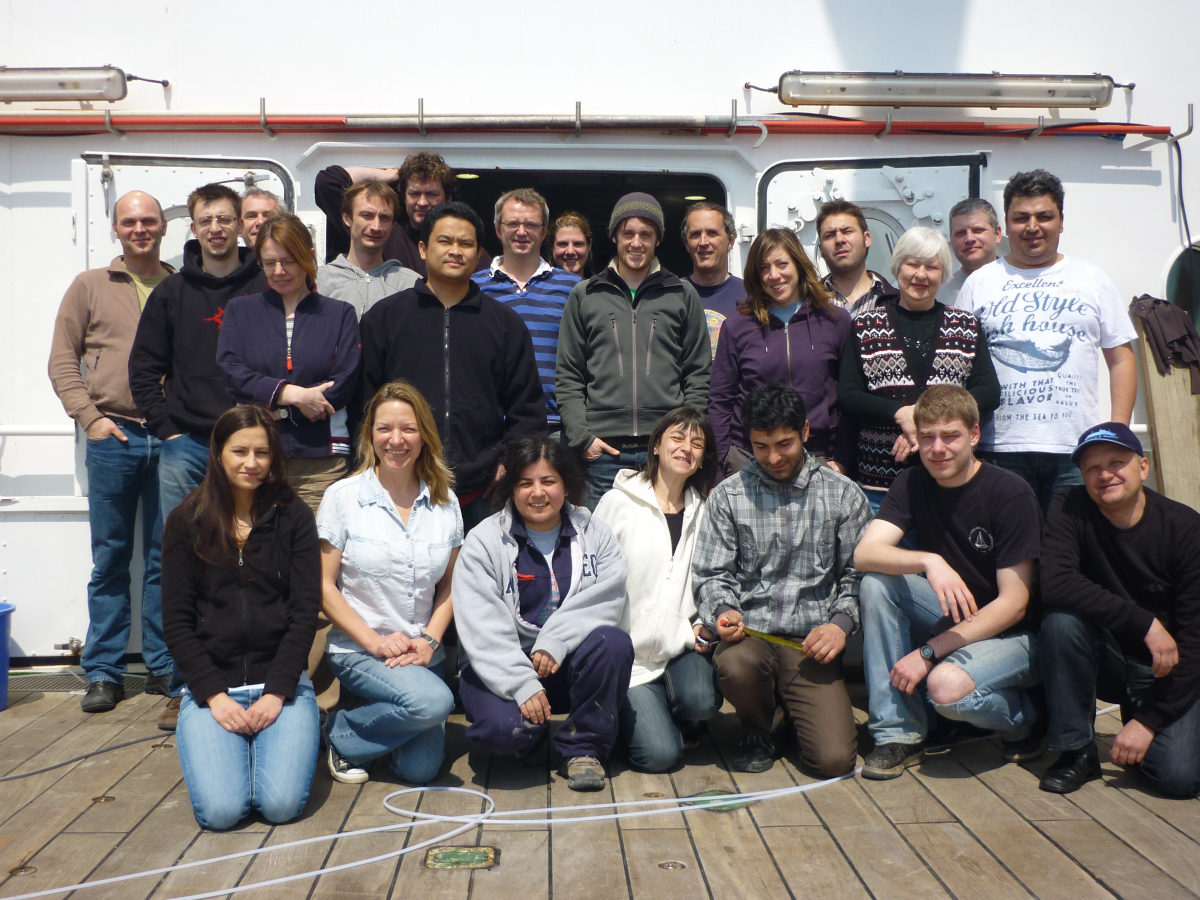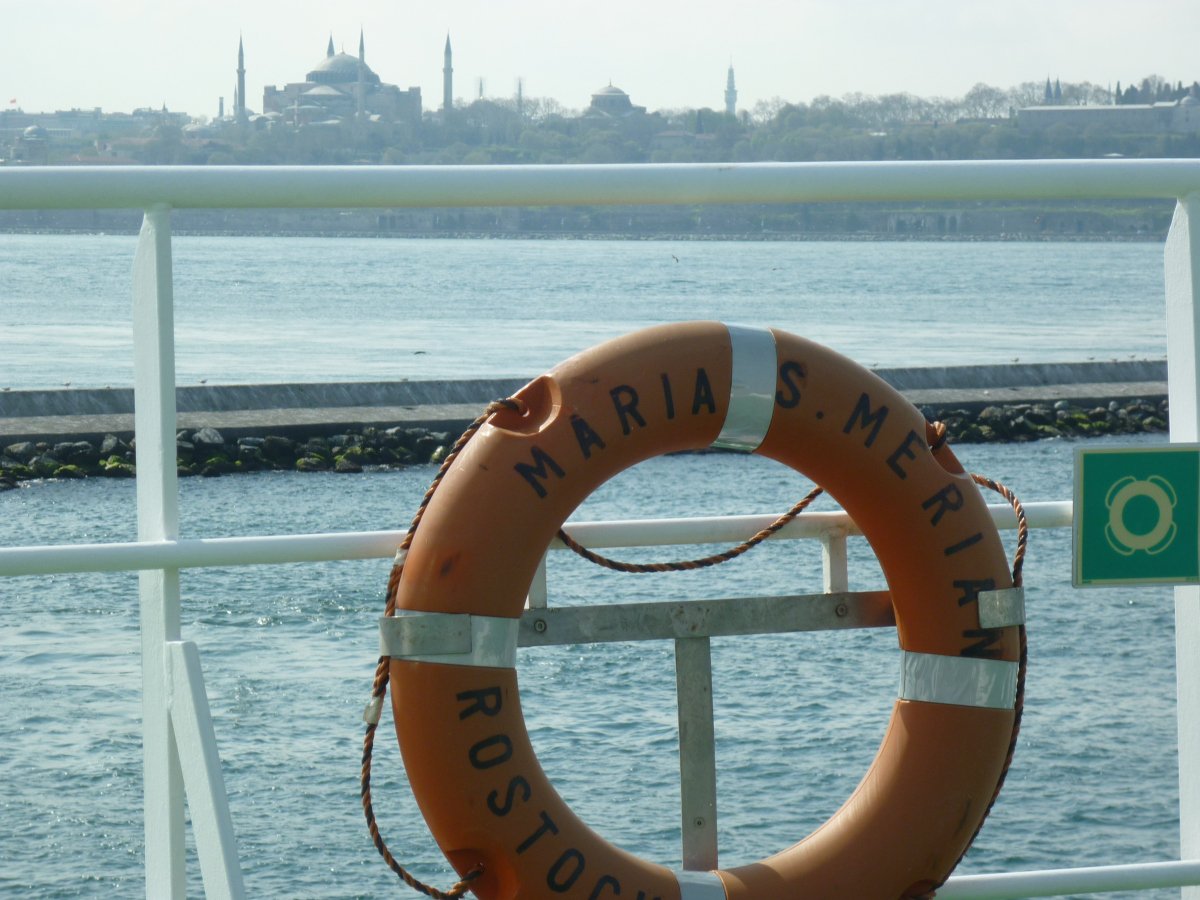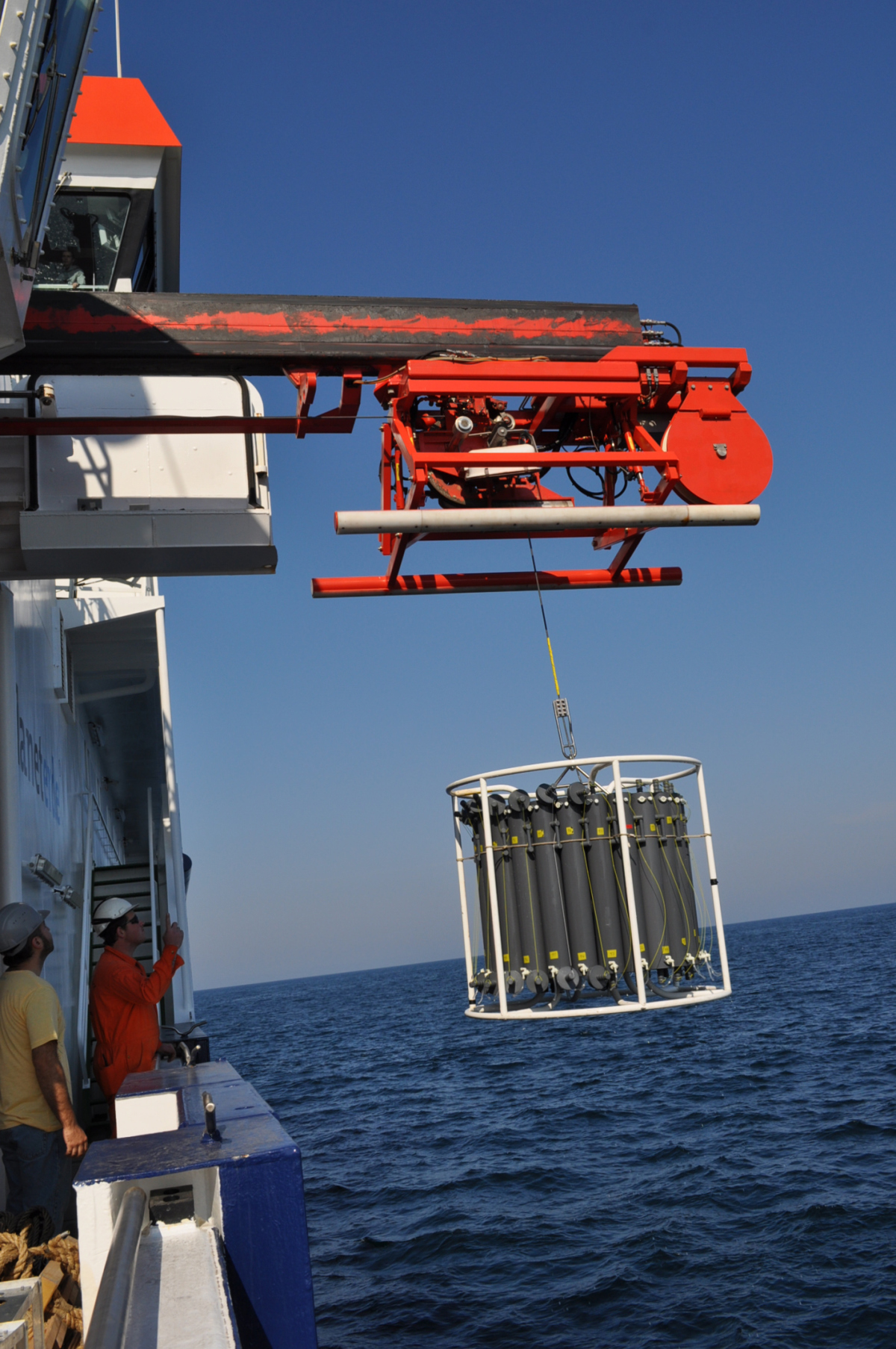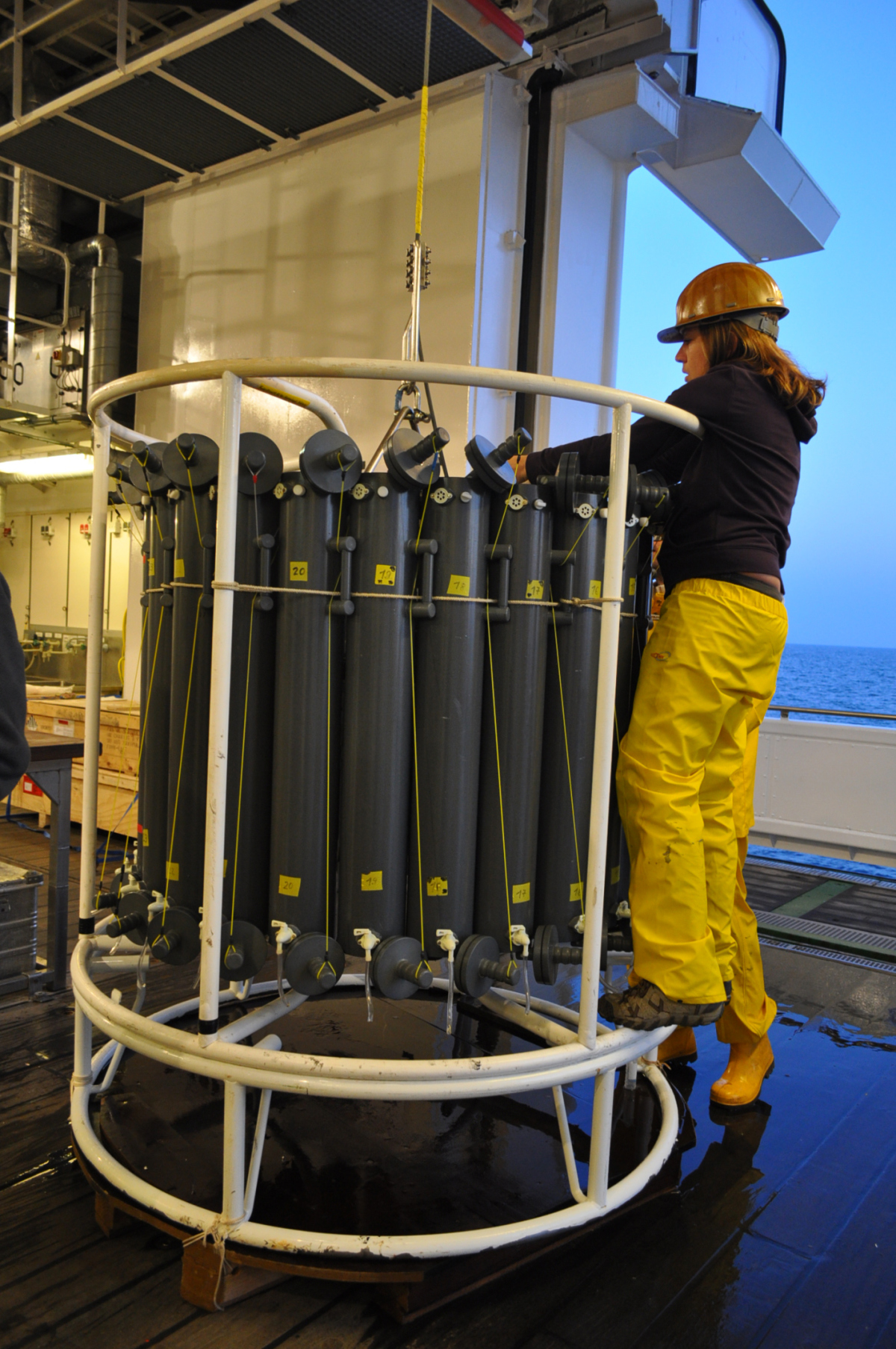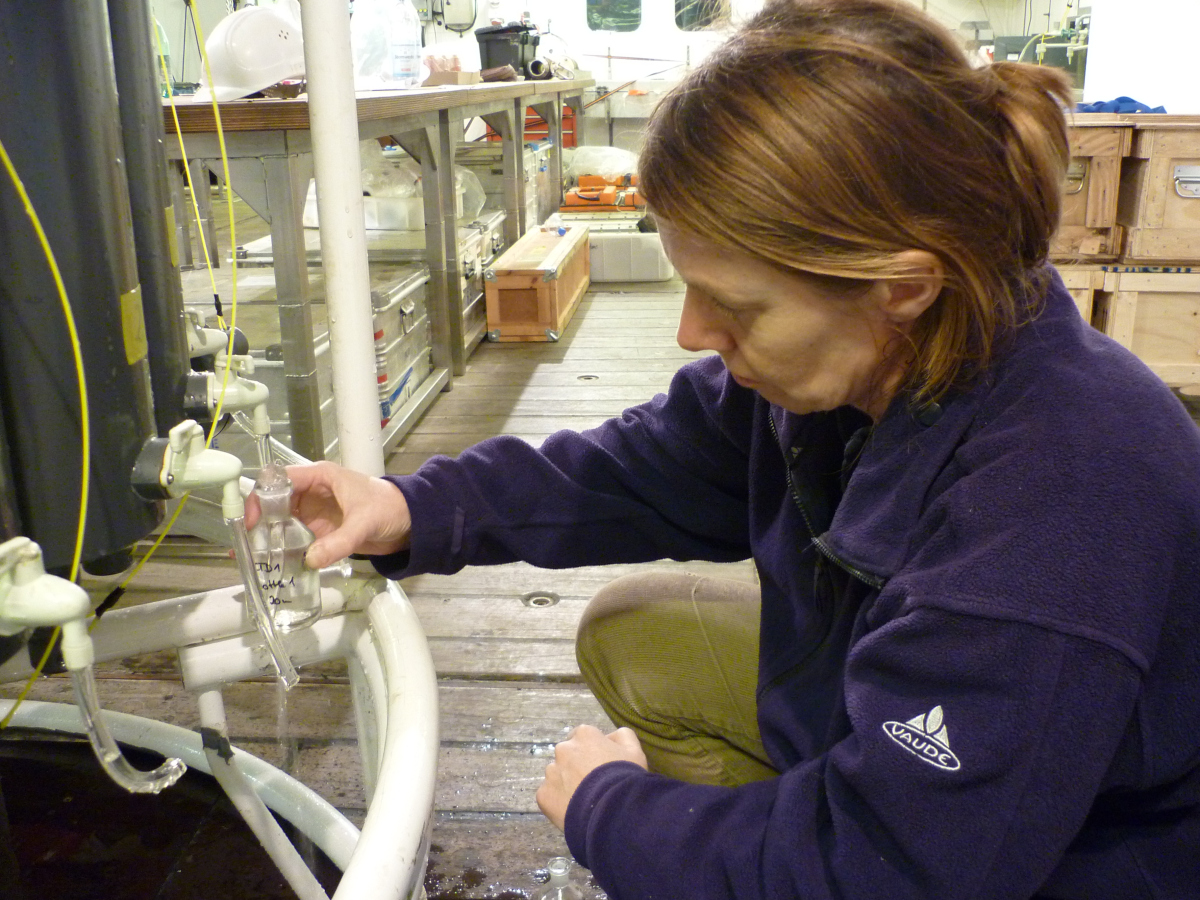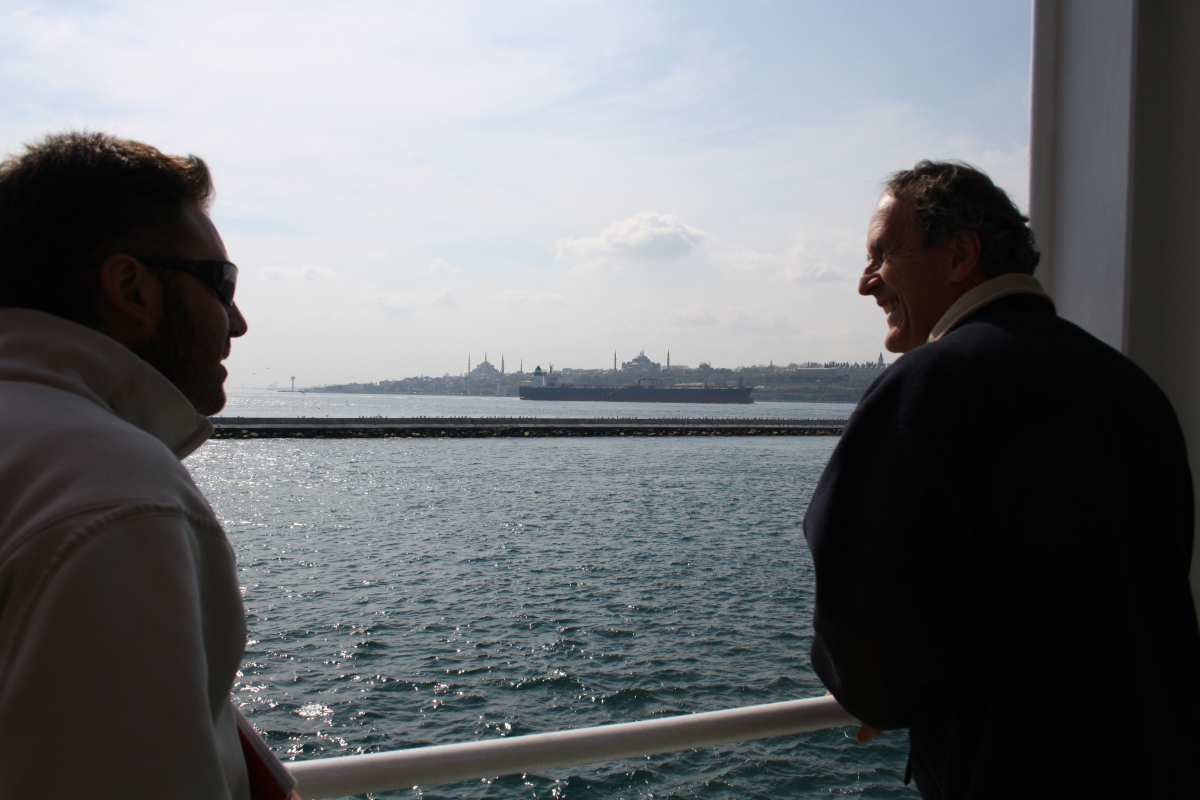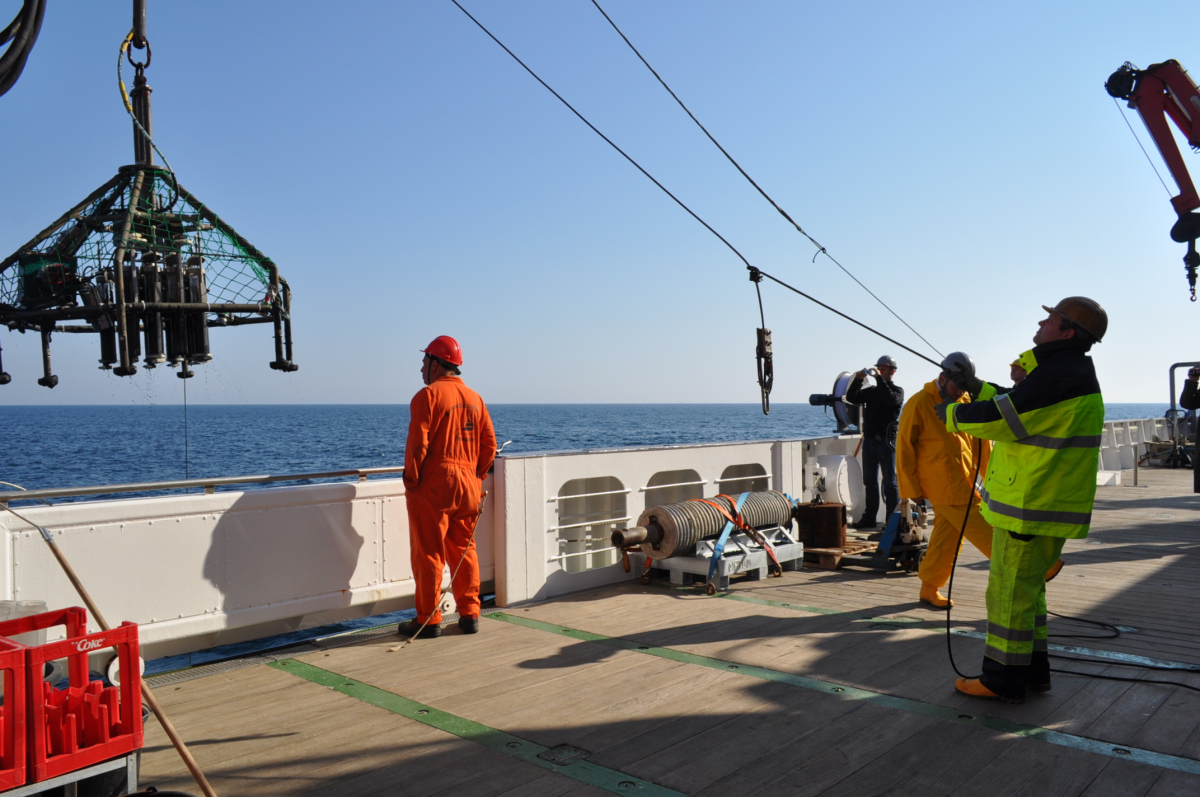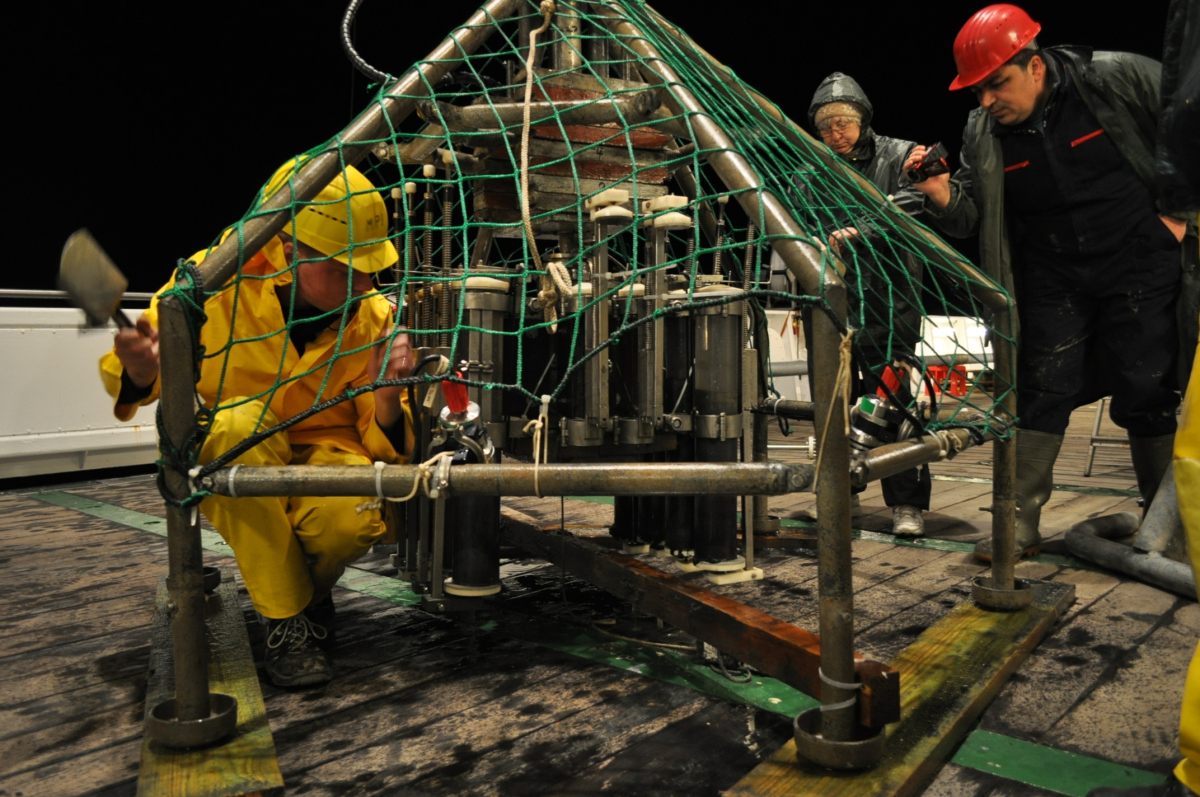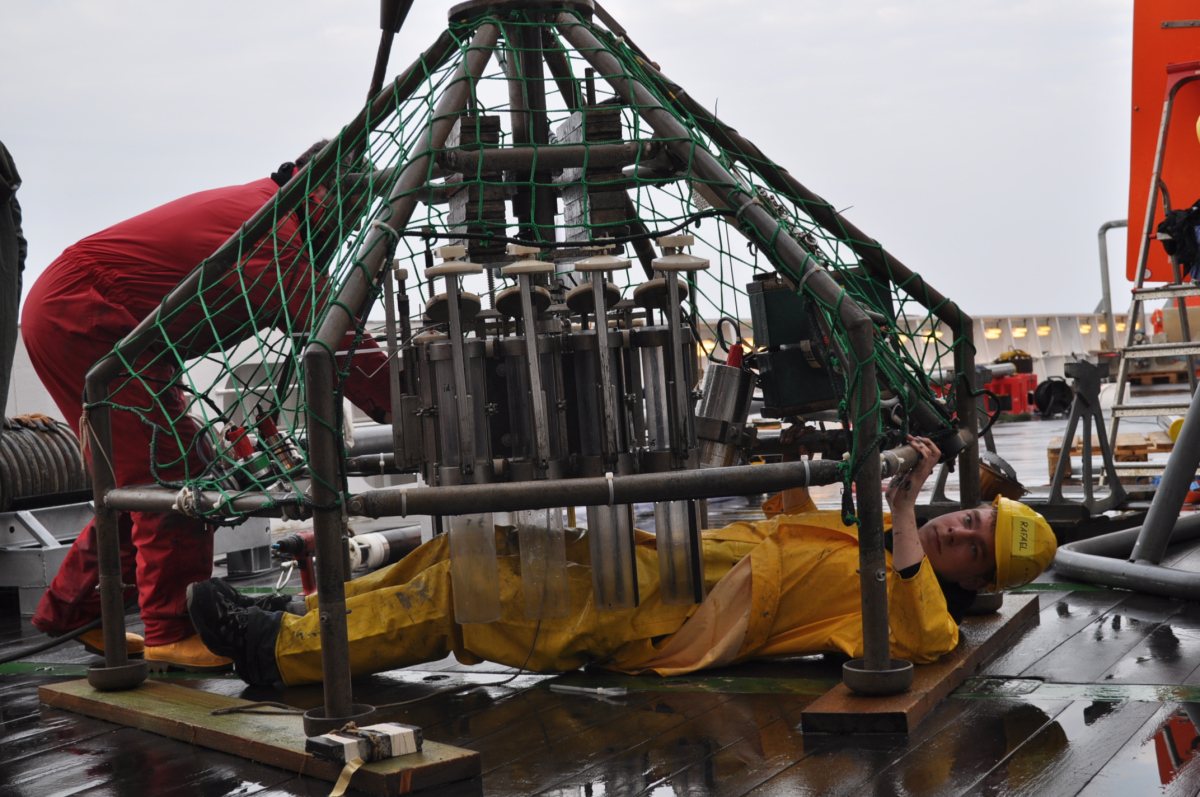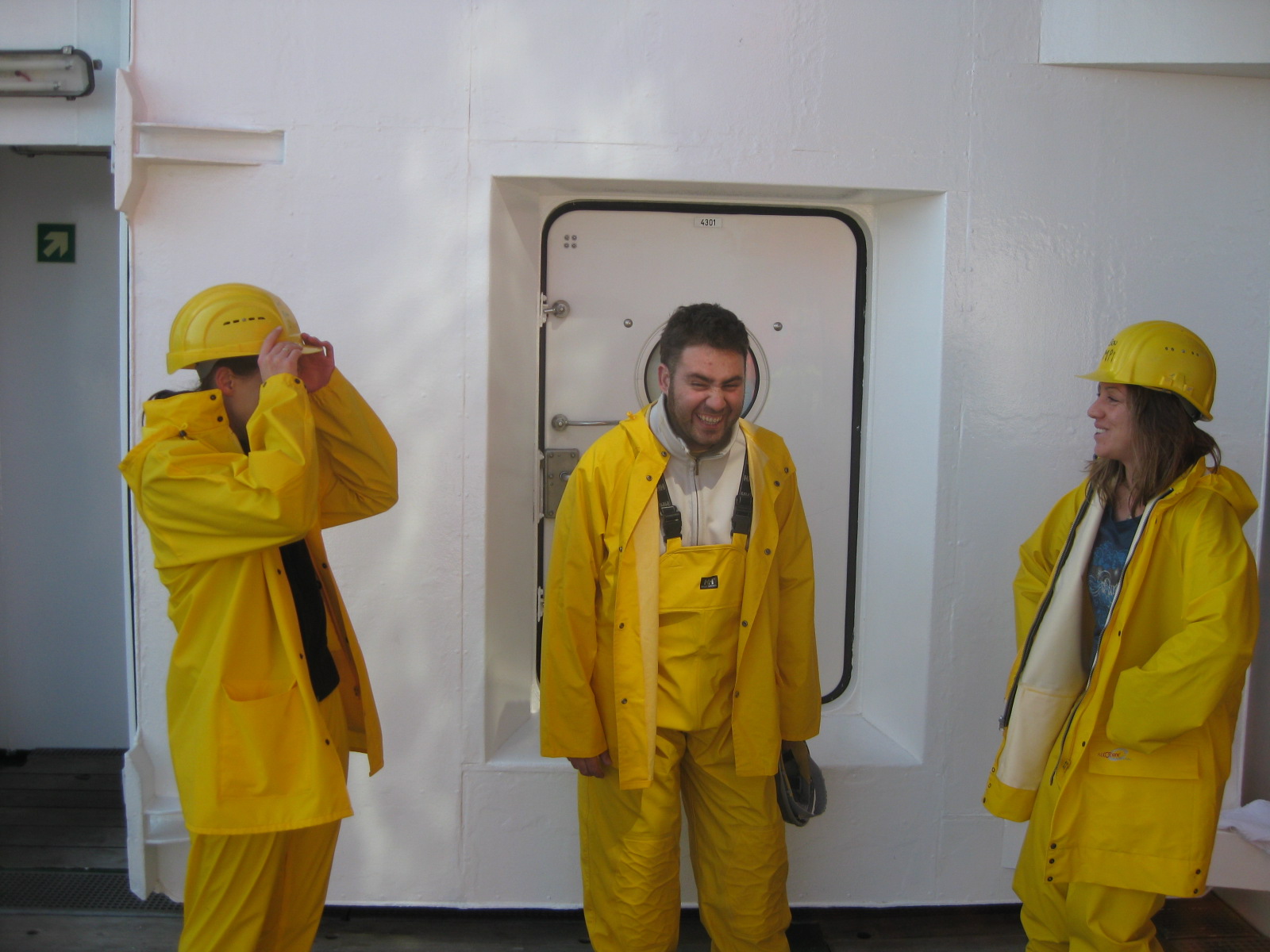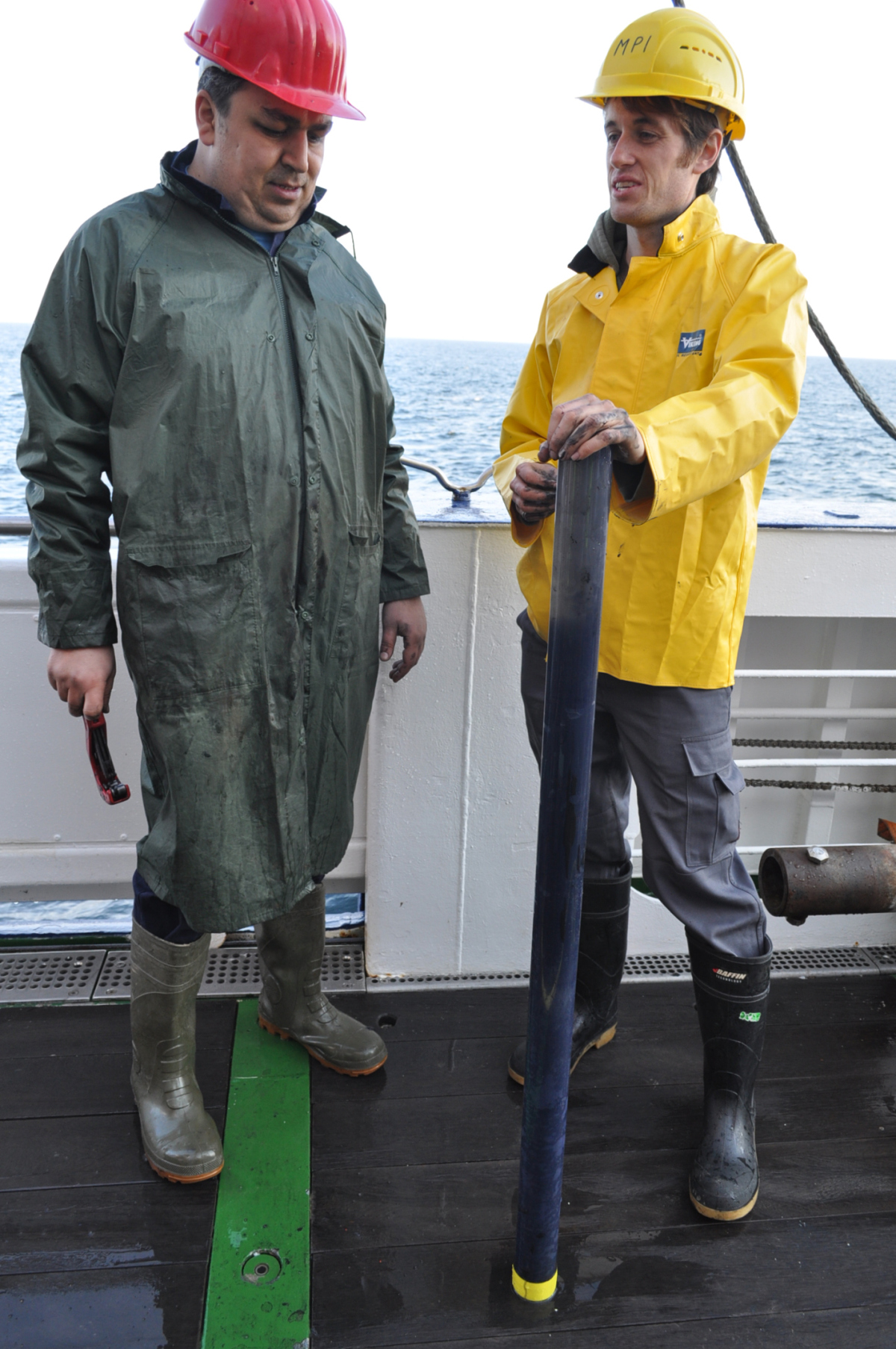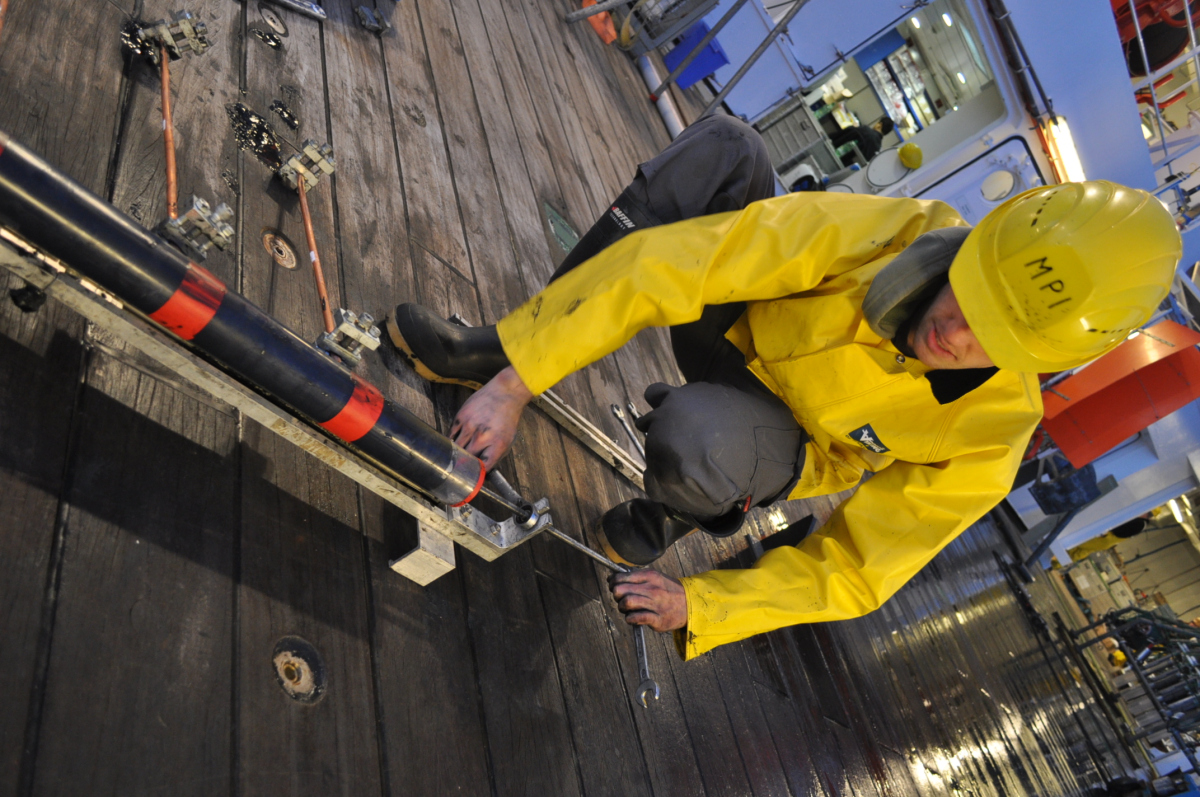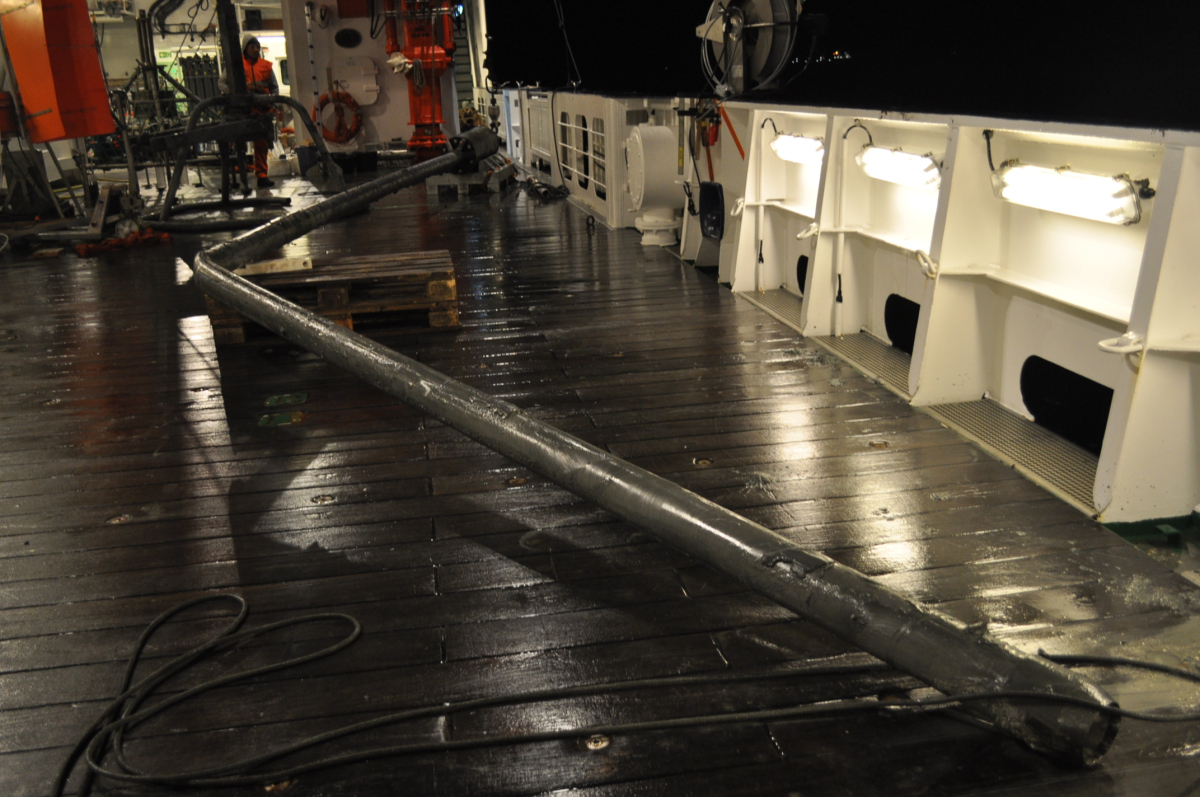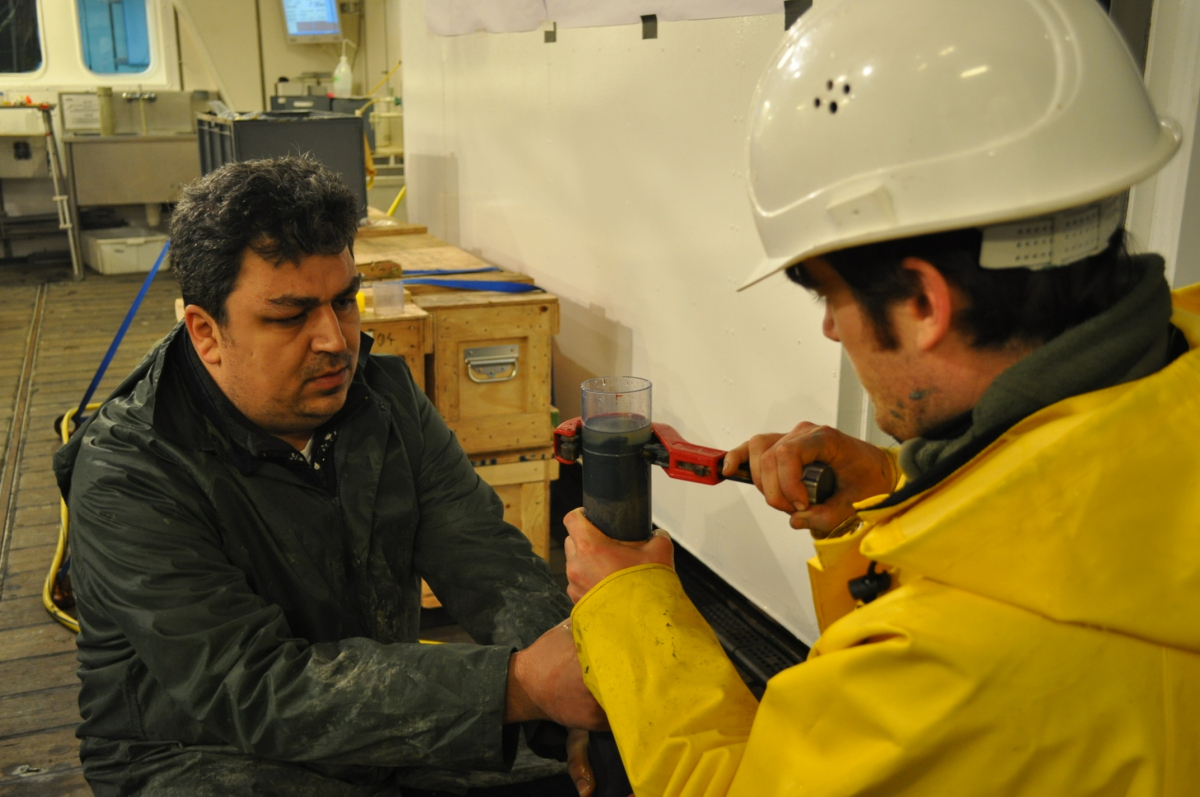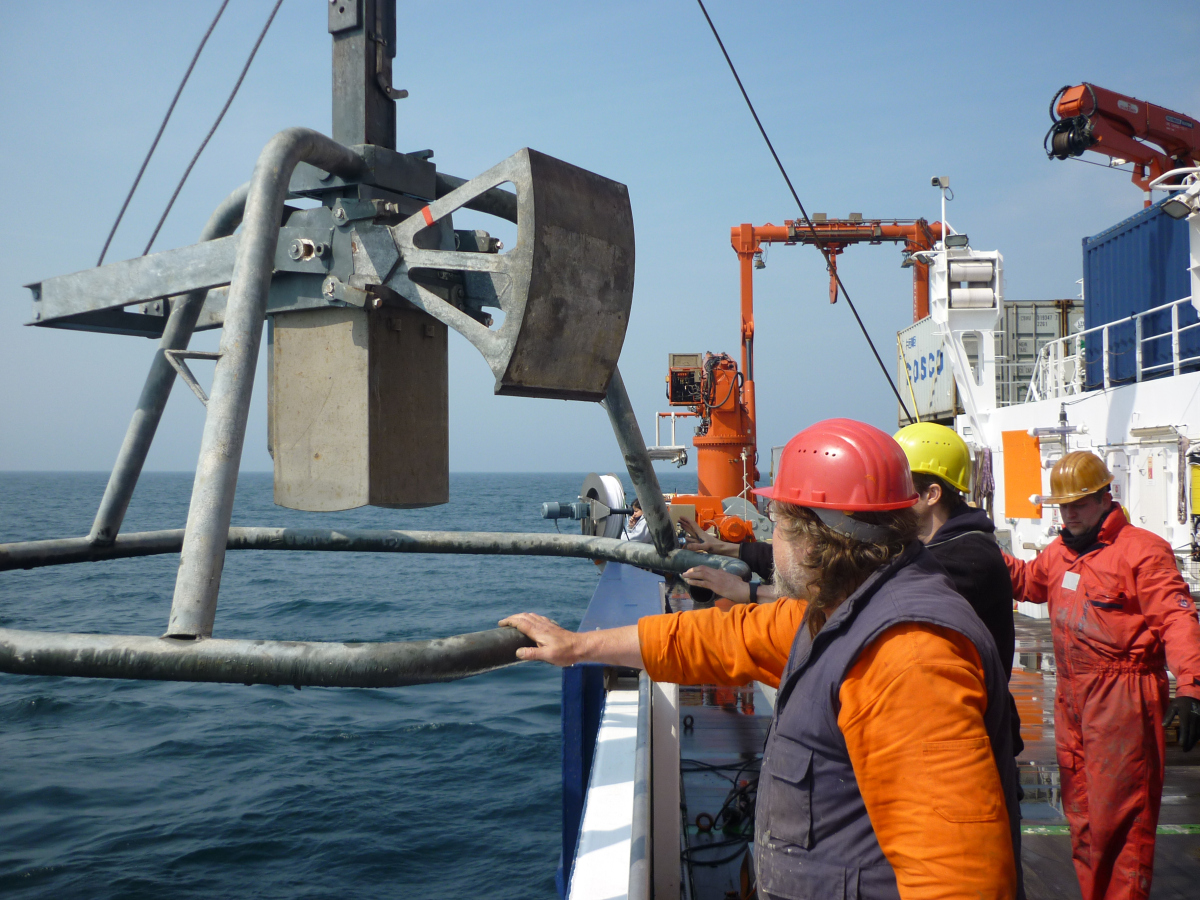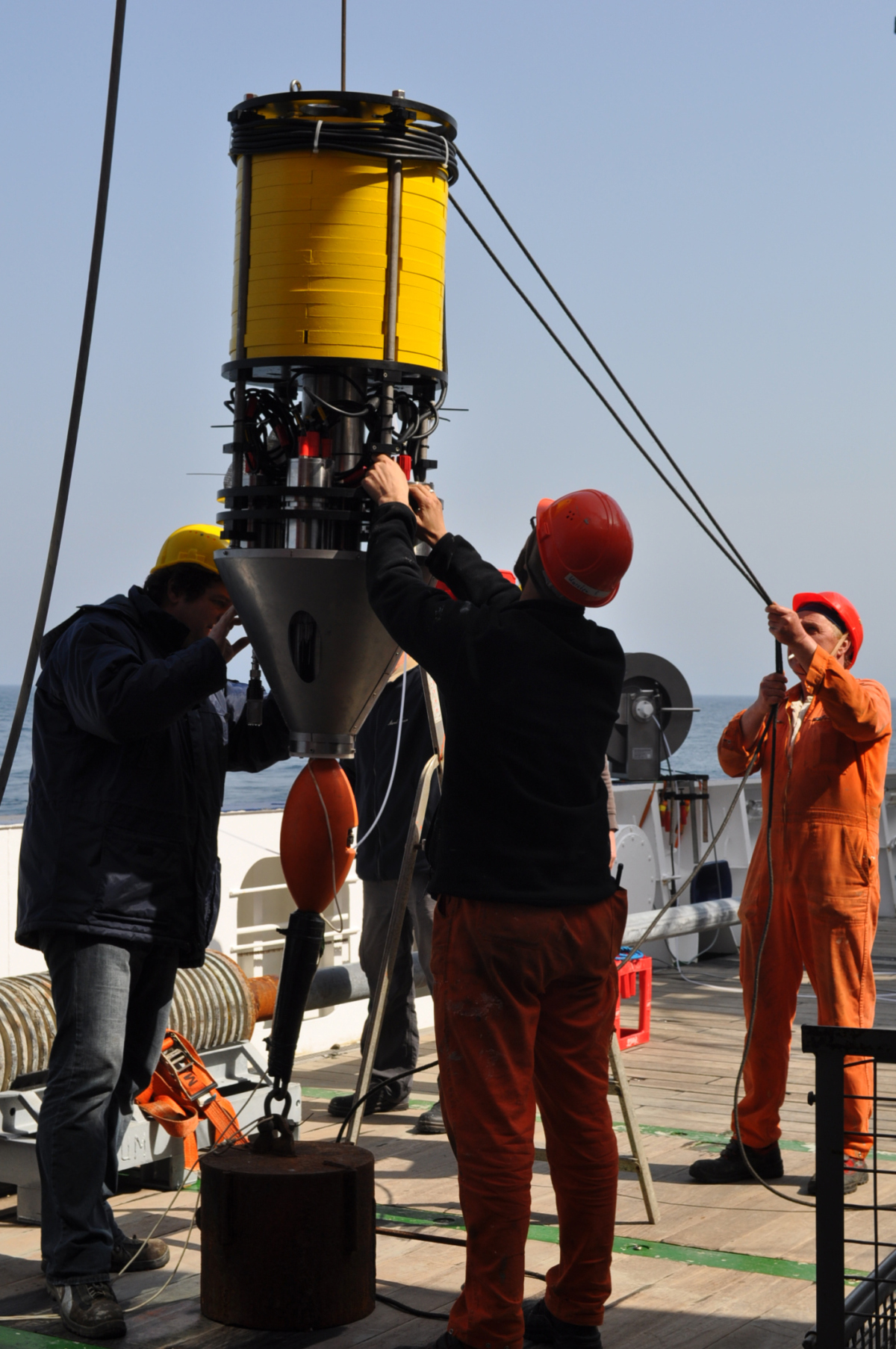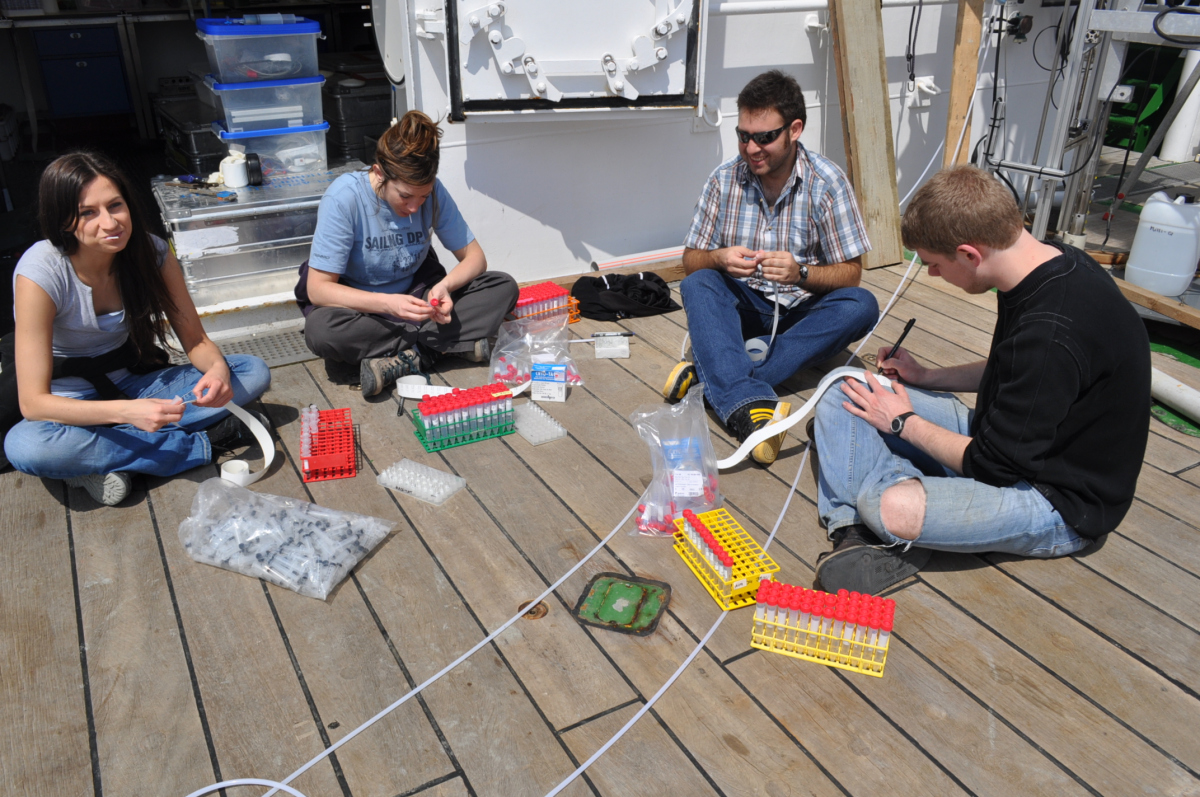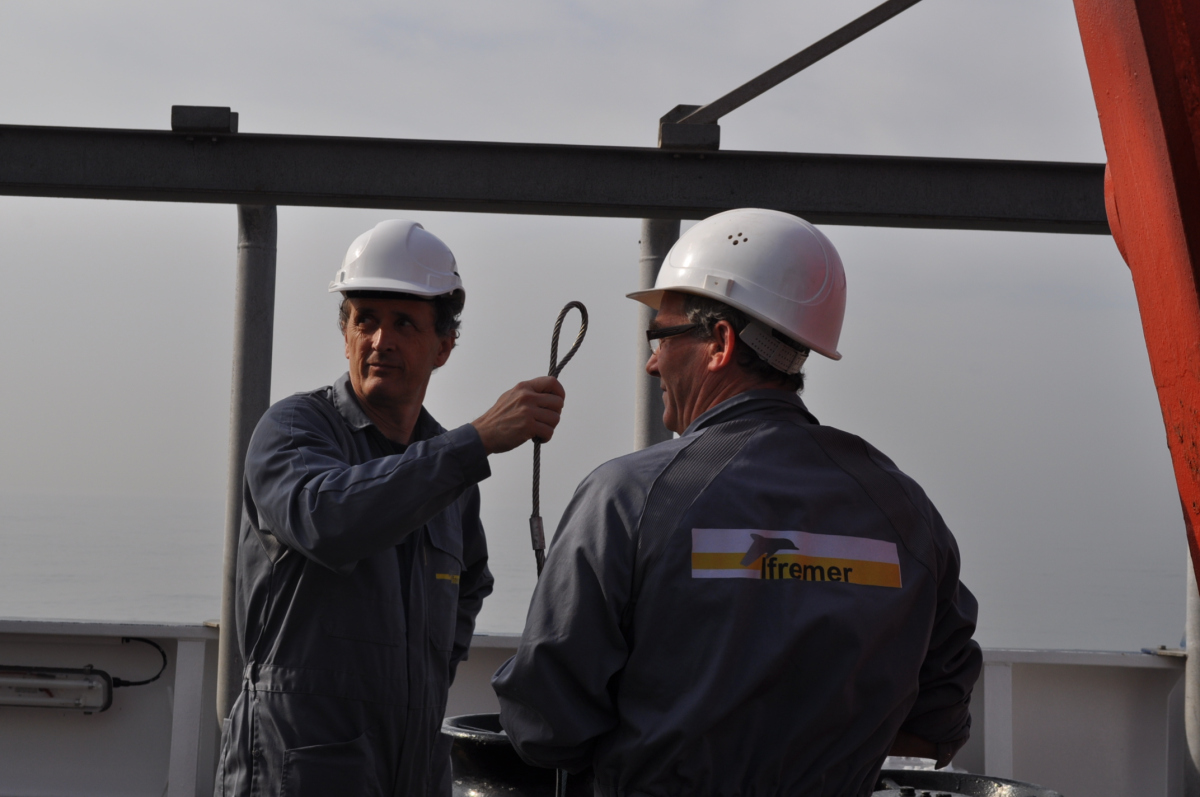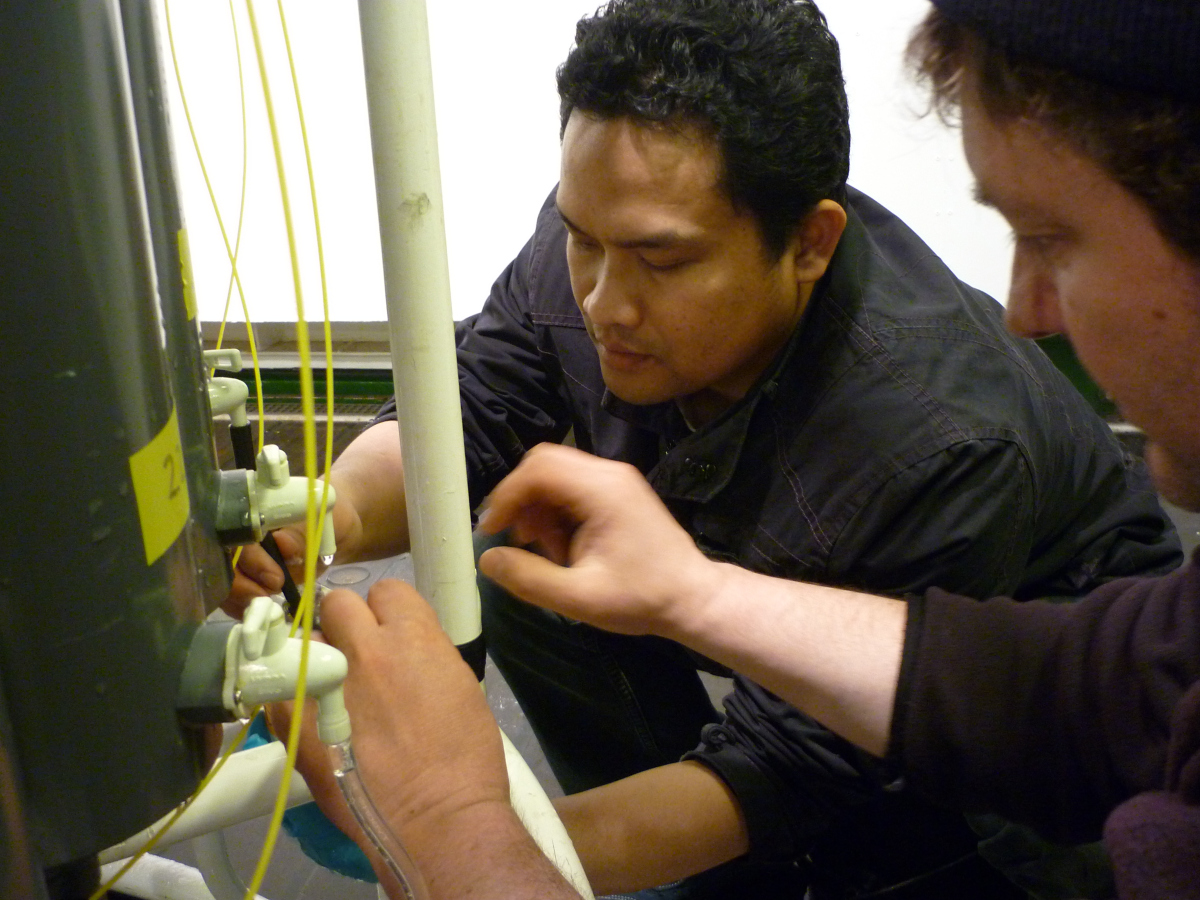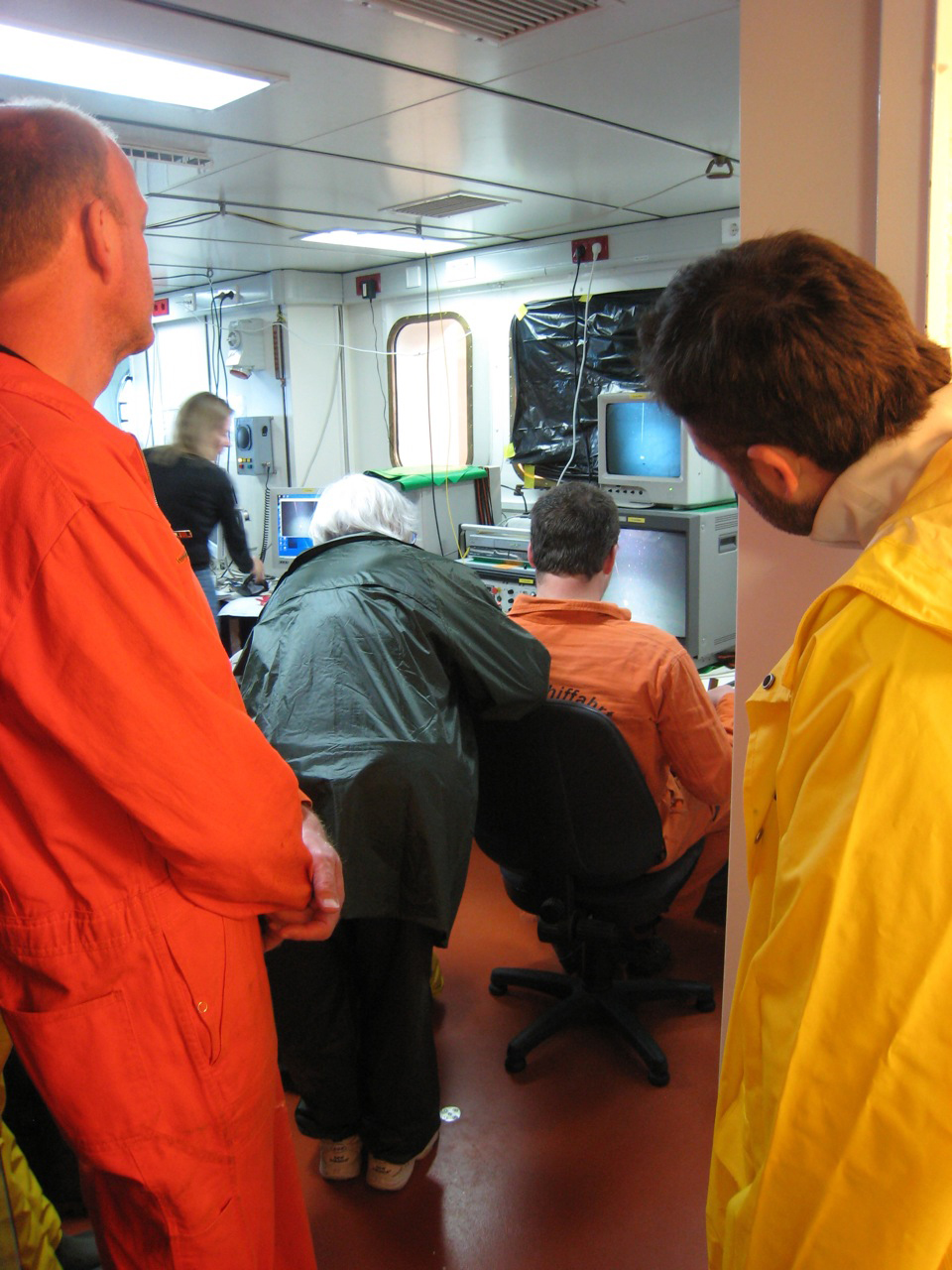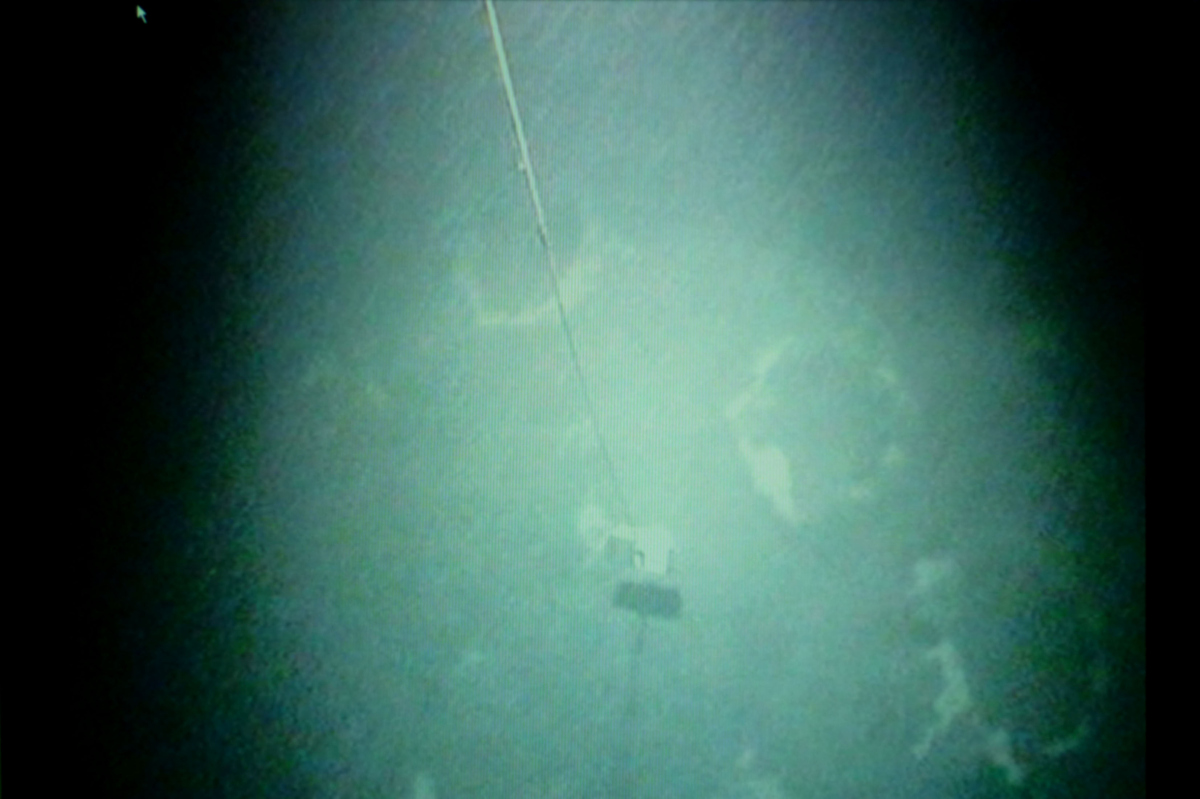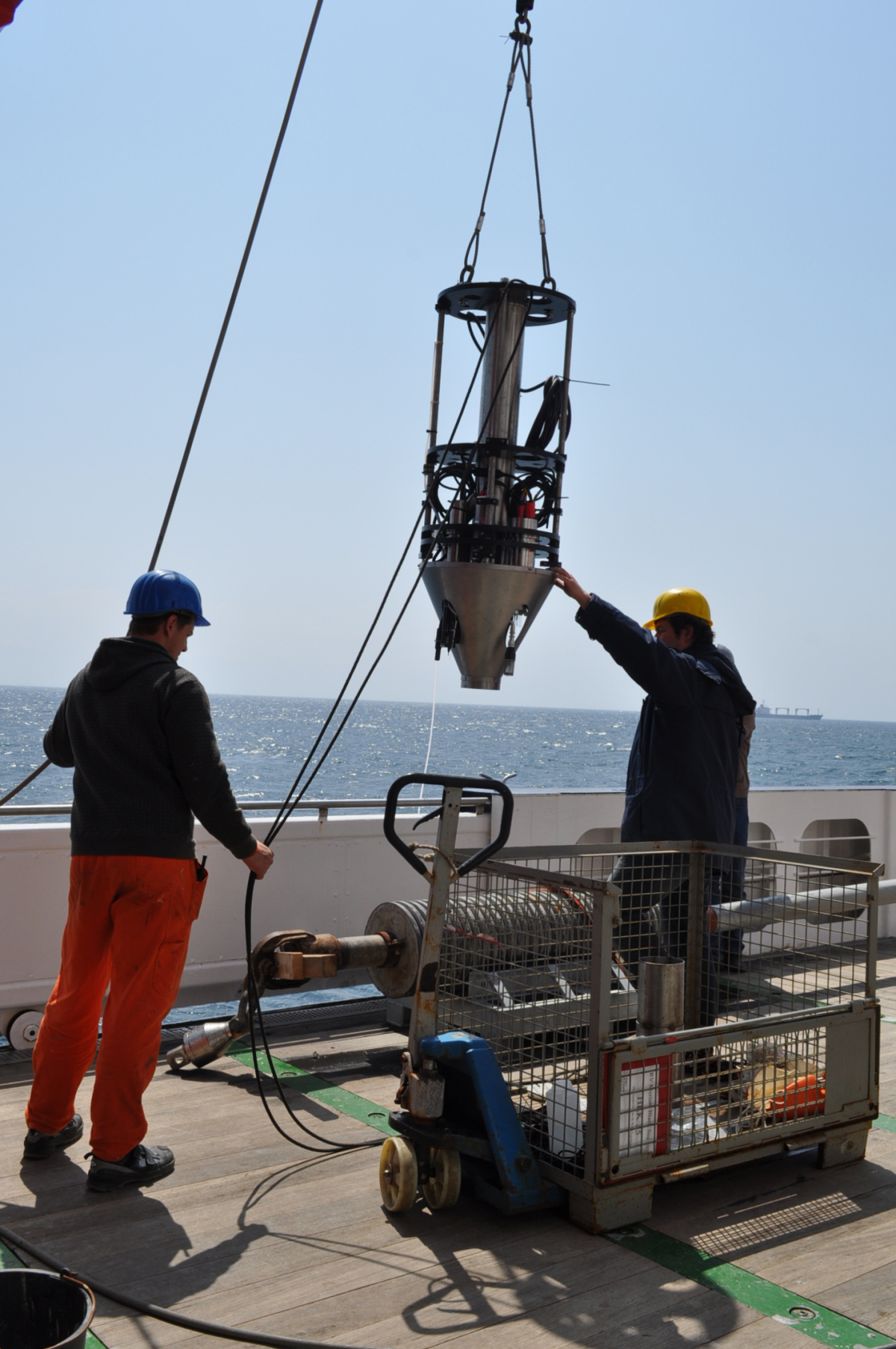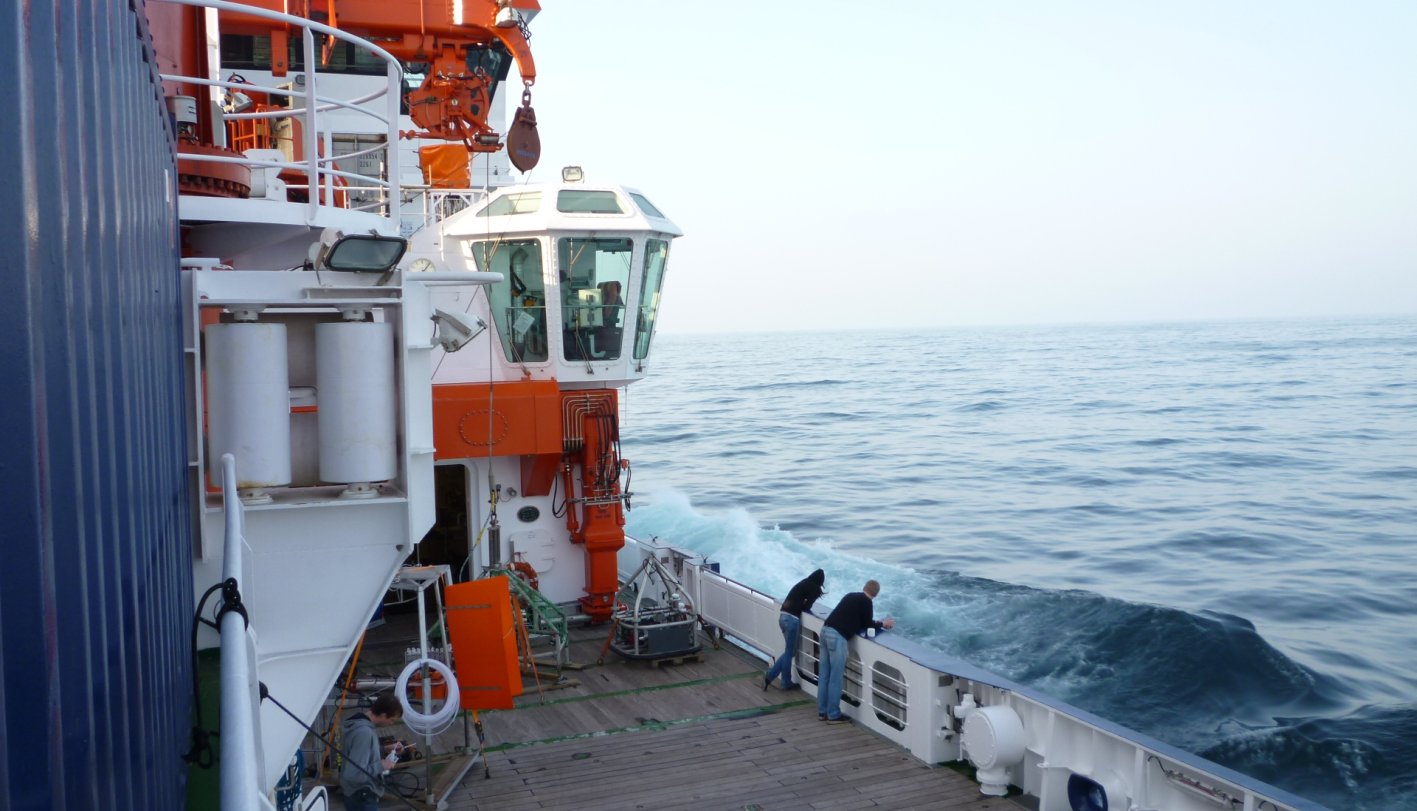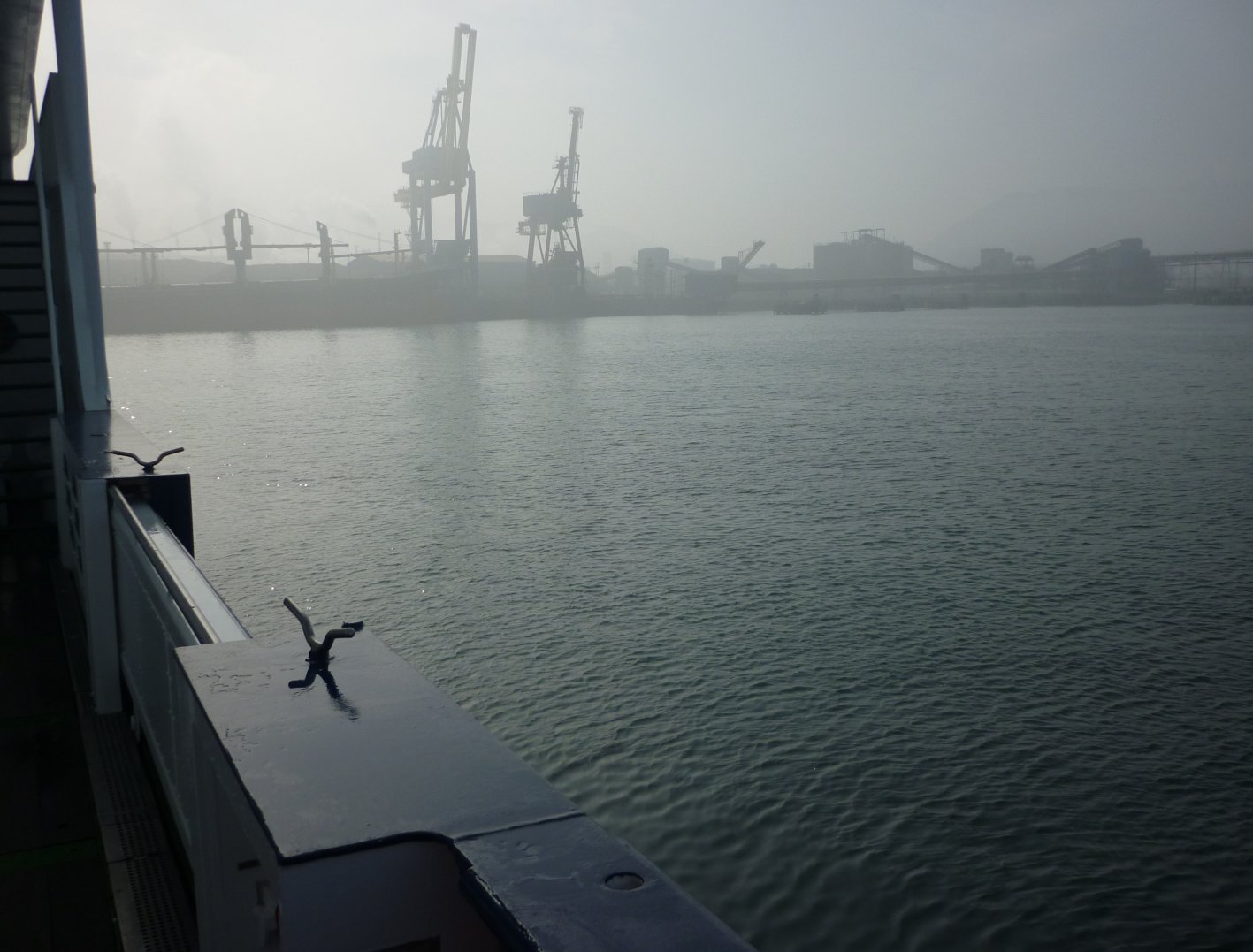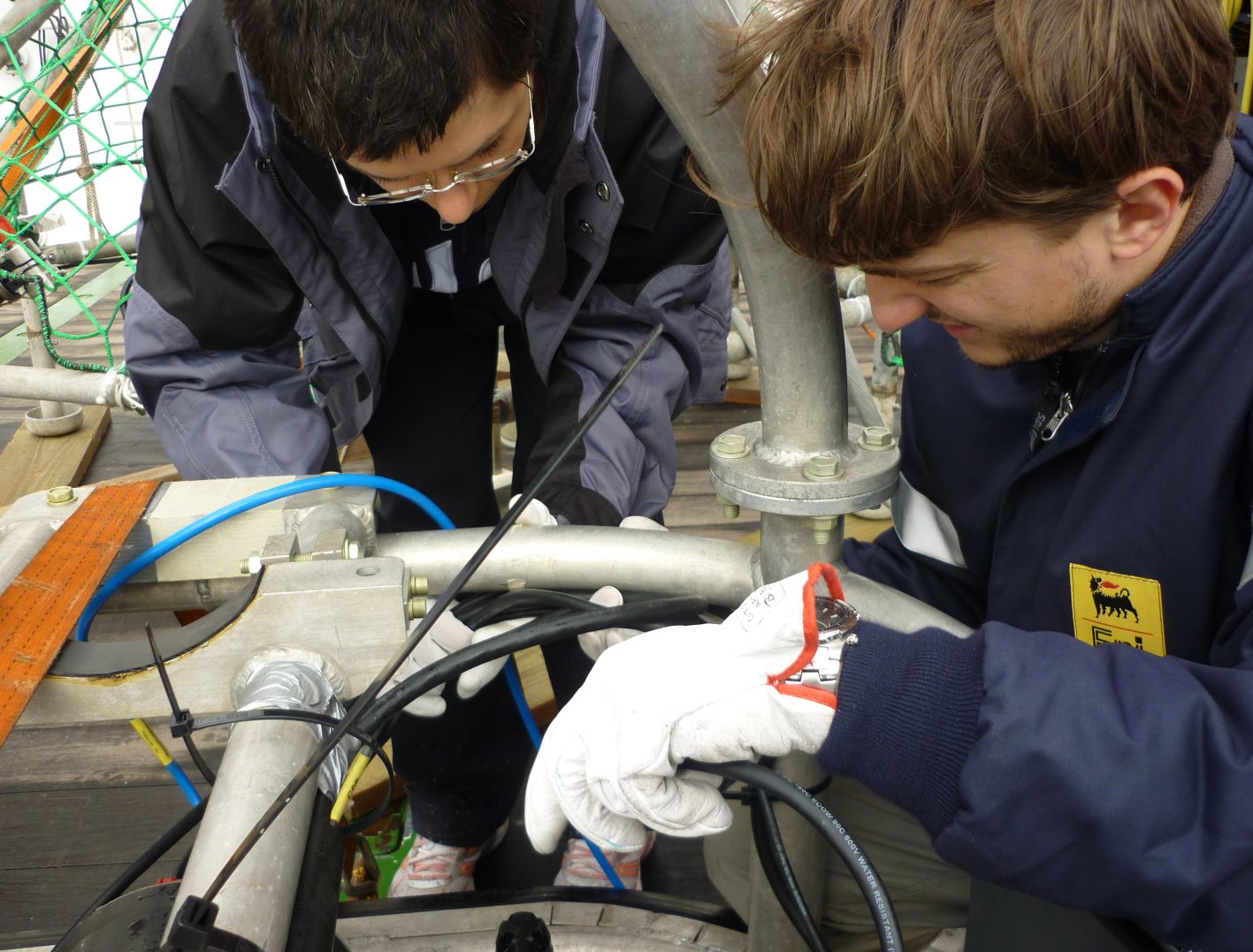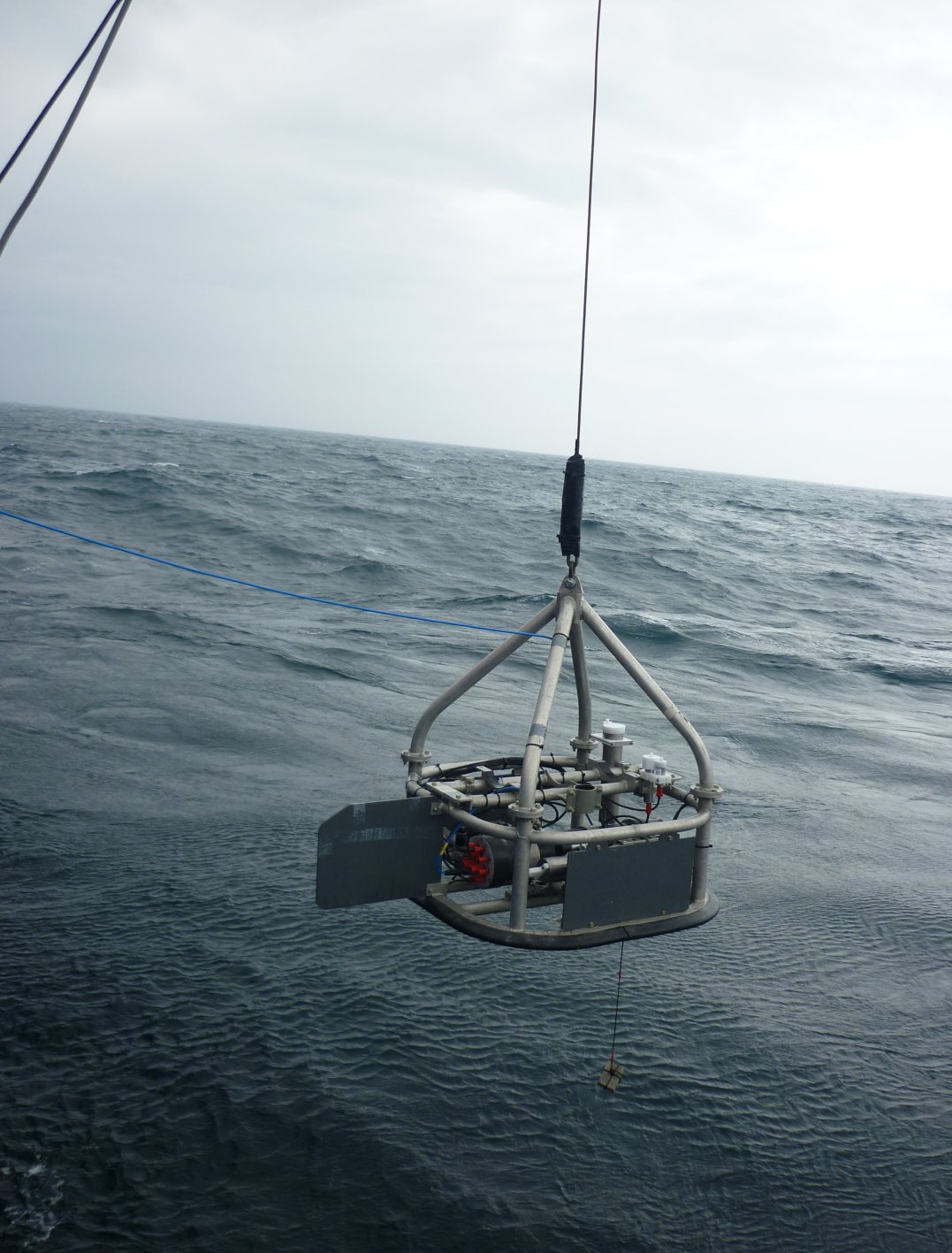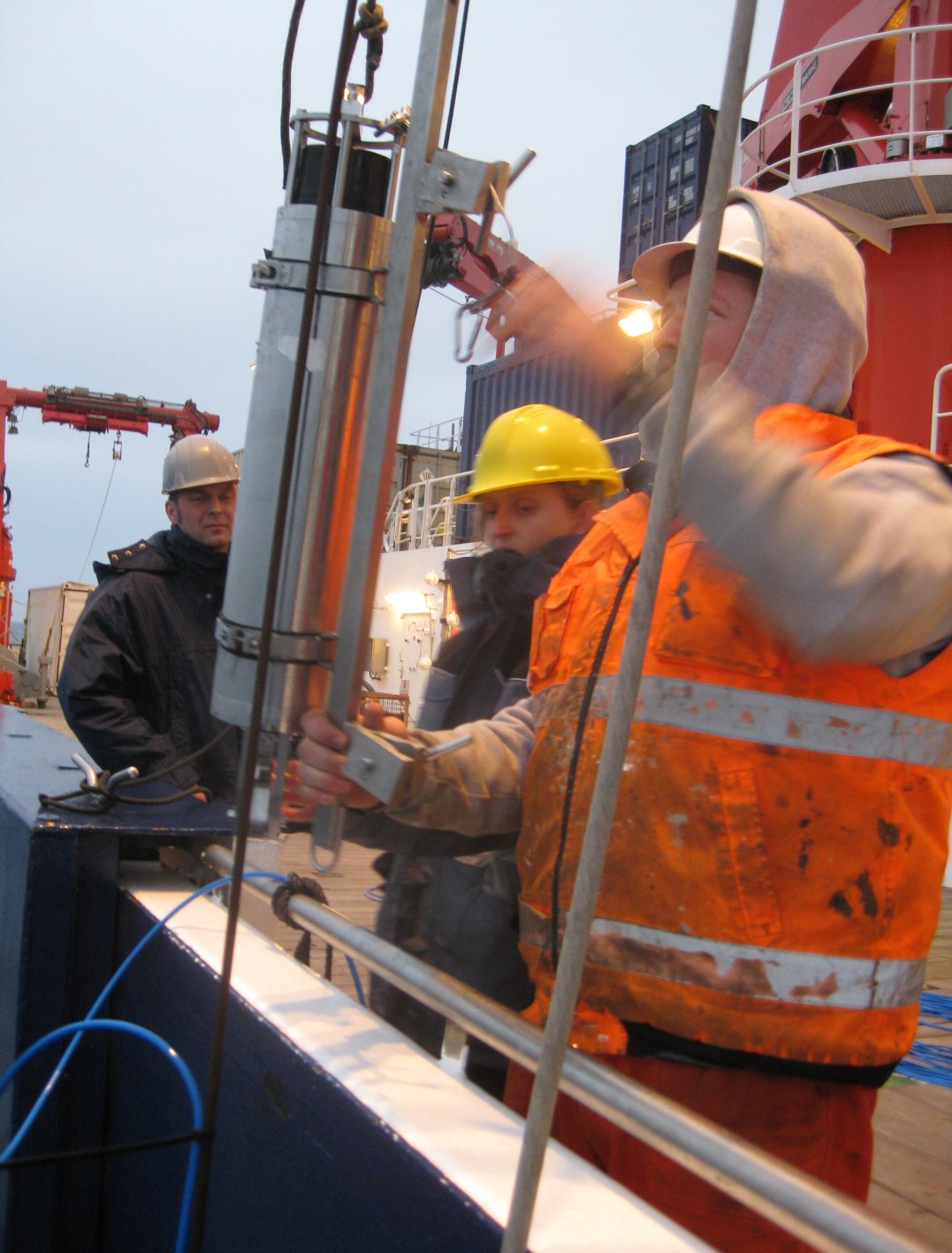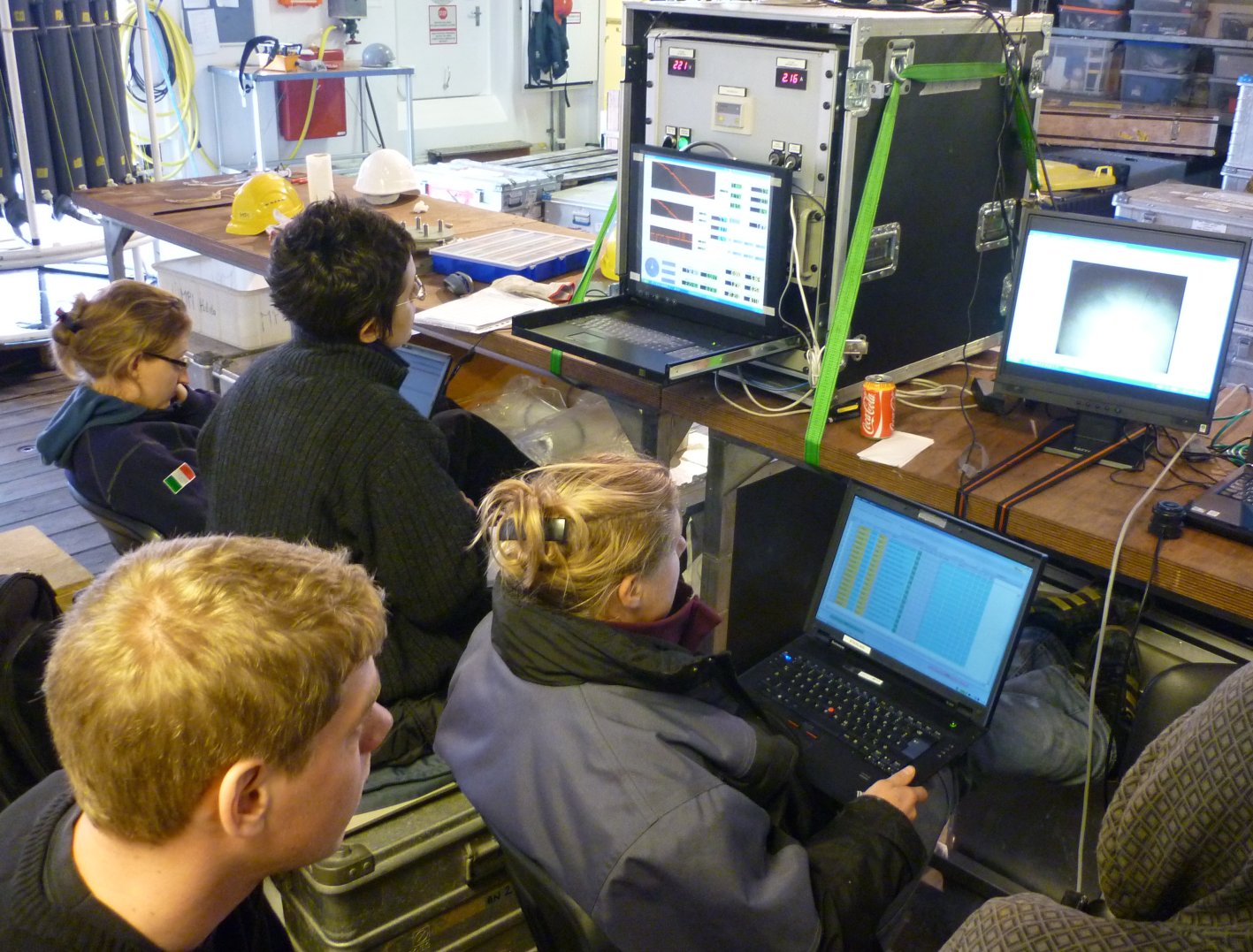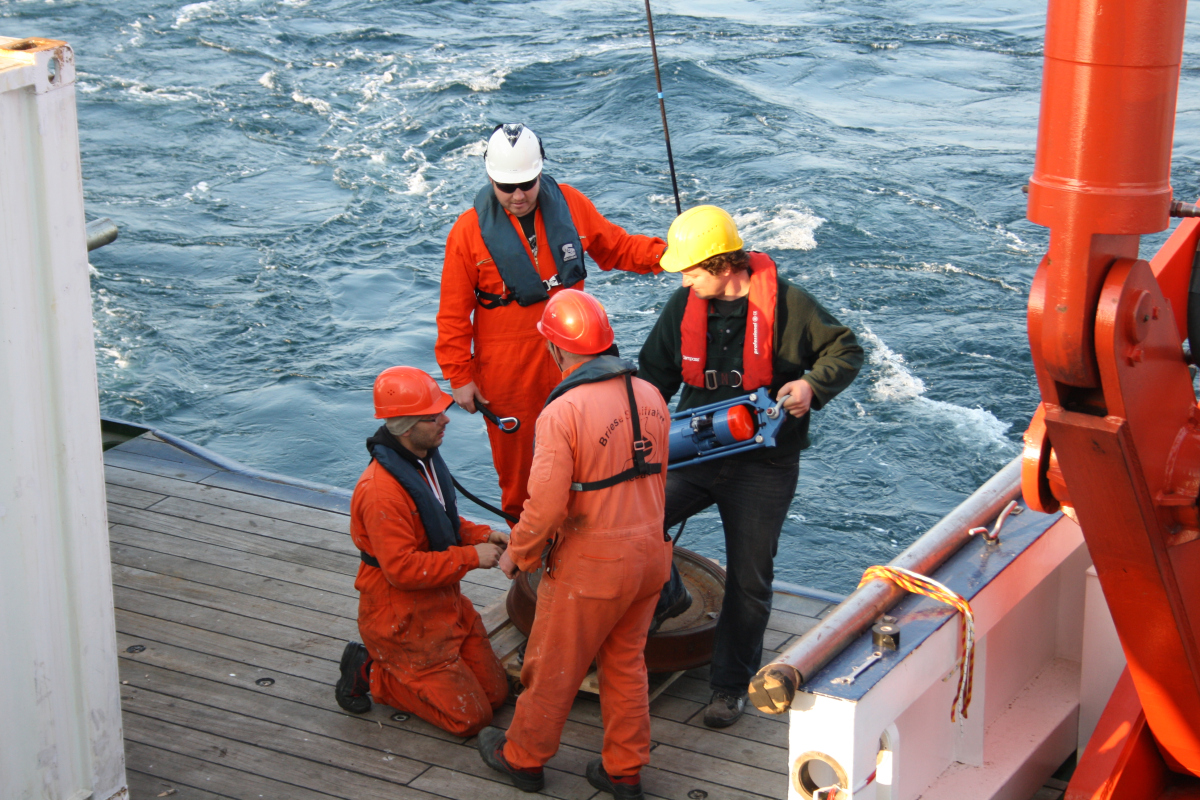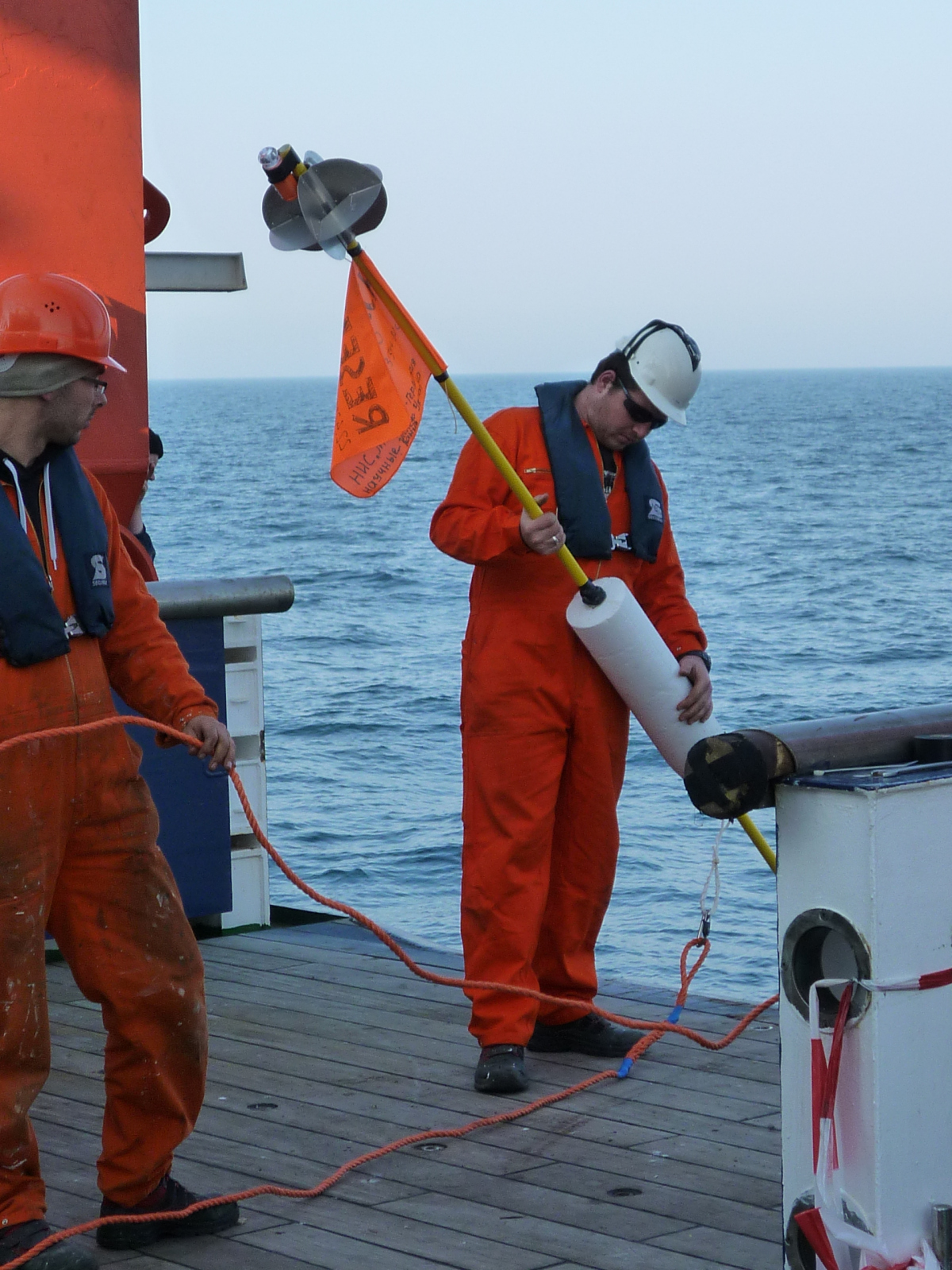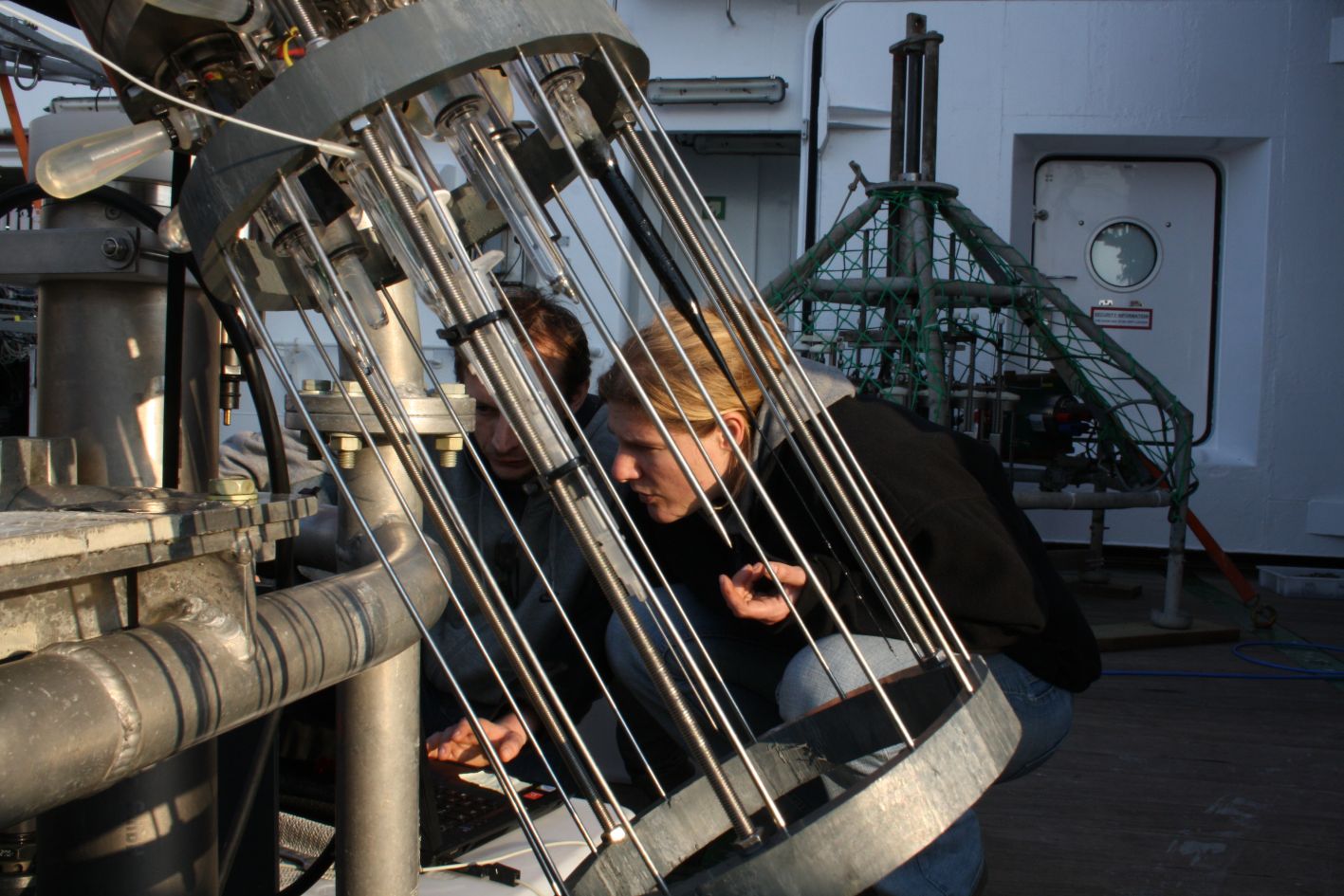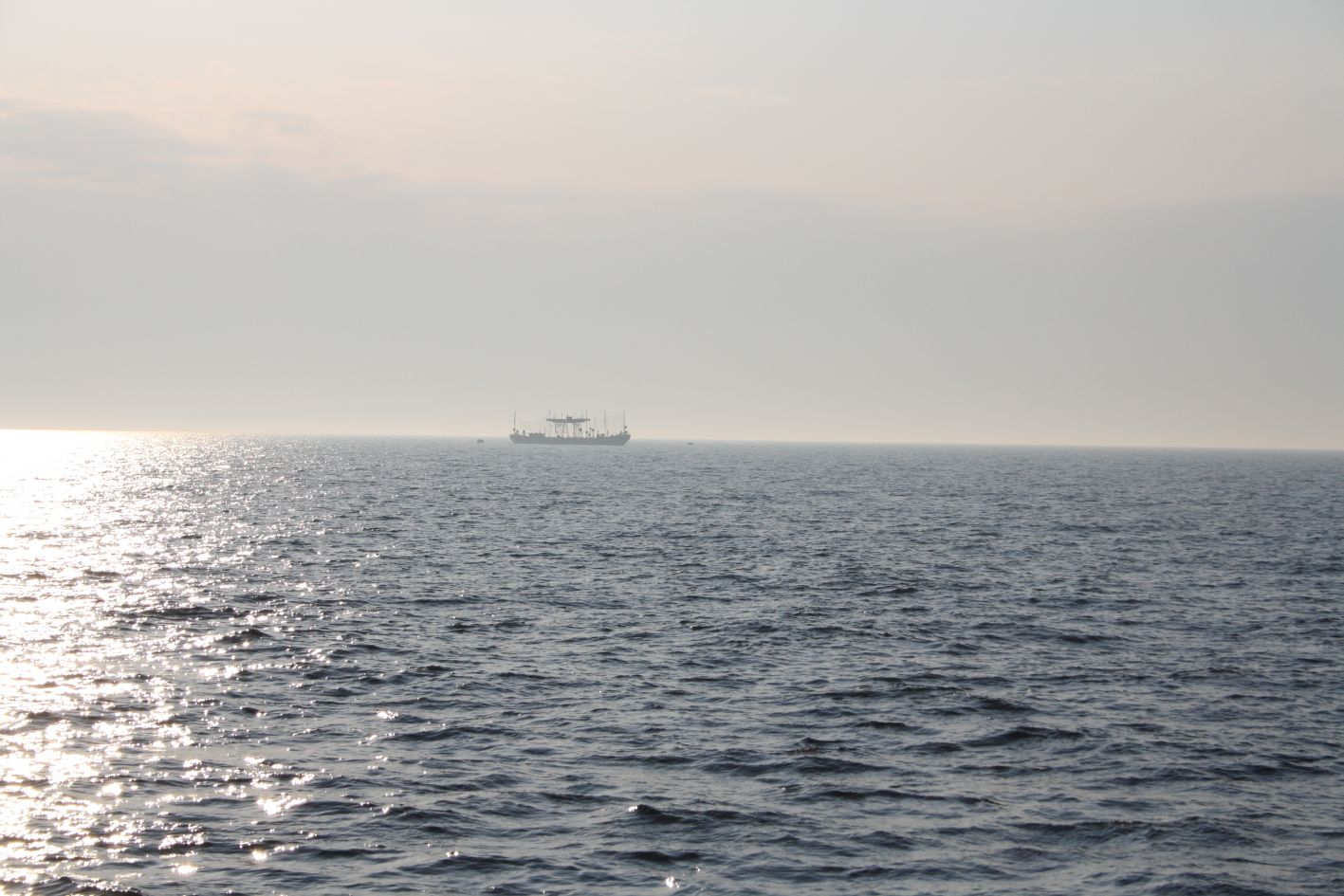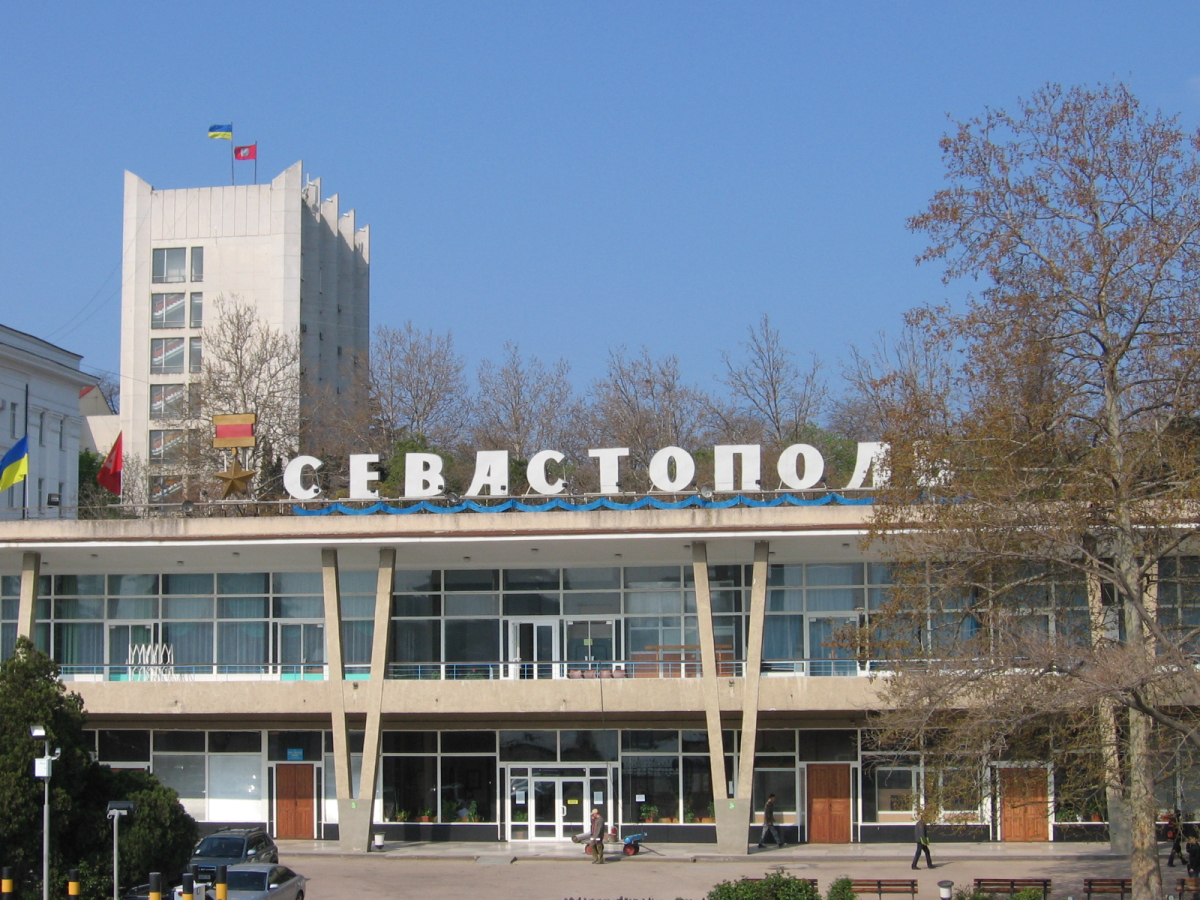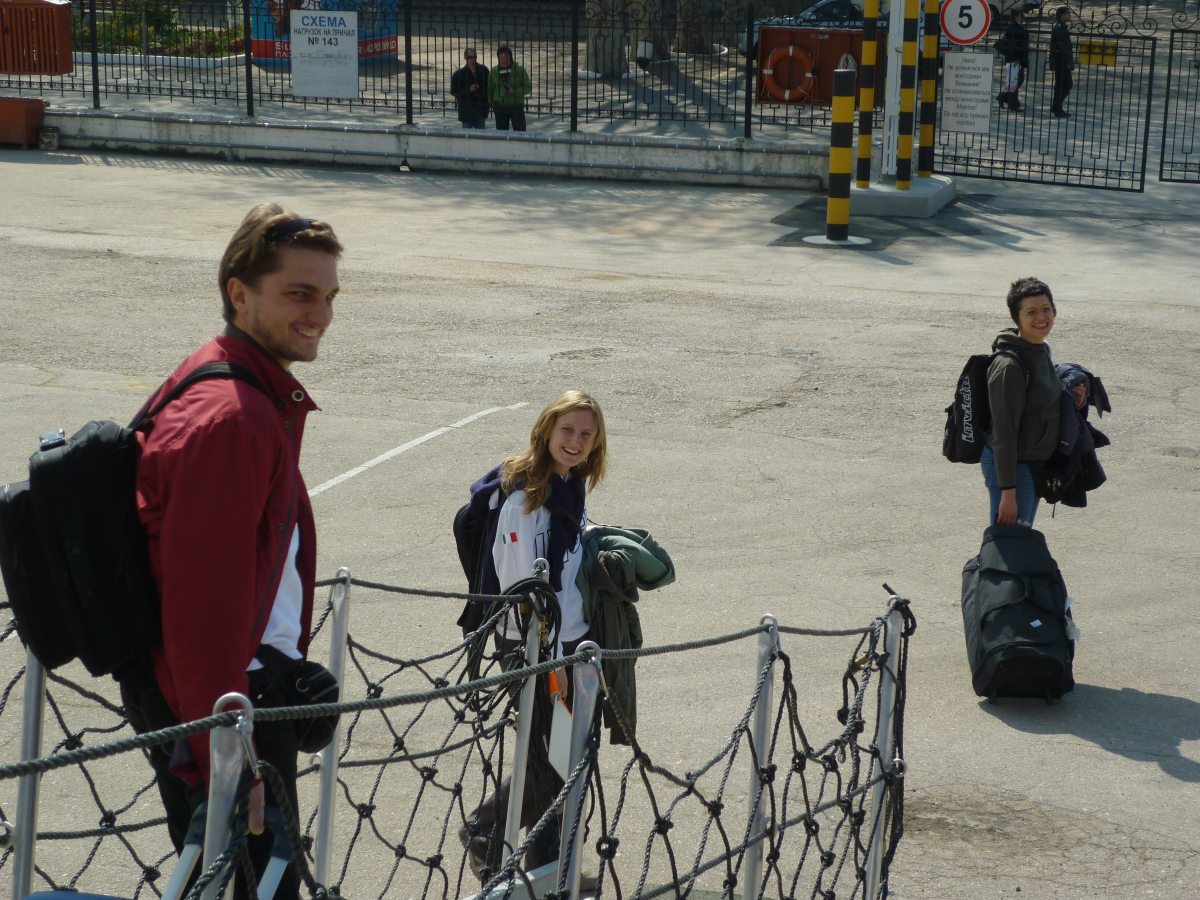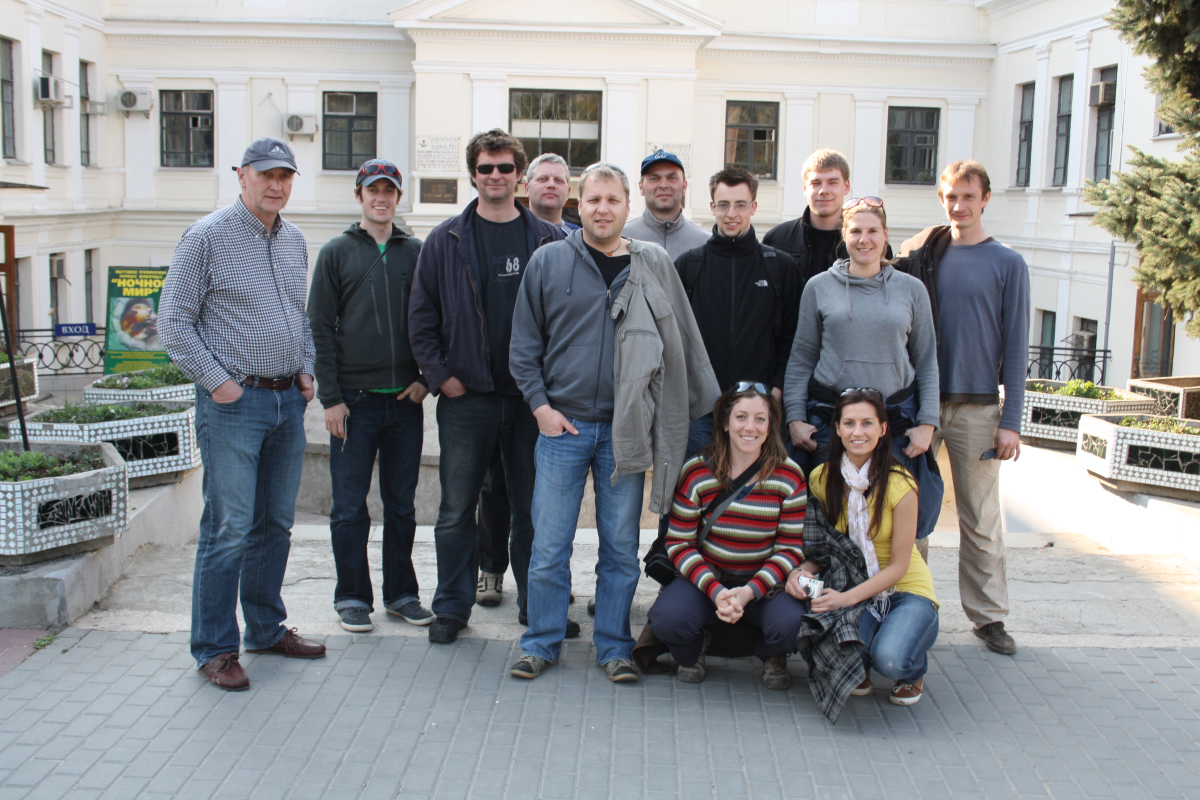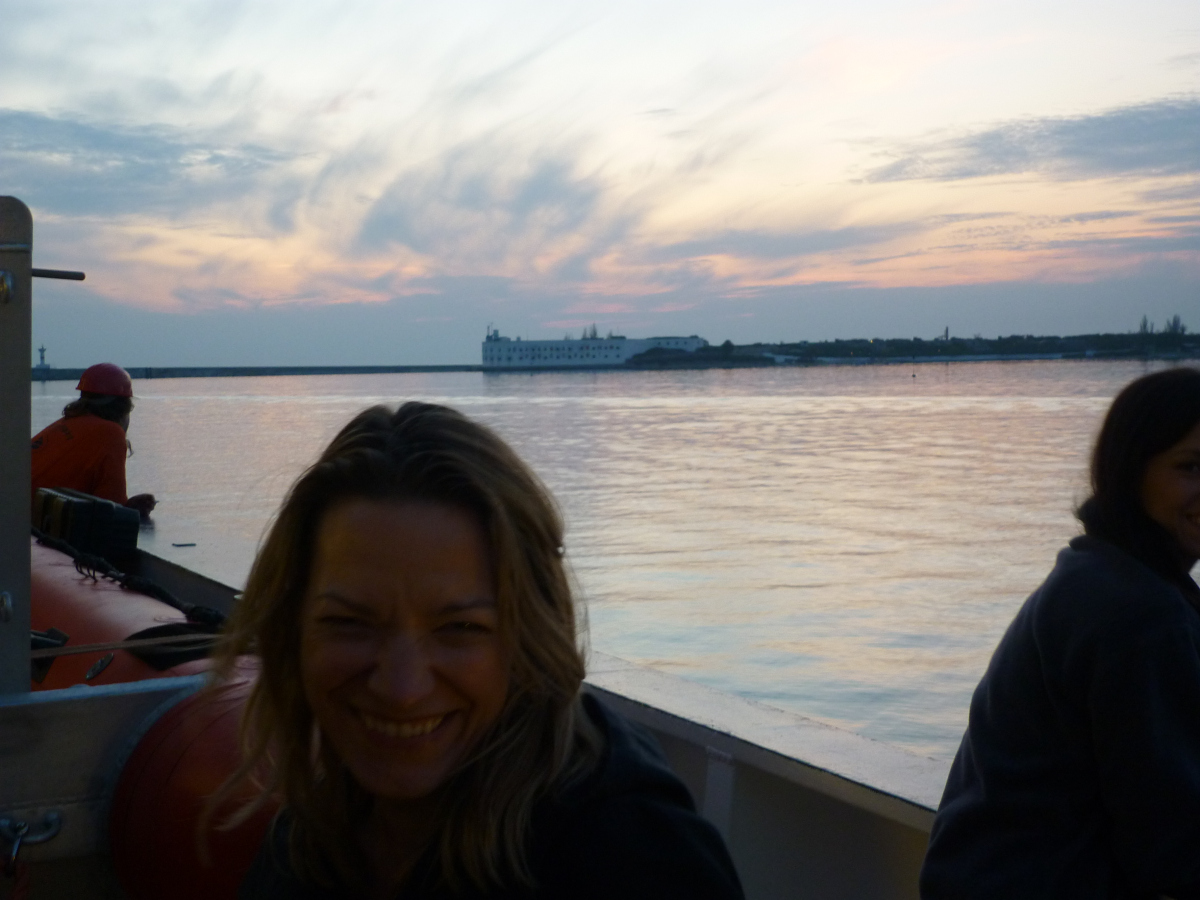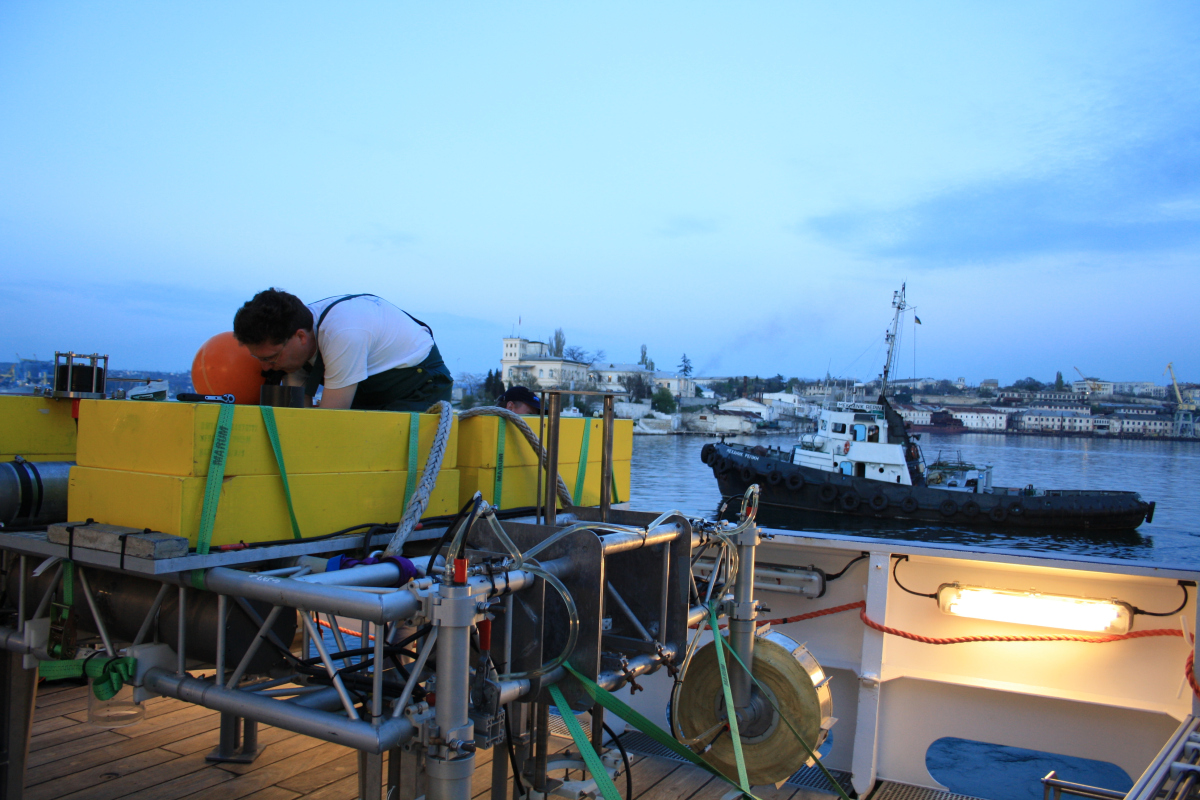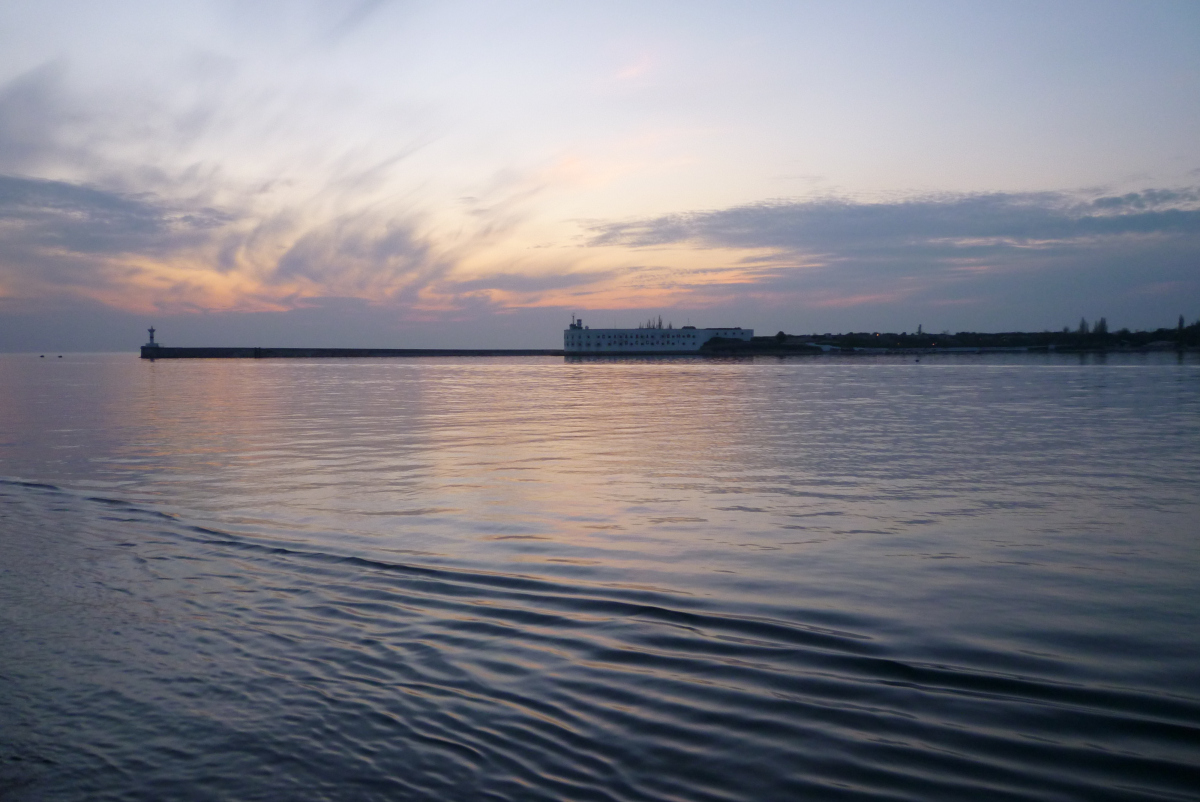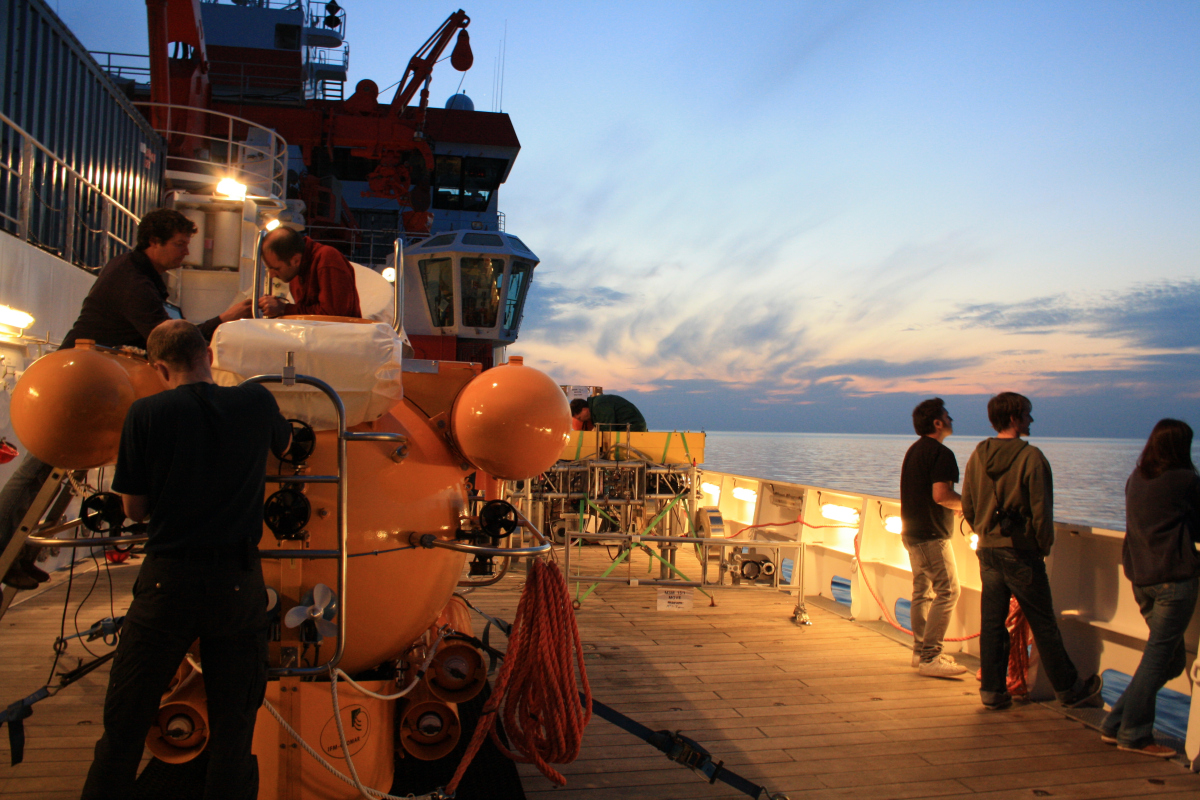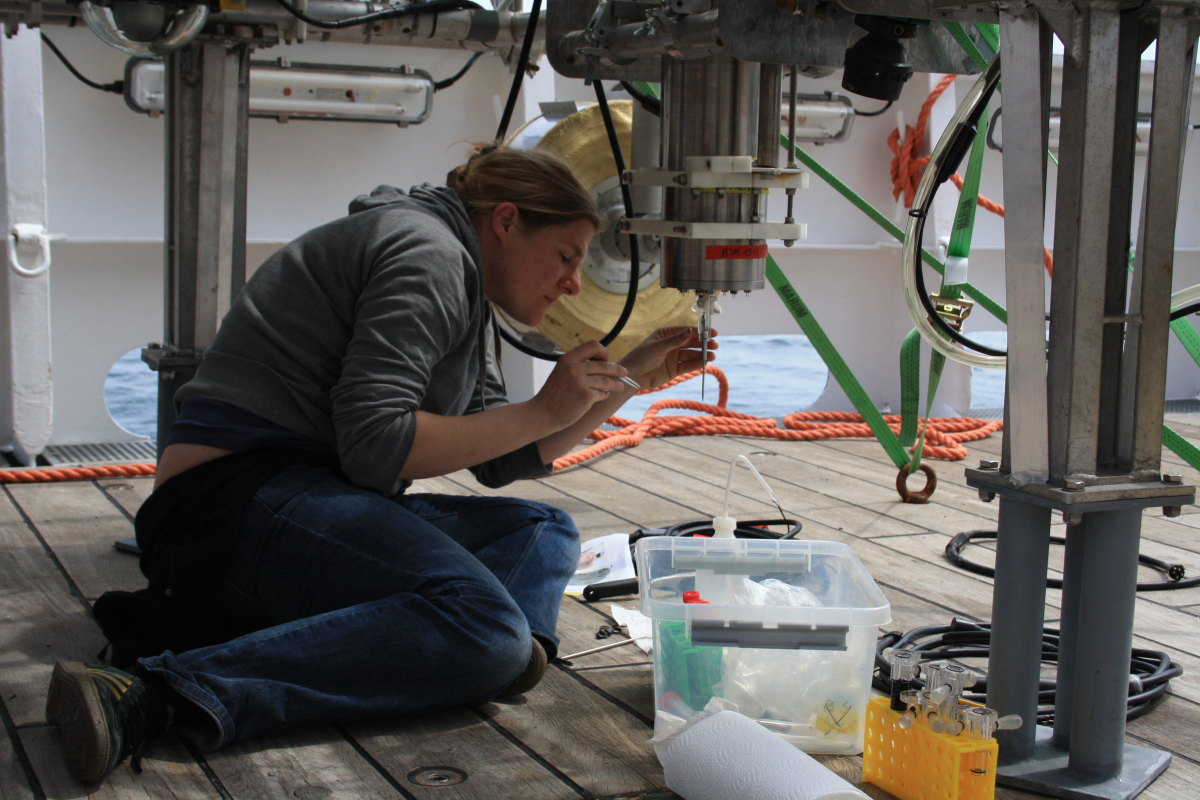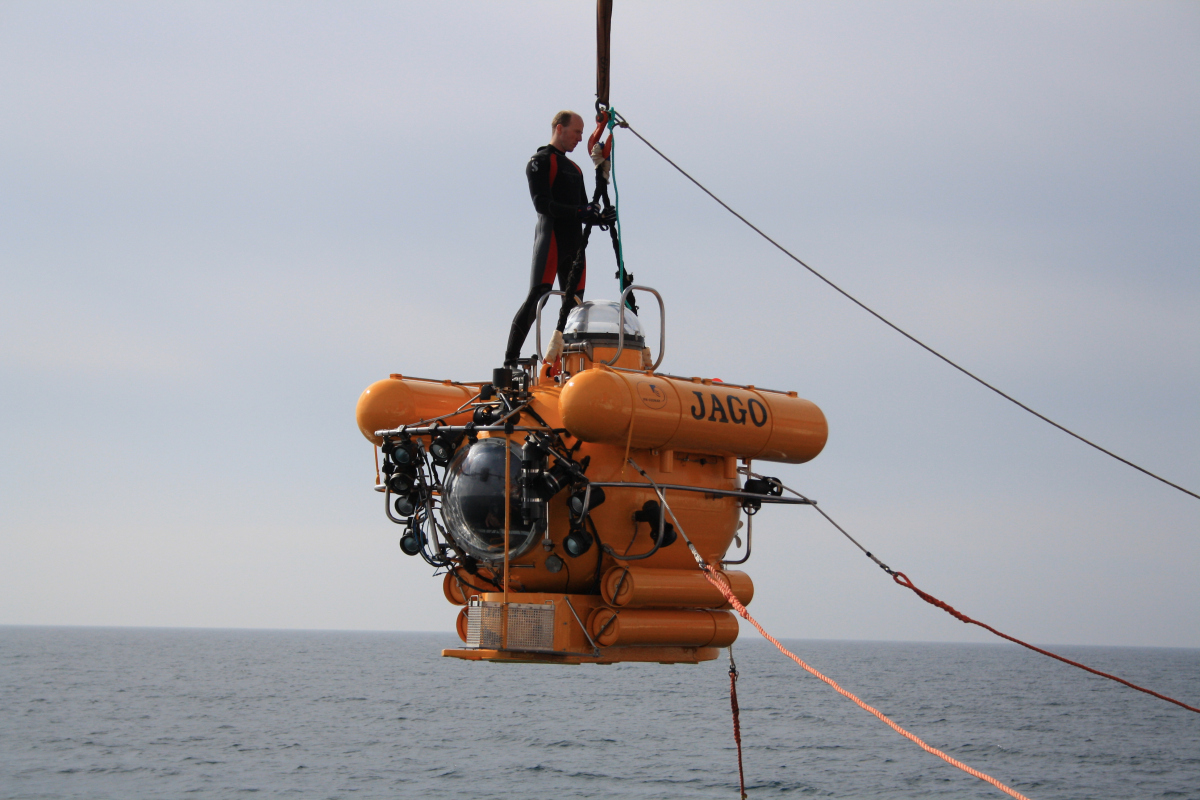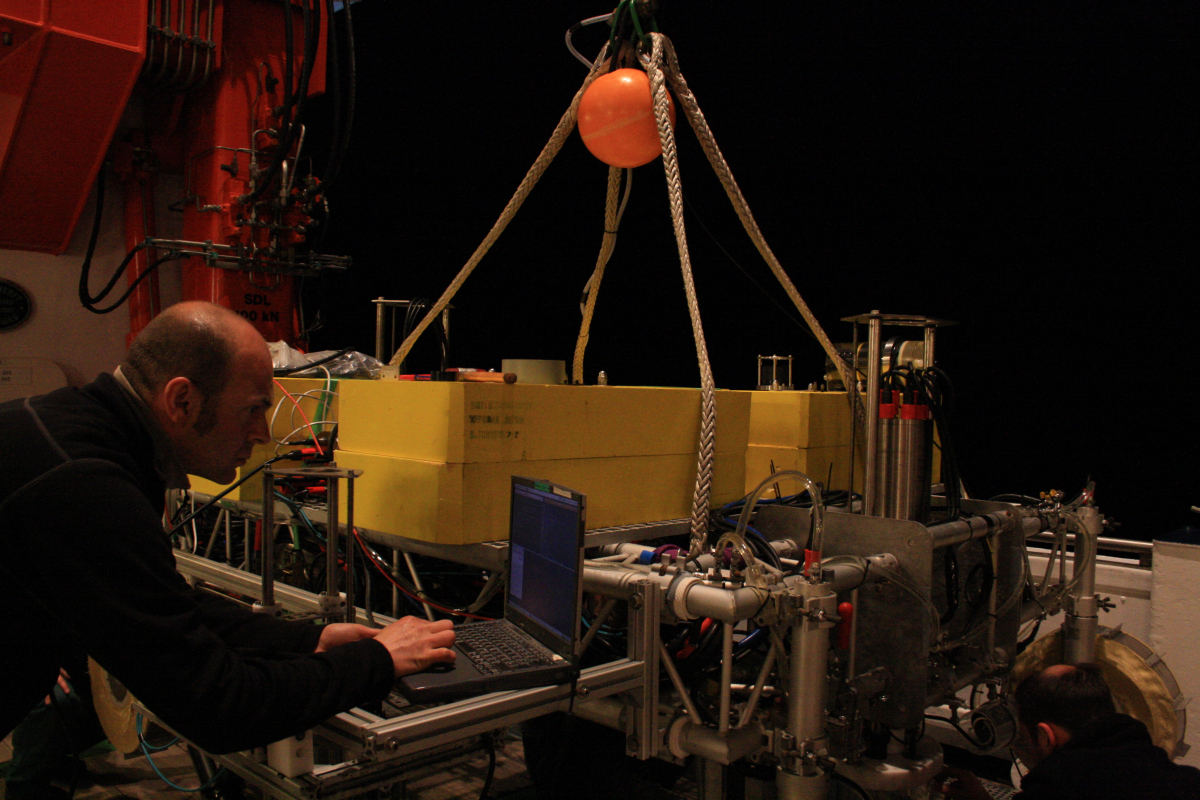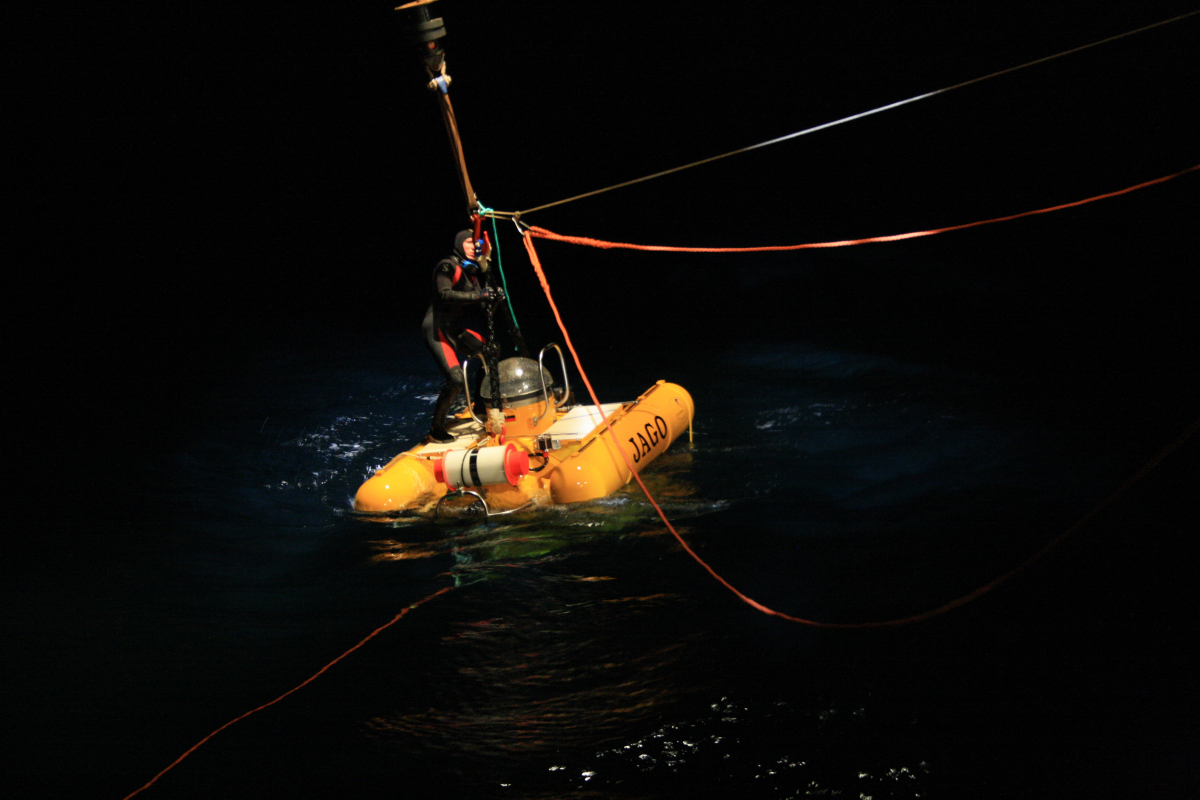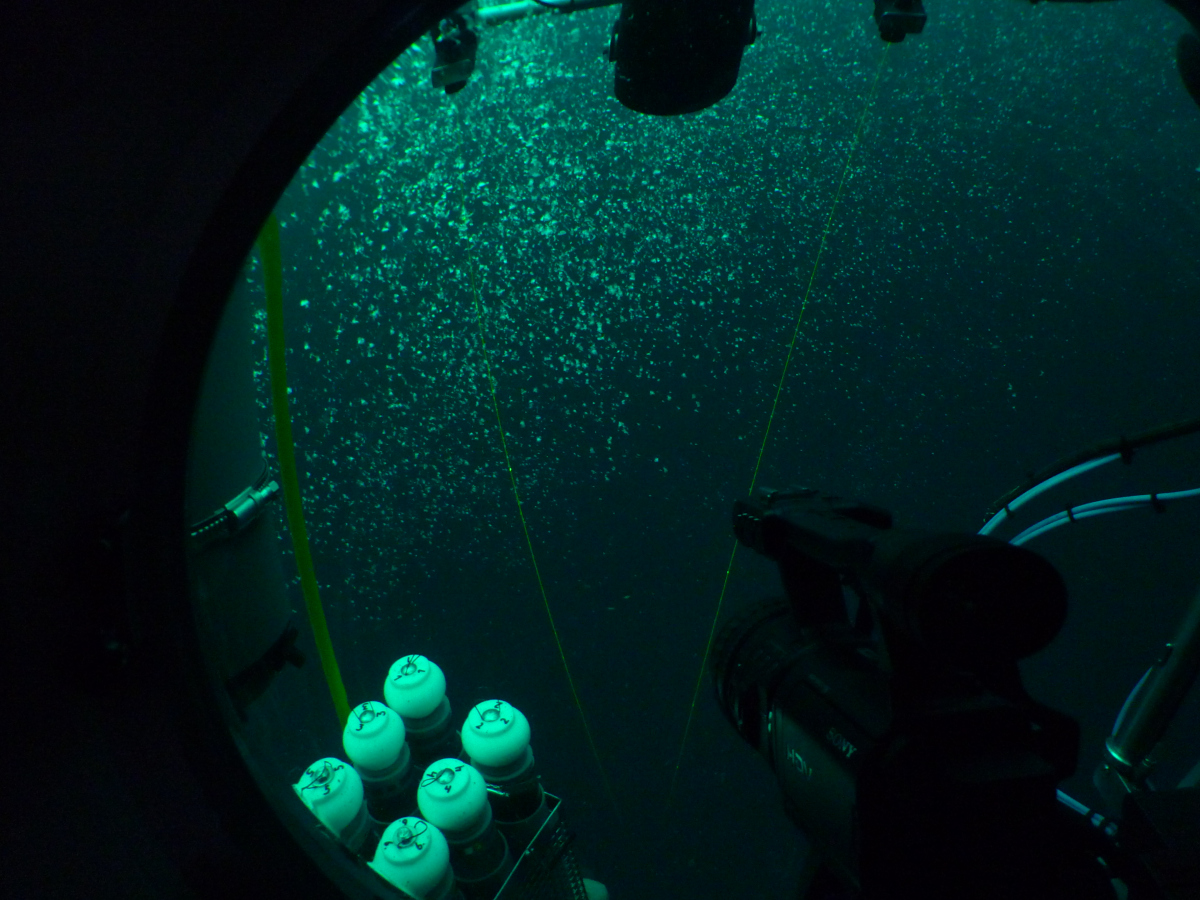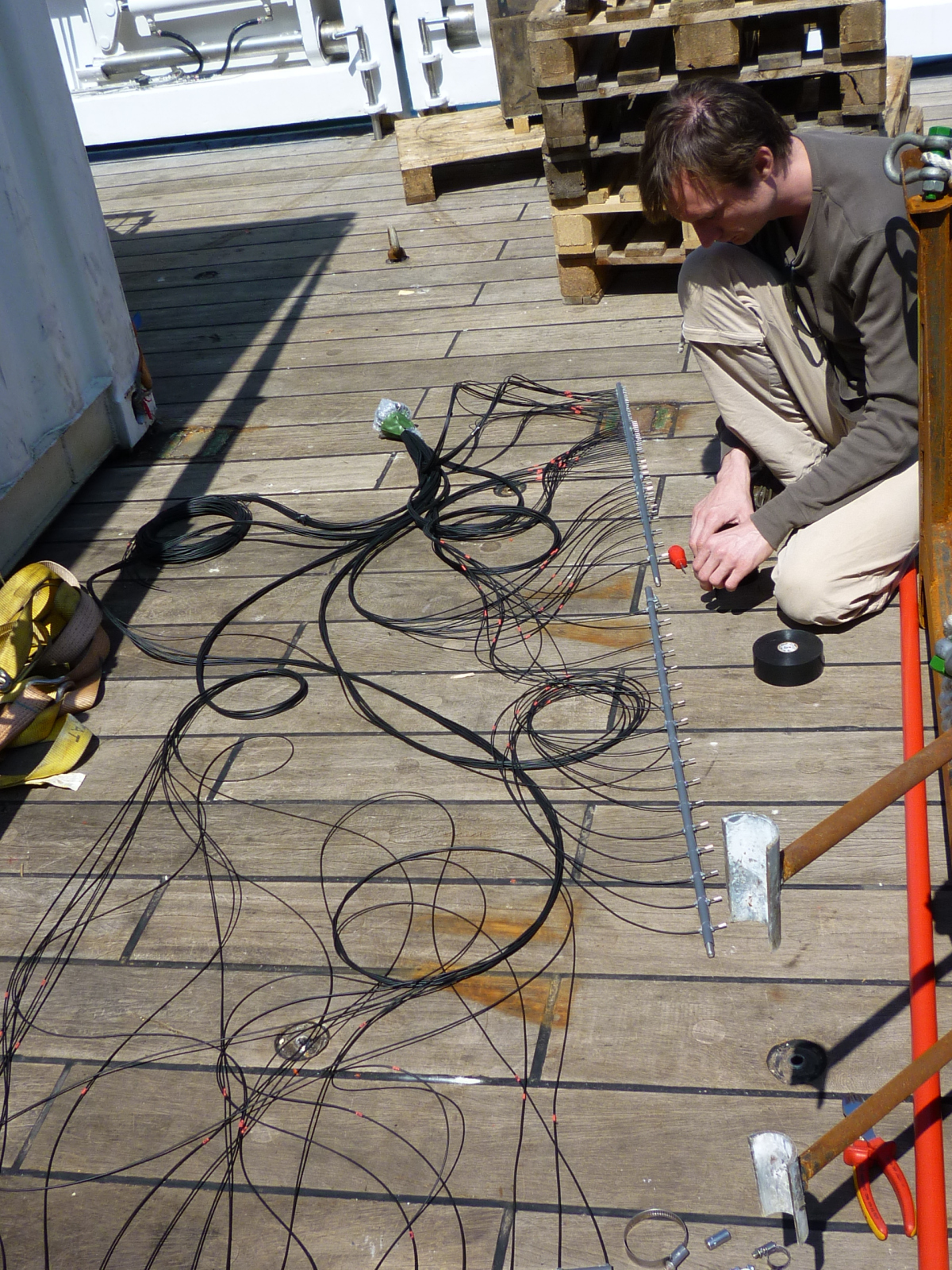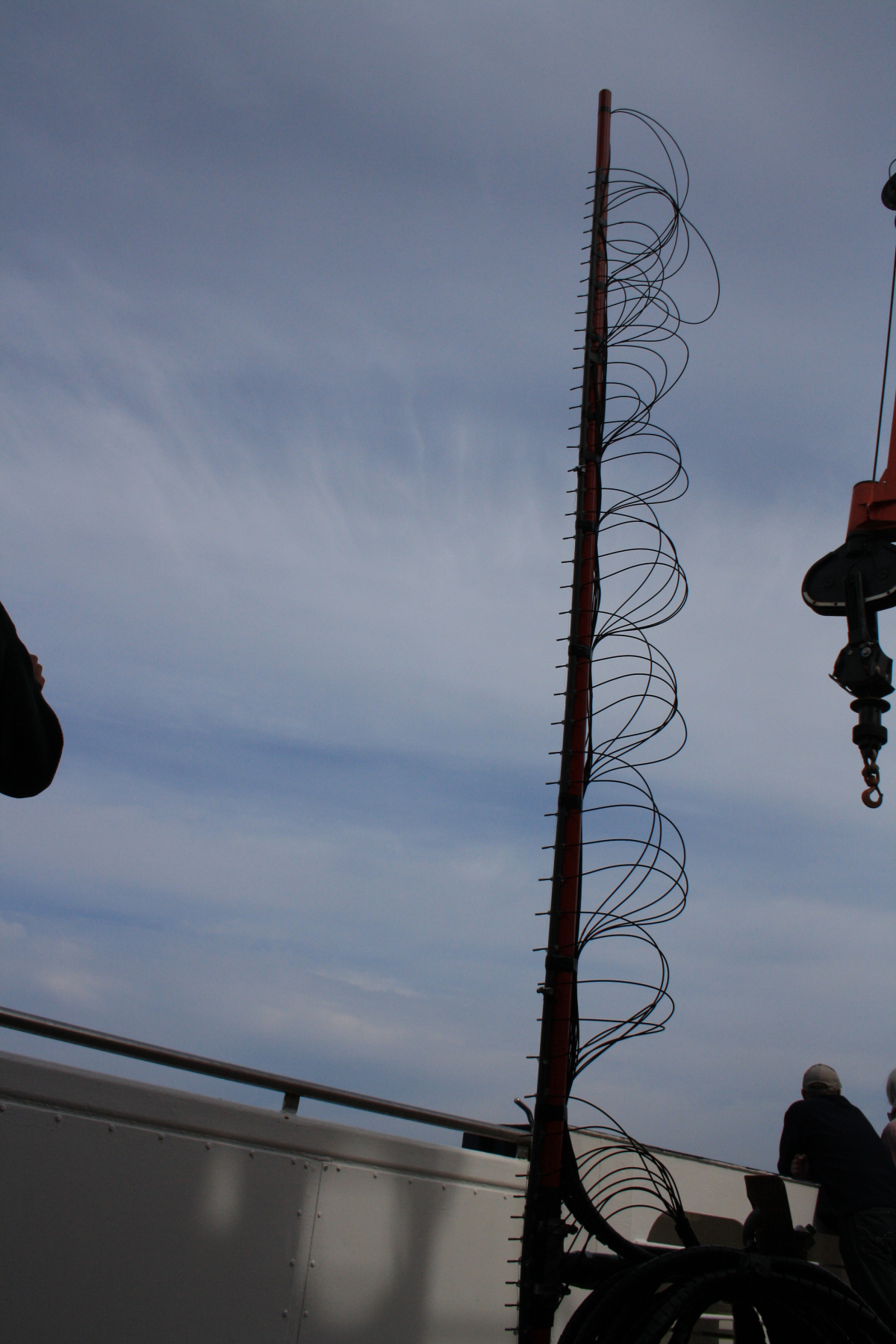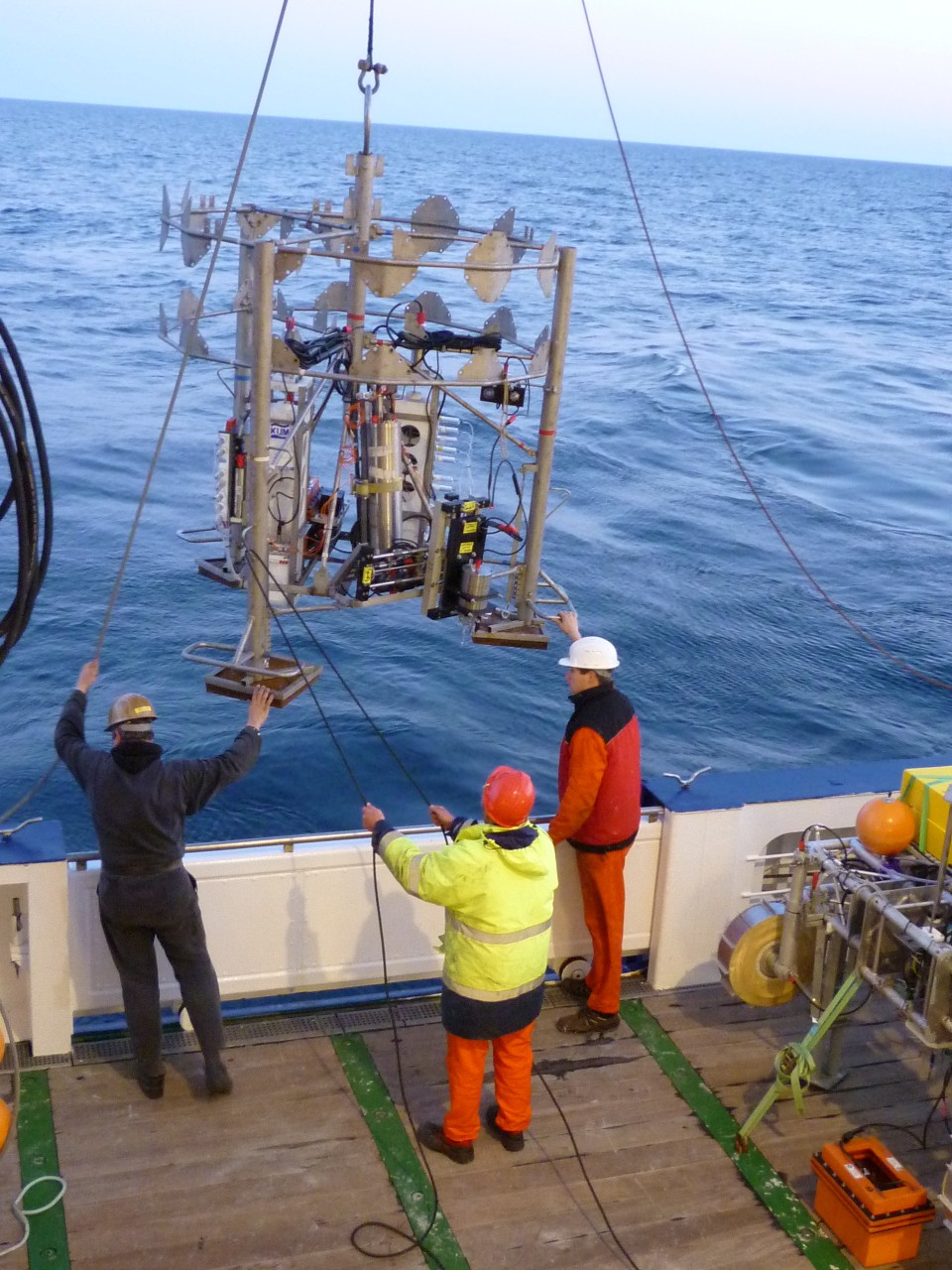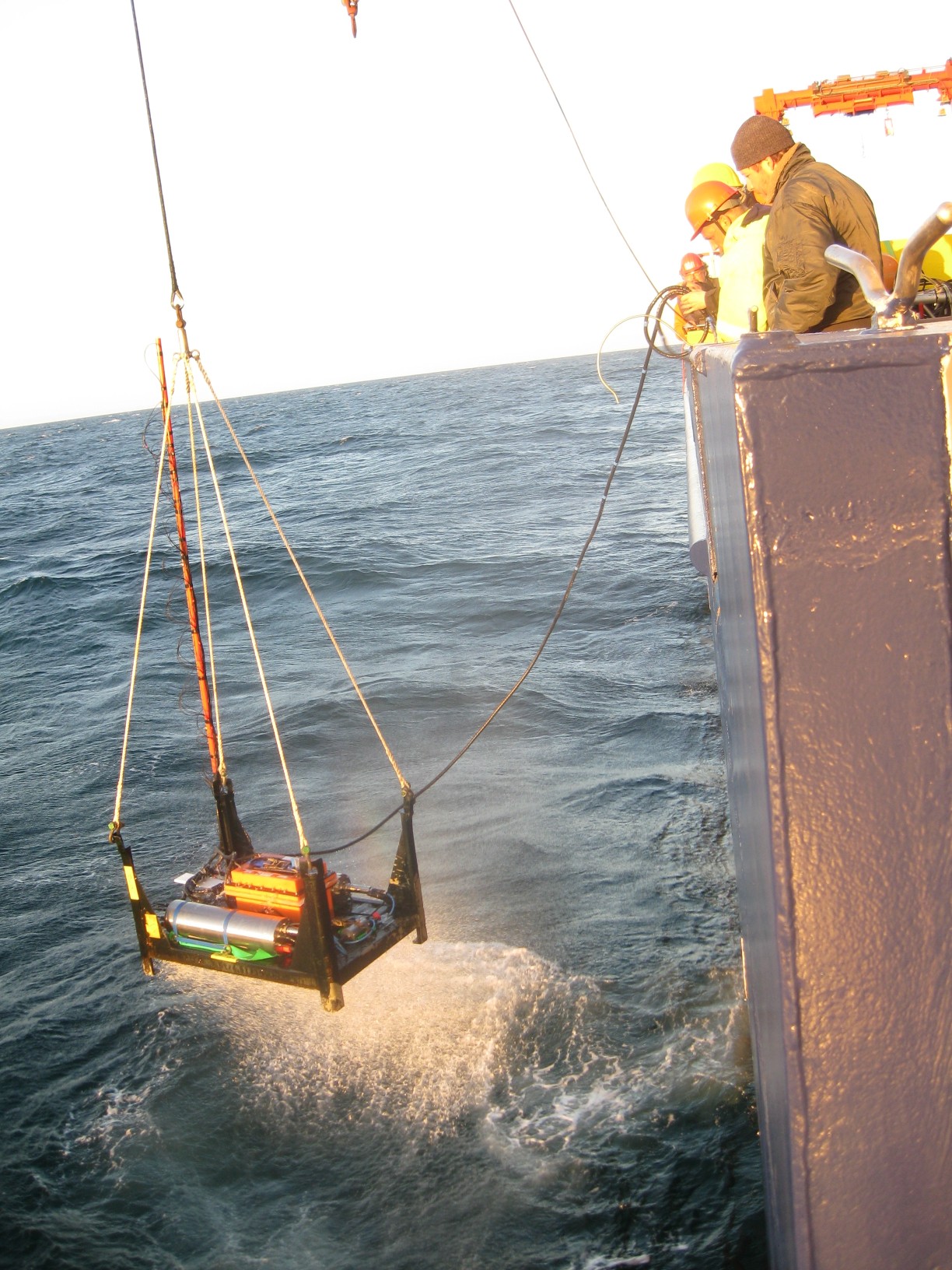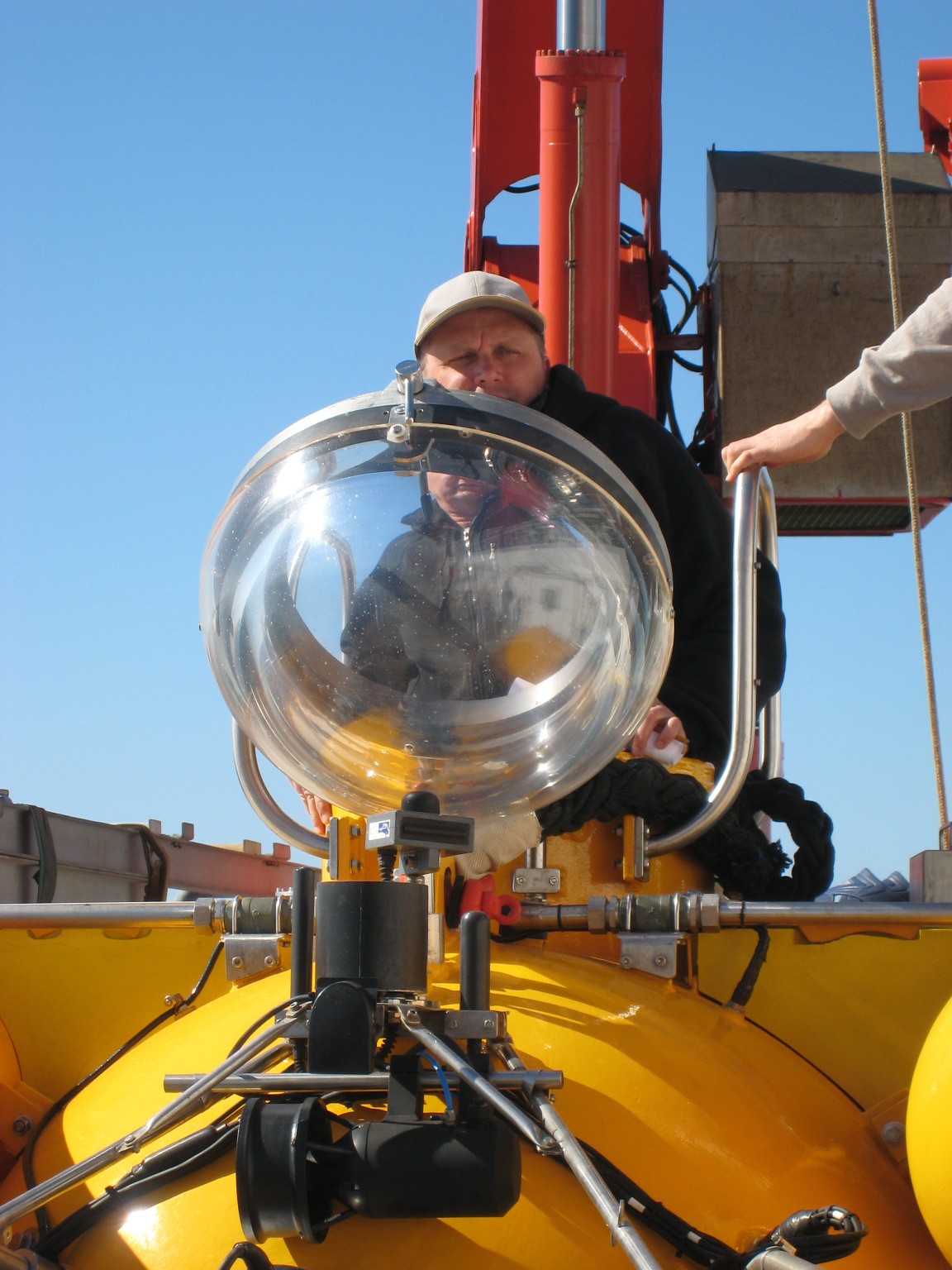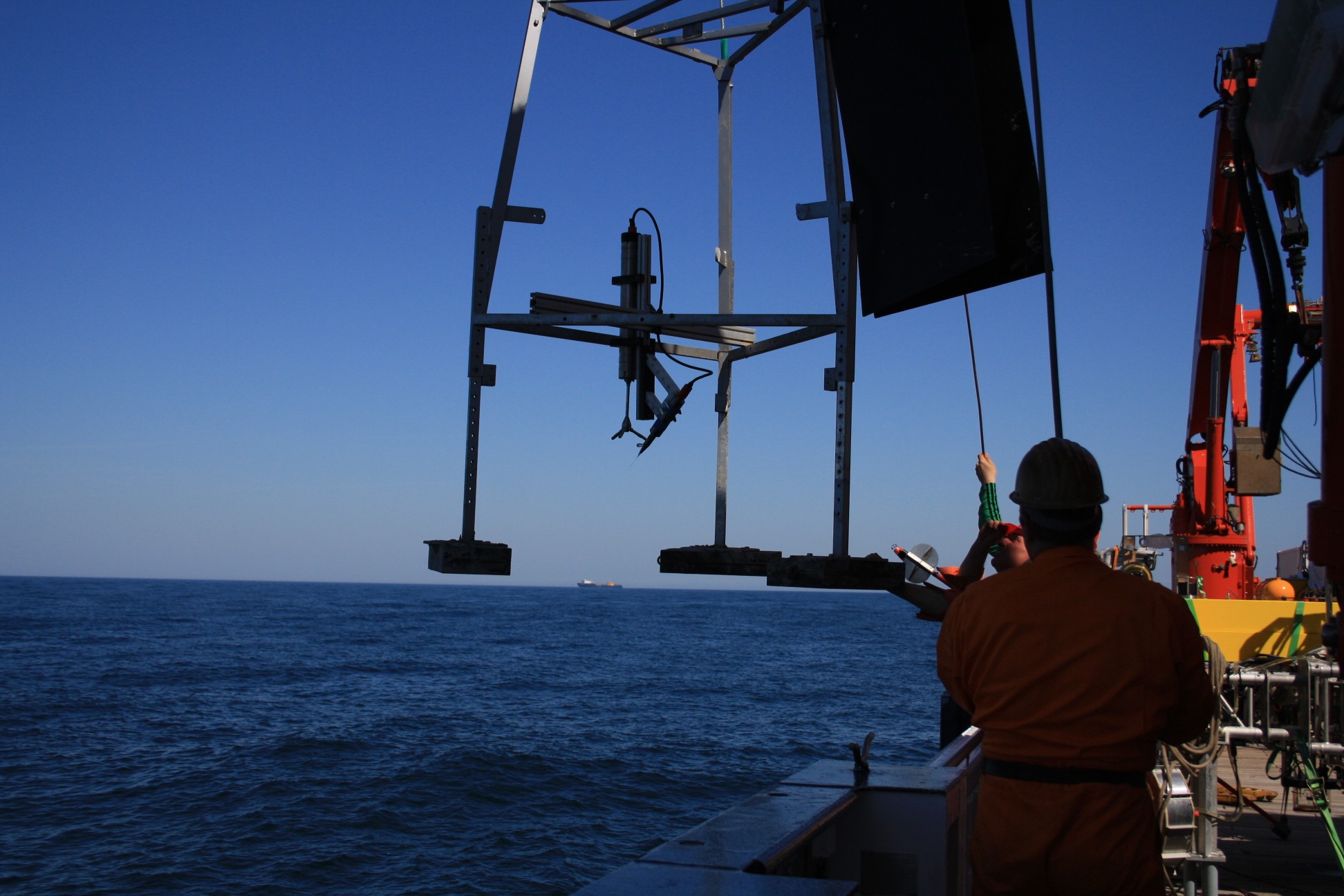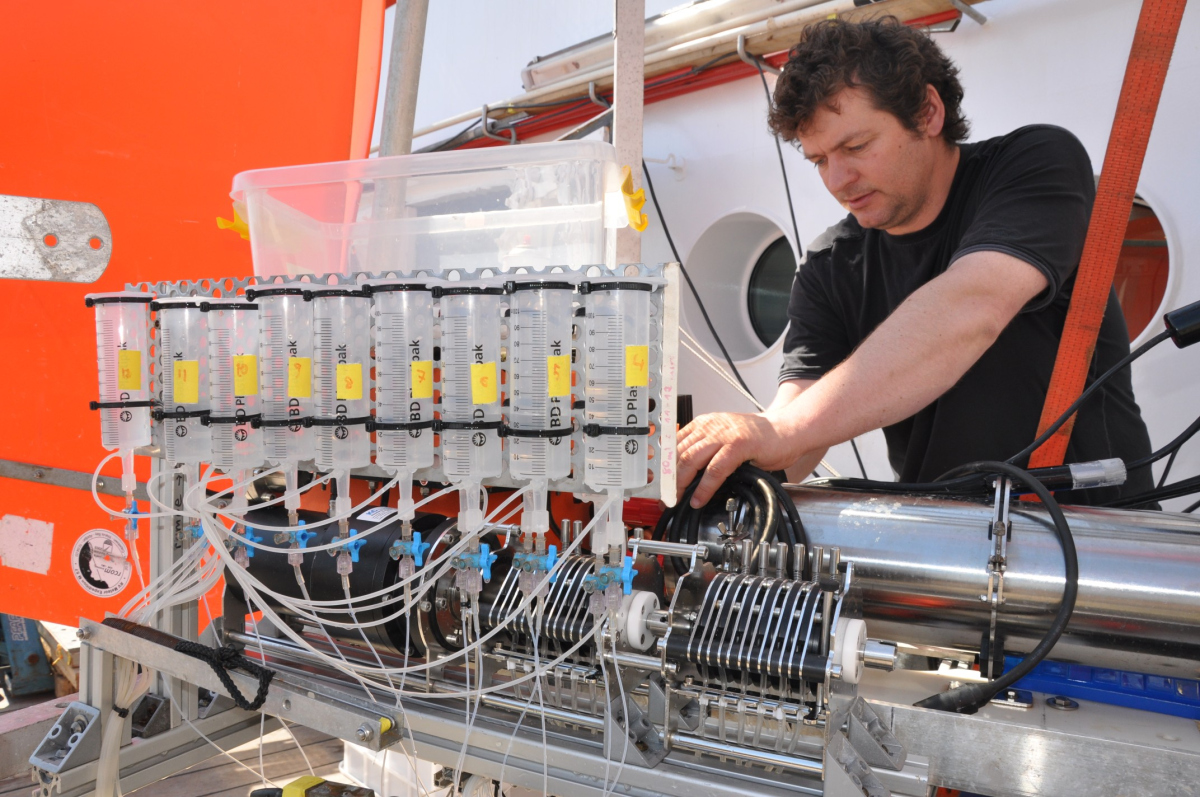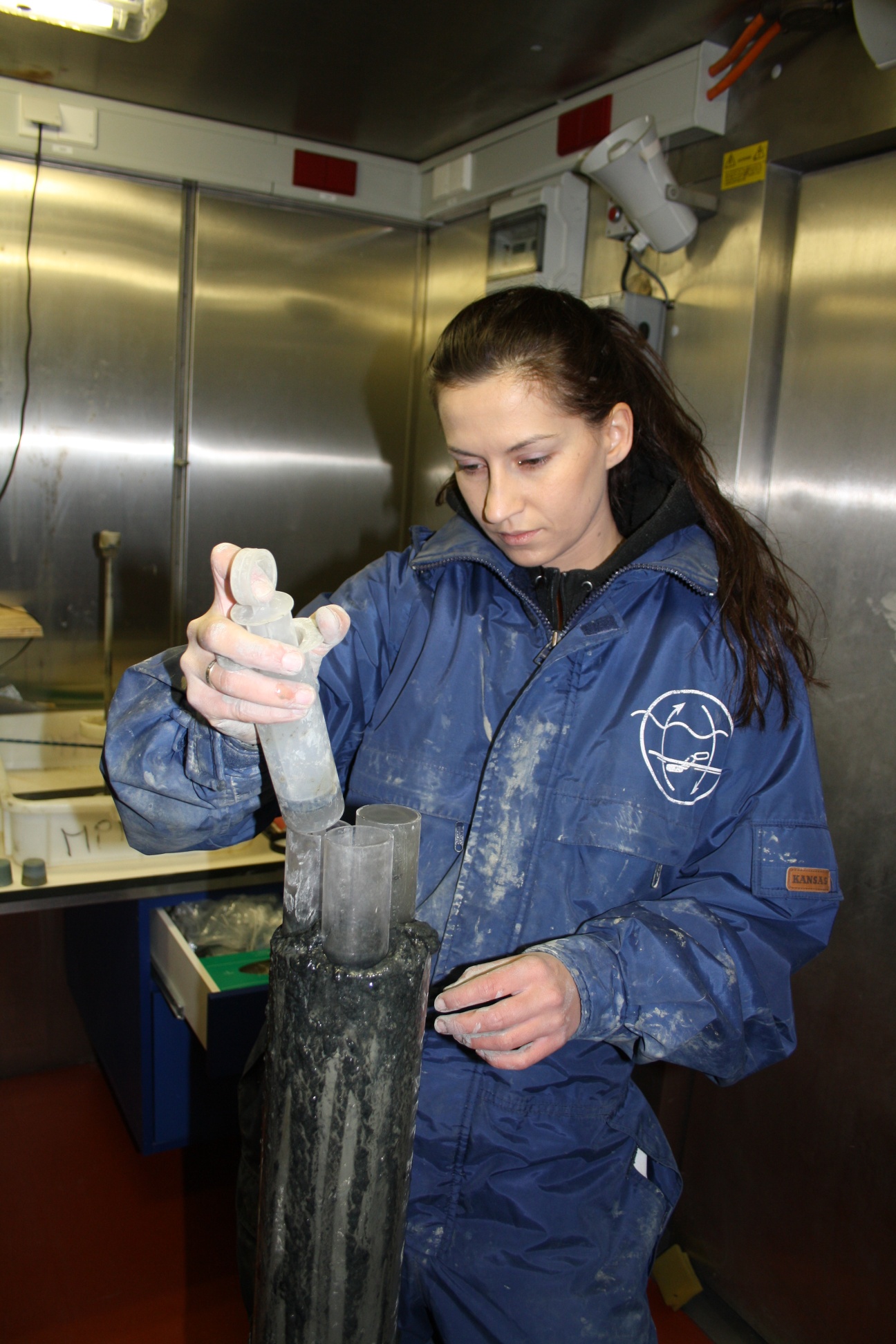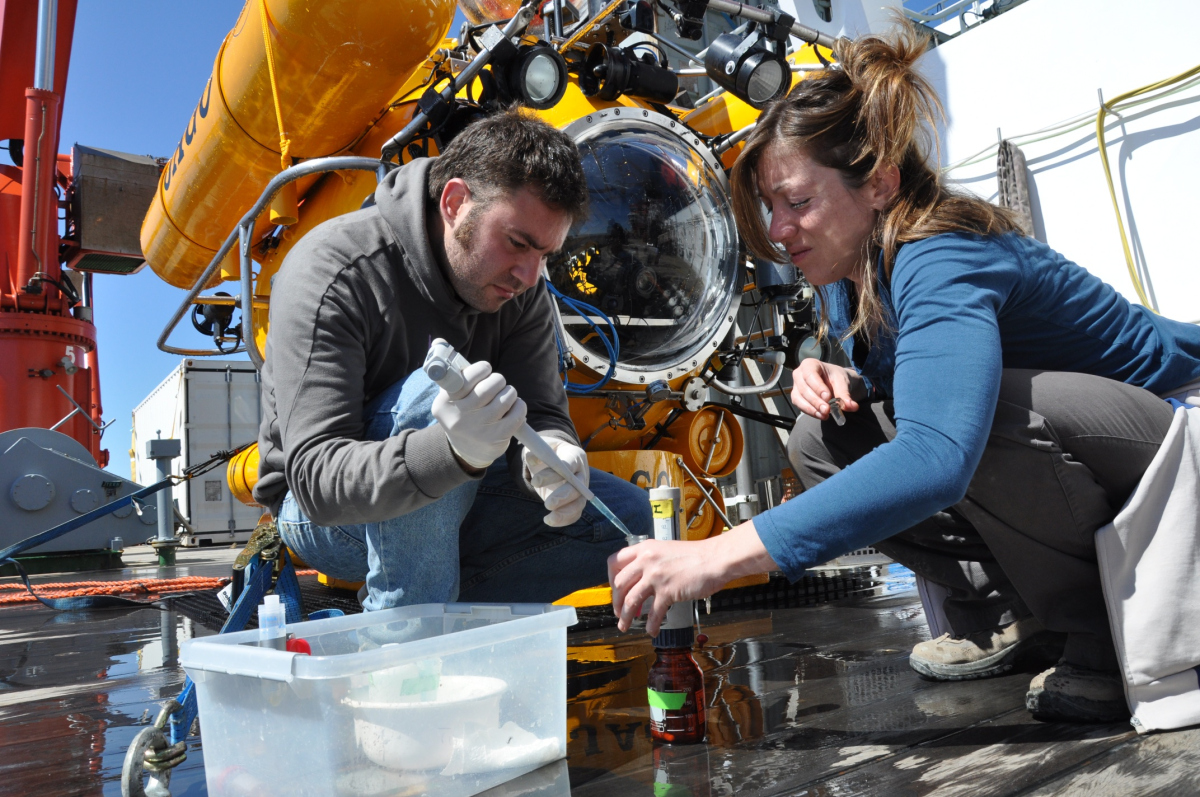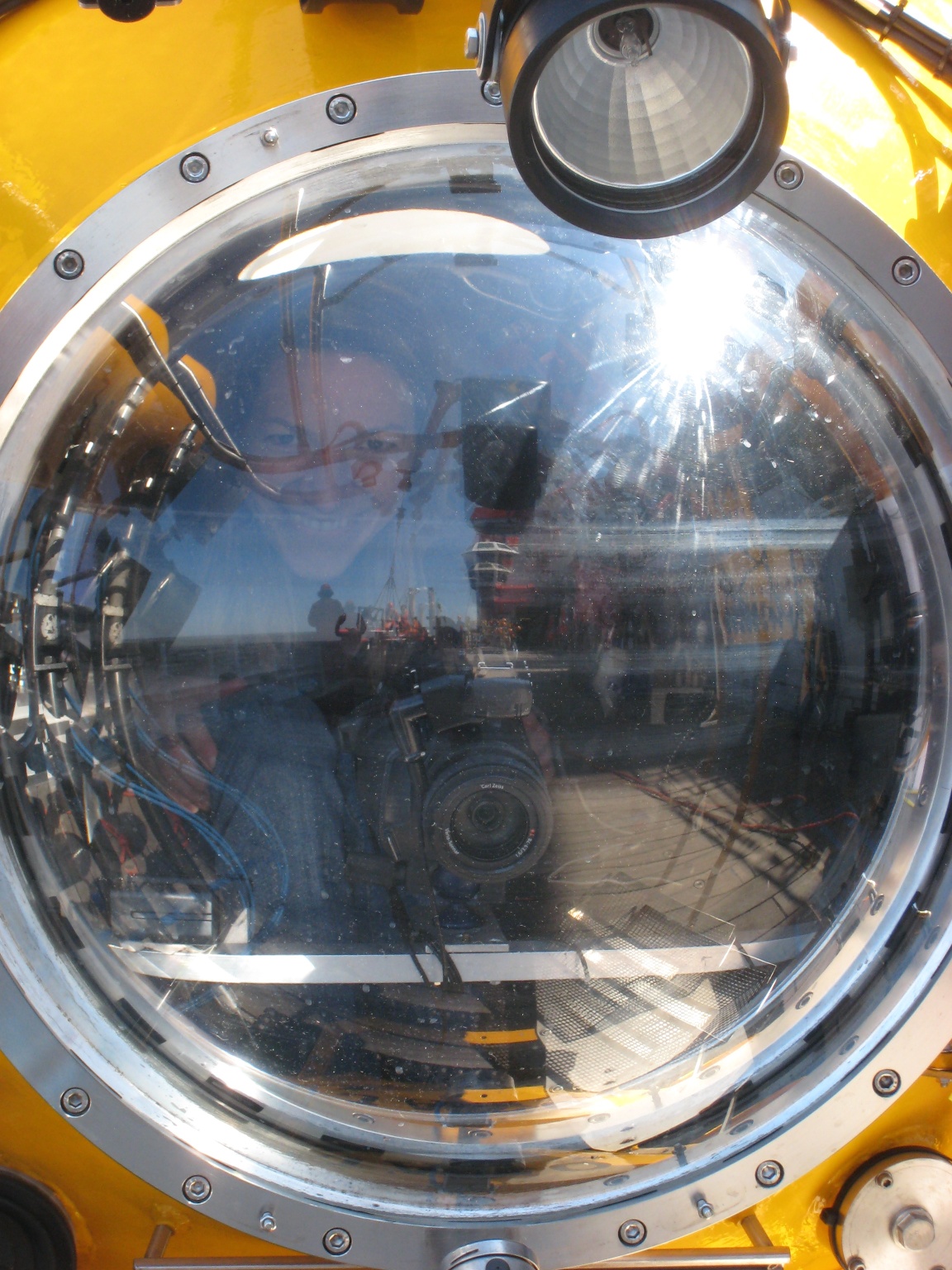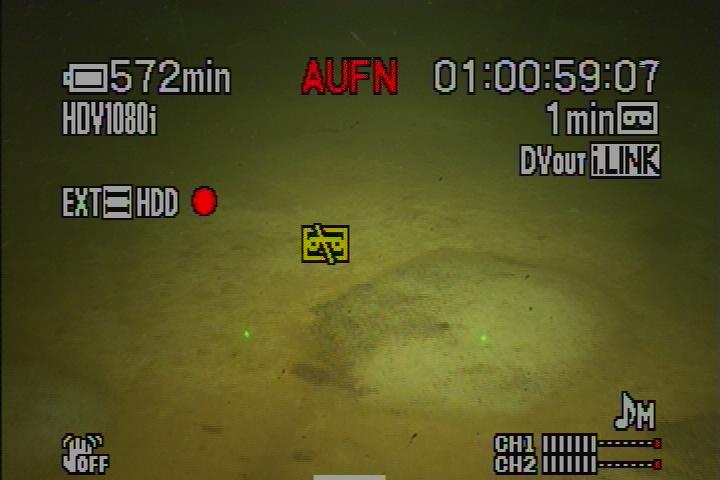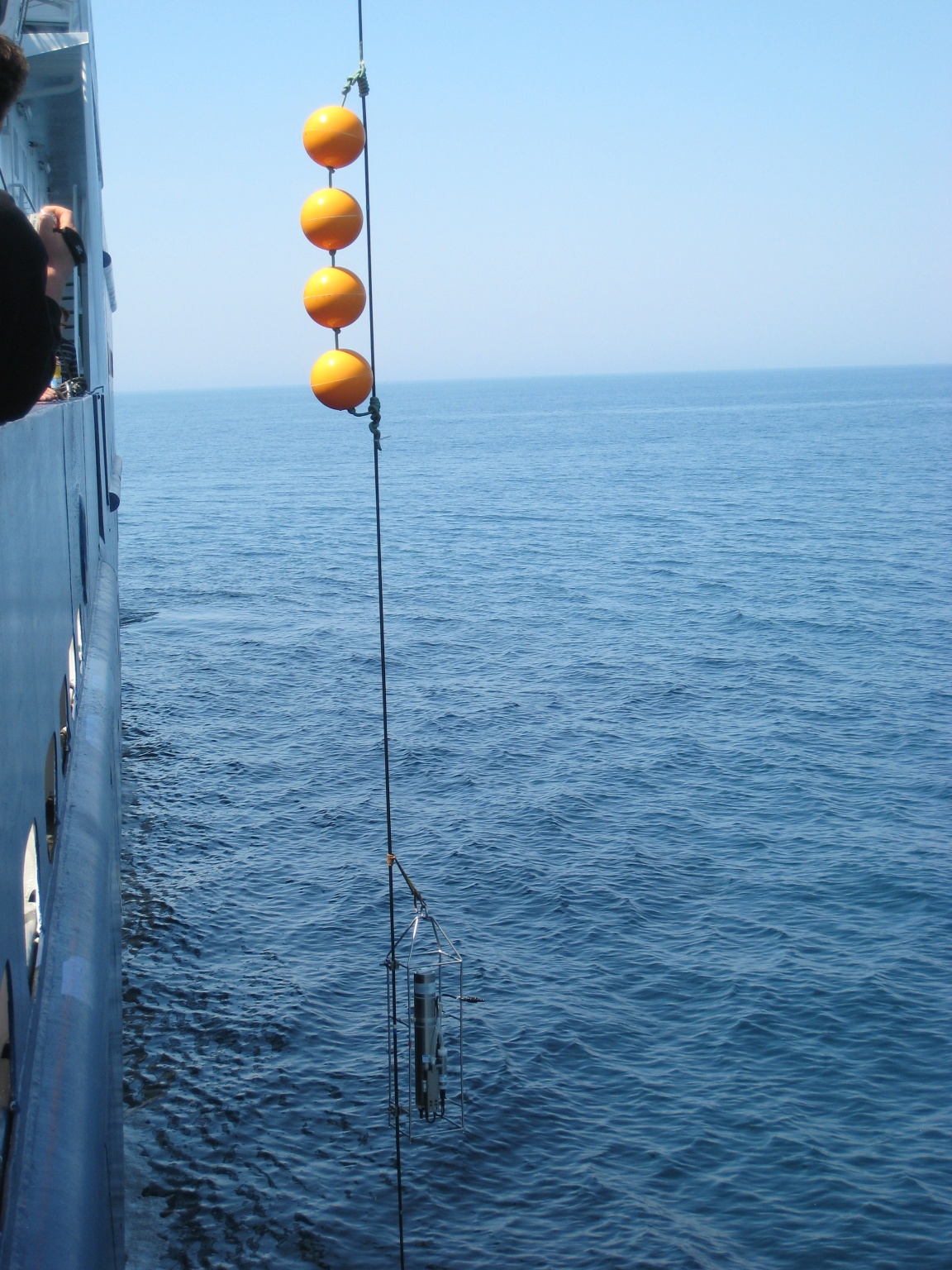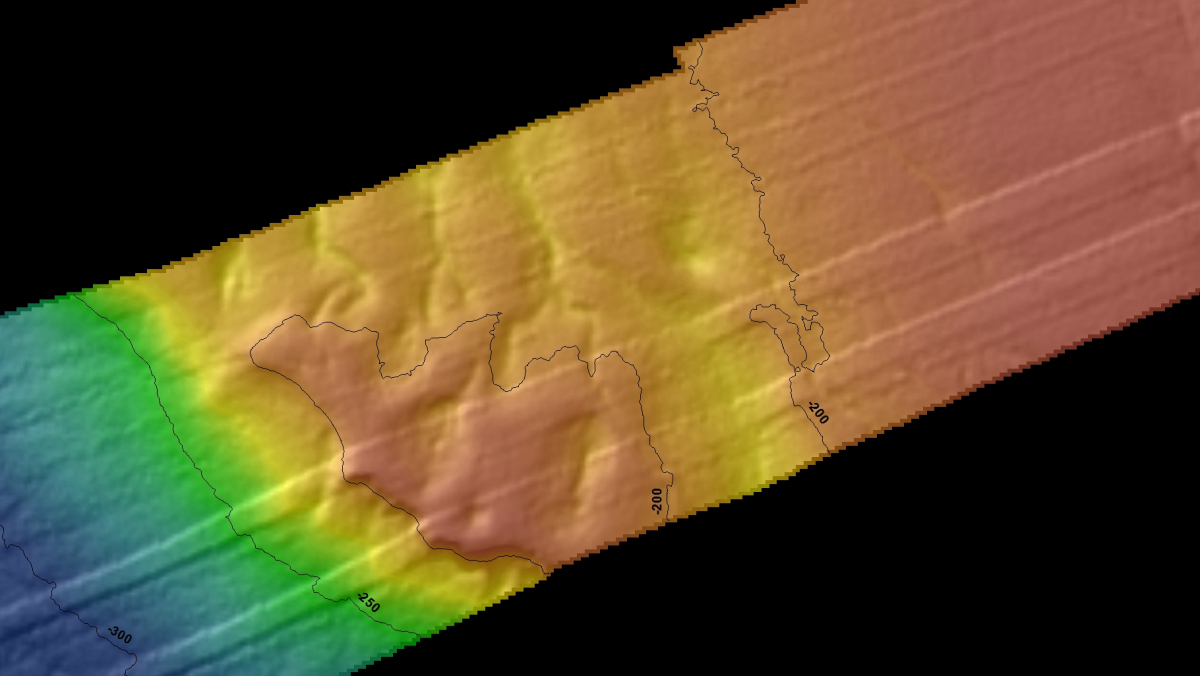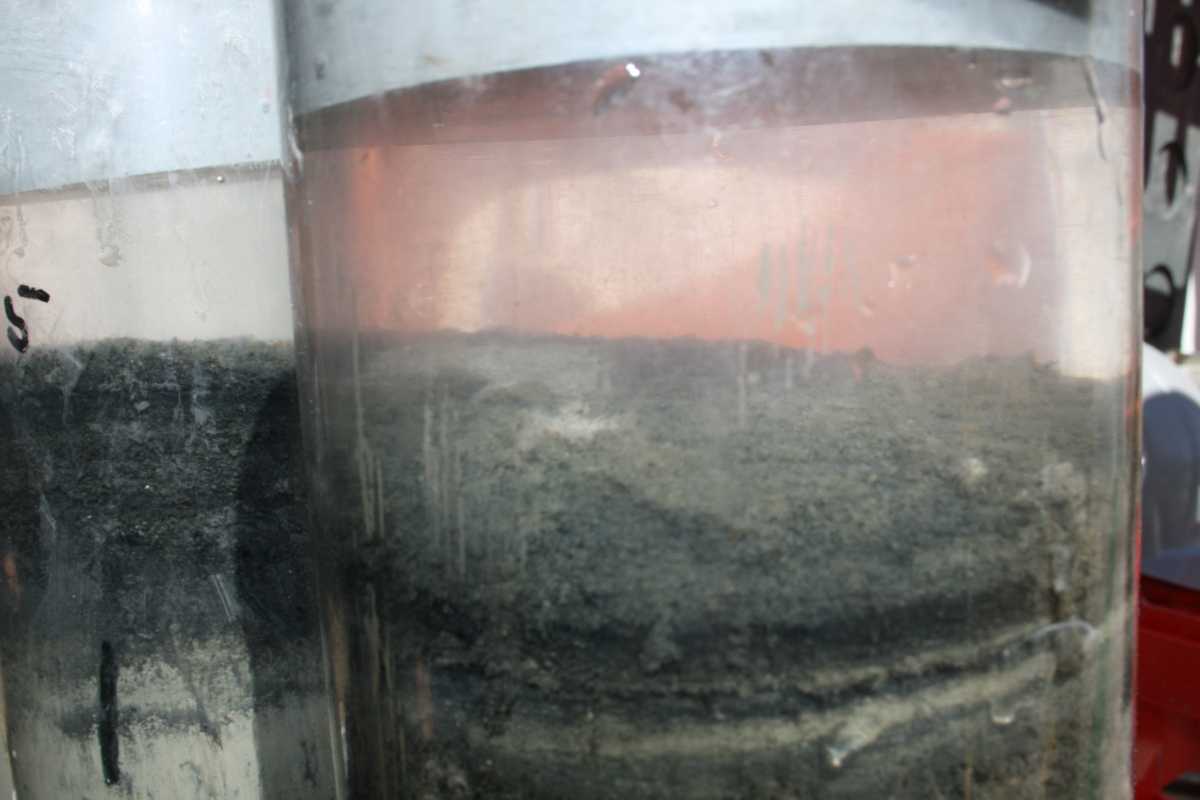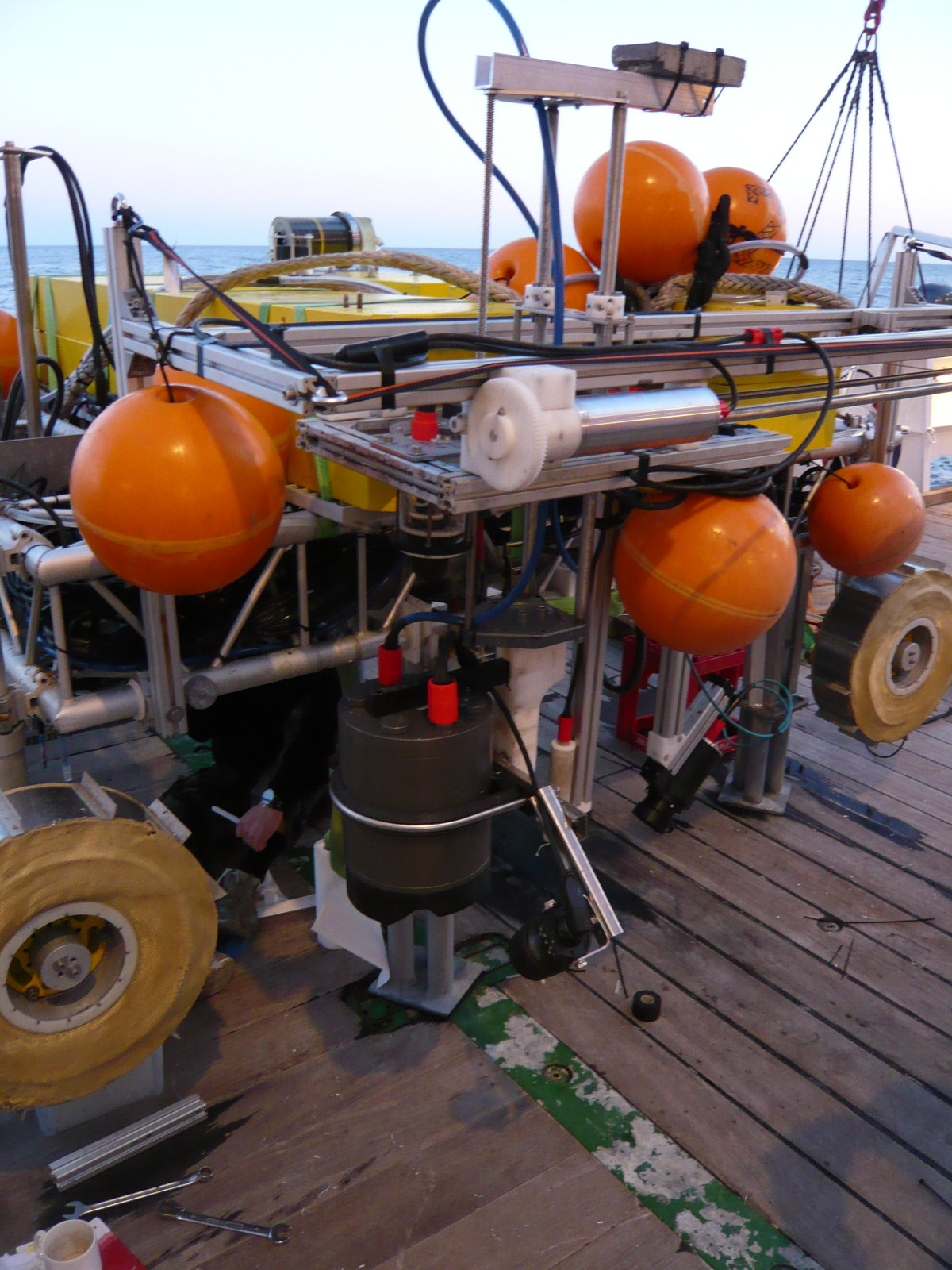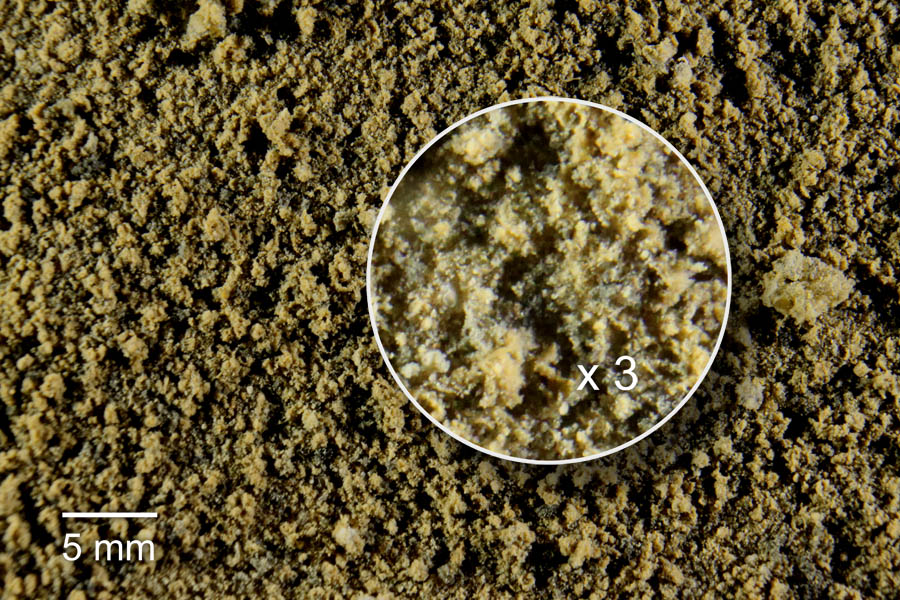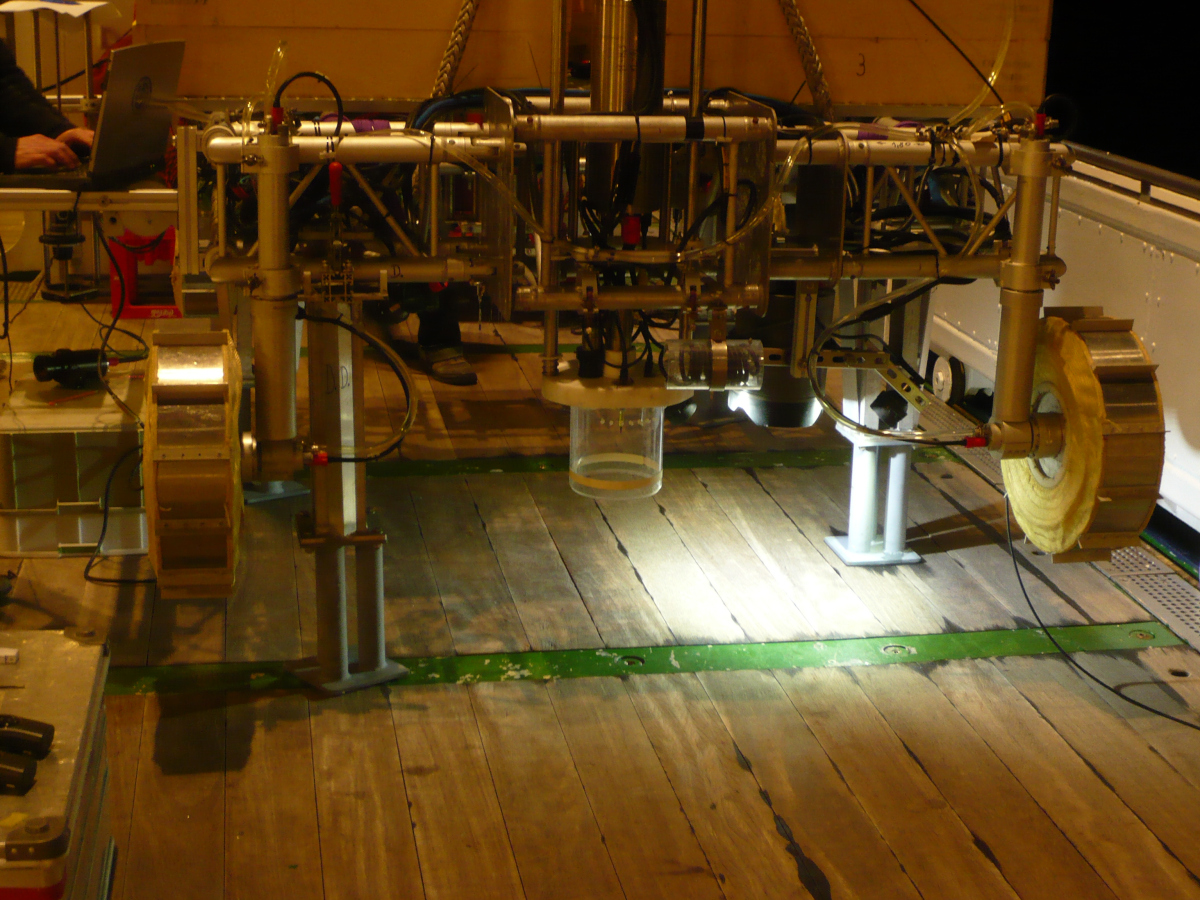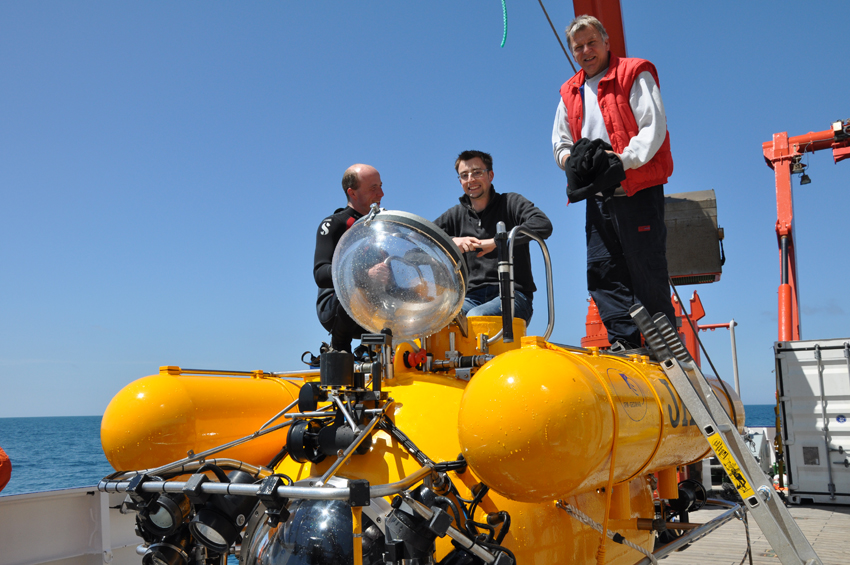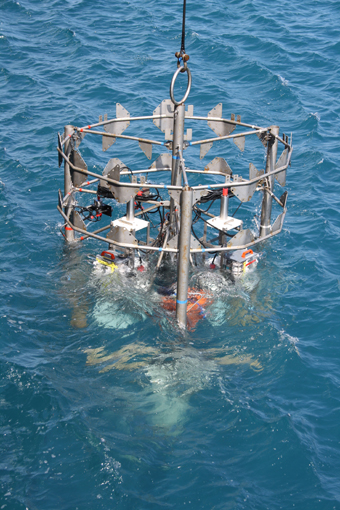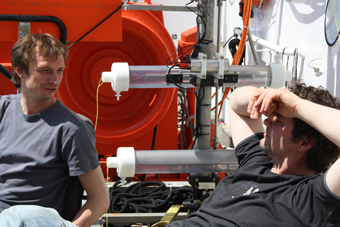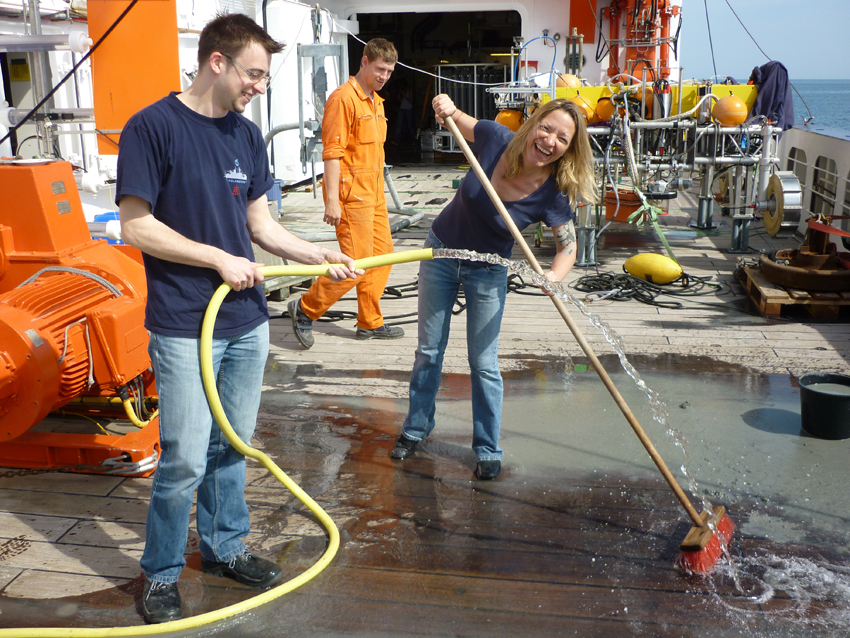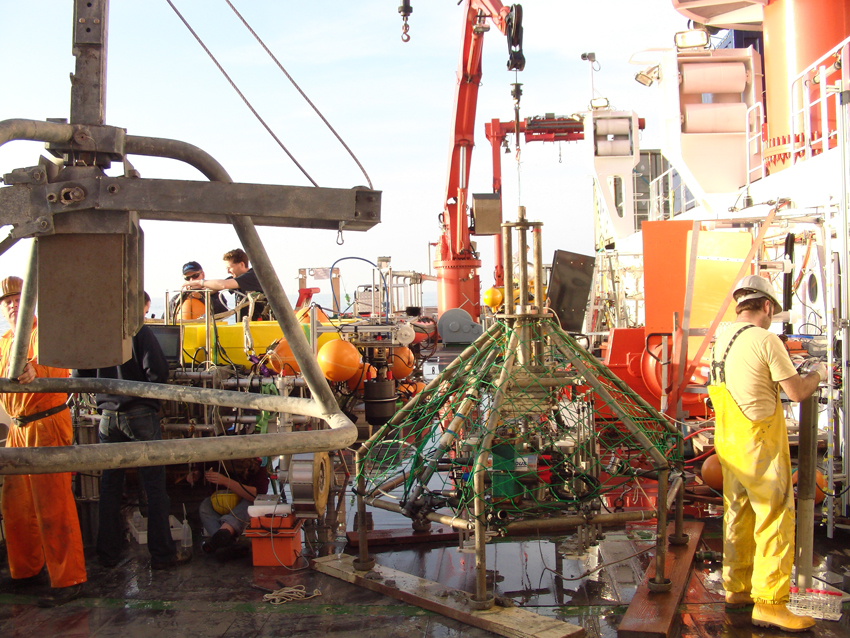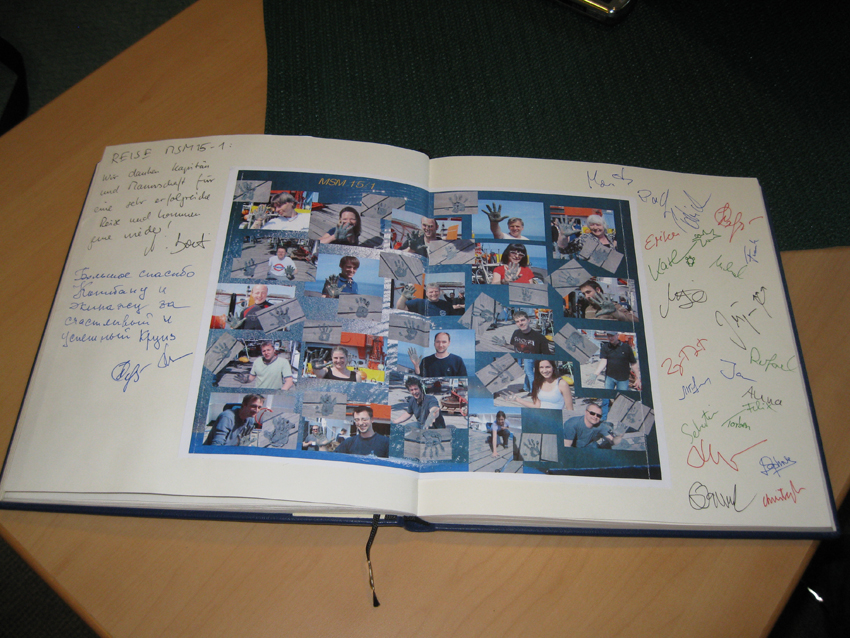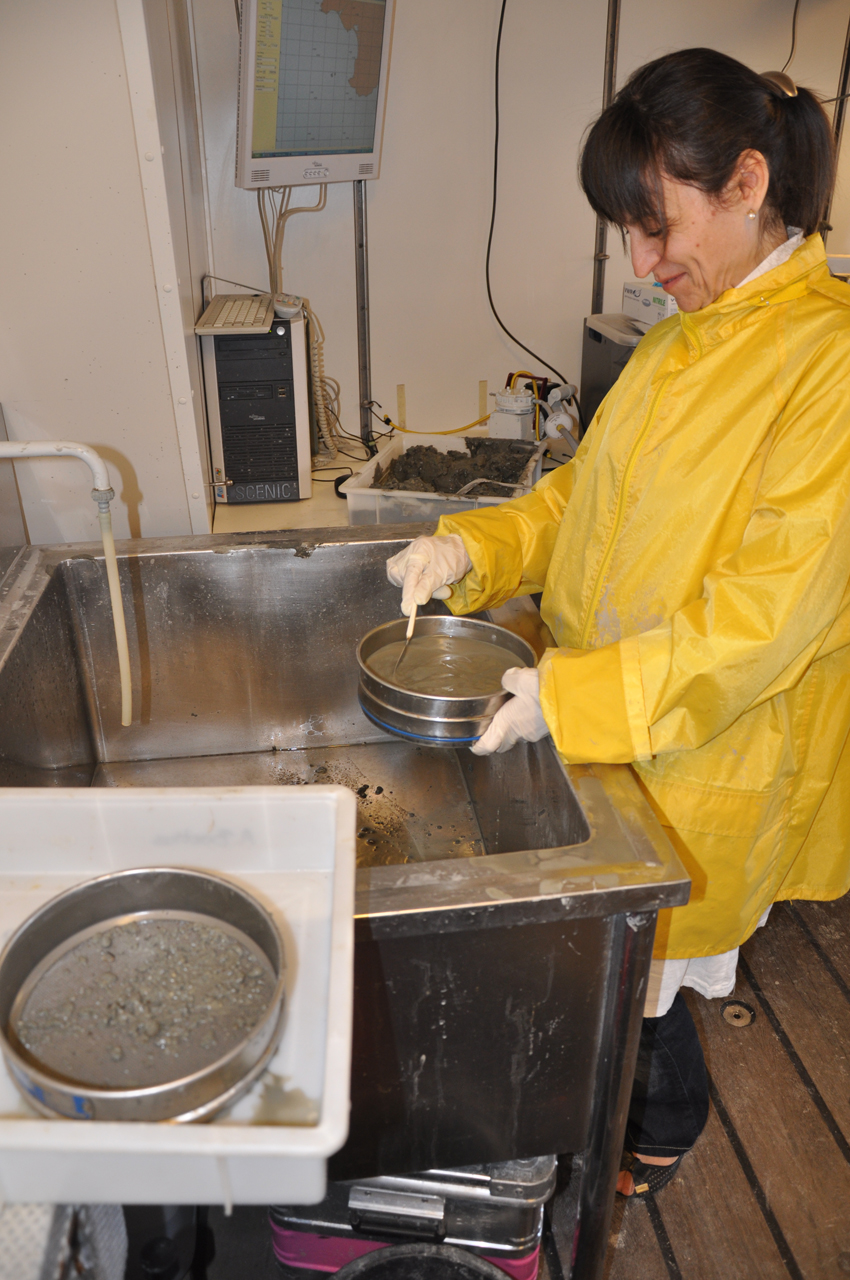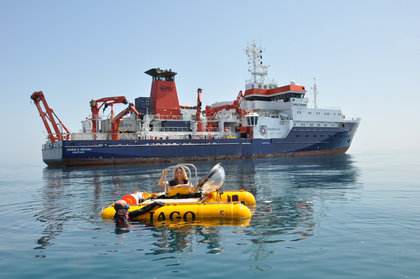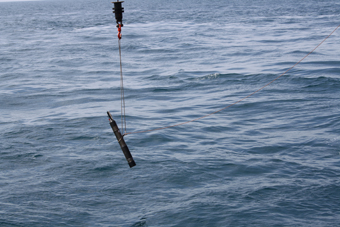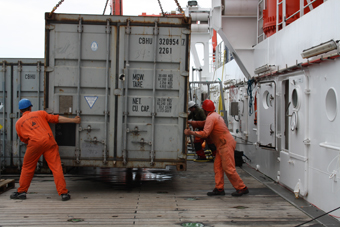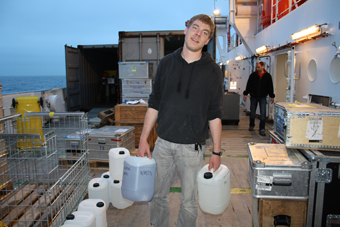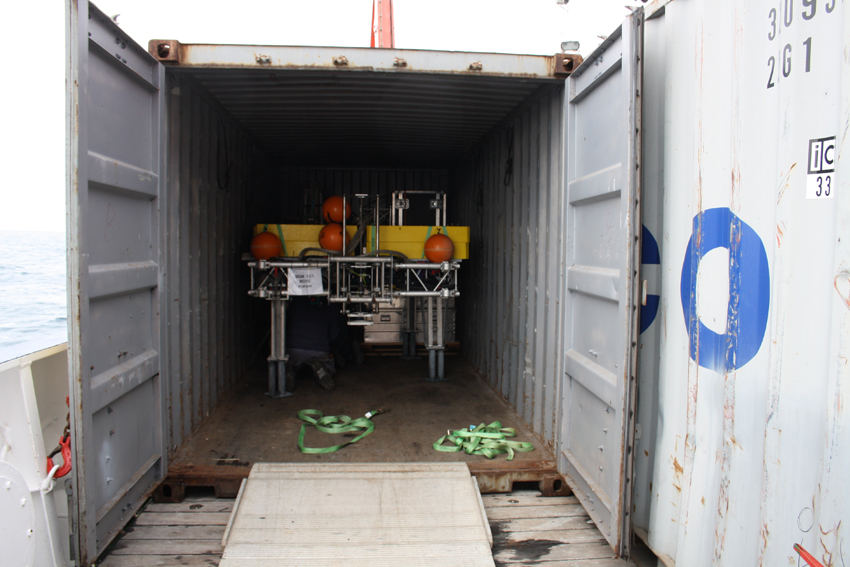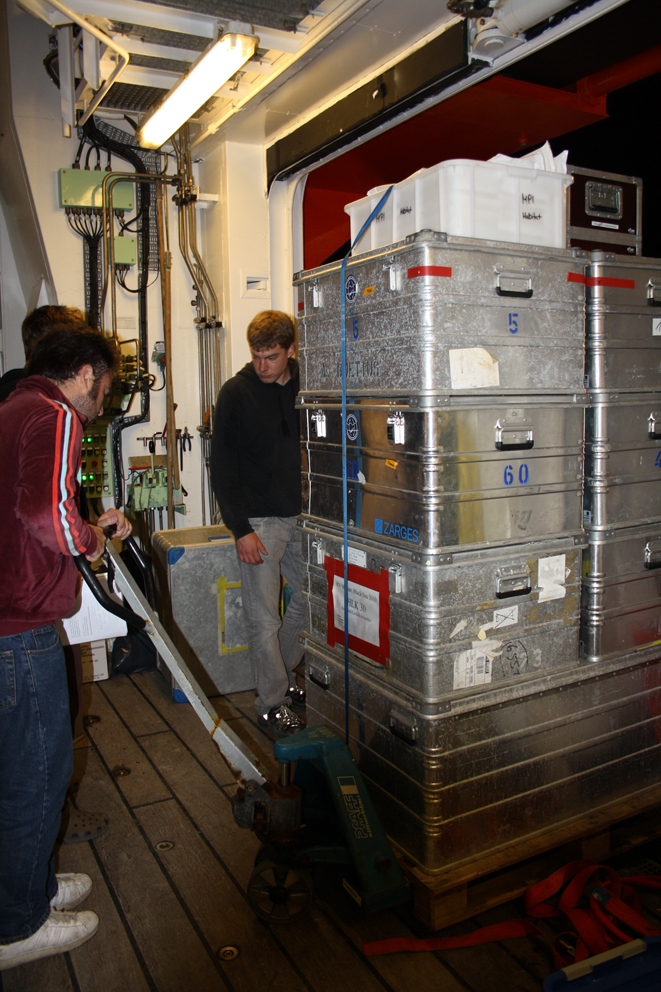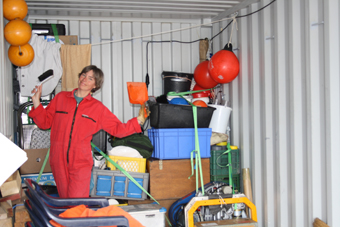Page path:
Weblog1 MSM 15-1
WEBLOG #1
Merian Expedition MSM15-1 Web Log 12.April -21. April
The first week of HYPOX research on board RV “Maria S. Merian”
Blog authors: Felix Janssen and Antje Boetius
09 April 2010
On Friday, 9 April 2010, 23 scientists and technicians travel to Istanbul to join the first leg MSM15 1 on the research vessel MERIAN. We stay overnight in the Sultanamet area, famous for its historical buildings, to be able to meet the ship early. This gives us the opportunity to spend an evening in this beautiful city that never sleeps, especially not as the European Capital of Culture in 2010.
Merian Expedition MSM15-1 Web Log 12.April -21. April
The first week of HYPOX research on board RV “Maria S. Merian”
Blog authors: Felix Janssen and Antje Boetius
09 April 2010
On Friday, 9 April 2010, 23 scientists and technicians travel to Istanbul to join the first leg MSM15 1 on the research vessel MERIAN. We stay overnight in the Sultanamet area, famous for its historical buildings, to be able to meet the ship early. This gives us the opportunity to spend an evening in this beautiful city that never sleeps, especially not as the European Capital of Culture in 2010.
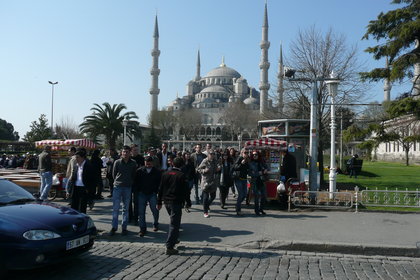
Everybody wants to see the blue Mosque.
10 April 2010
Work starts with the transfer from the hotel to the port at 11:00. A bus takes us across the busy Bosporus bridge to the Asian side of Istanbul where RV MERIAN has just entered the port of “Haydarpasa”. Except for a few scientists in the group having sailed the MERIAN before, the ship is new to many of us, and we take tours through the ship to find the cabins and labs. On duty since 2005, the 94m long research vessel MERIAN is by far the newest of the fleet of large German research vessels. However, there is not much time to get to know the ship, as everybody is keen to unpack our 6 containers and to prepare for the cruise while the ship is still in harbour. We are busy till late at night to sort the boxes into the labs, and to install the main instruments.
RV Maria S. Merian in Haydarpasa Port

View through the bull eye

11 April 2010
The first full day on board is dedicated to unpacking all the boxes stuffed with scientific equipment. Luckily, we get a lot of support from the crew so we can soon start to set up the instruments and laboratories. Our scientific crew is made up of 23 scientists, students, technicians, and engineers from seven institutions. The team is truly international with people’s home countries spanning the globe from Chile and Canada across Europe (France, Italy, Norway, Turkey) to Ukraine and as far as Indonesia. The scientists joining the cruise are made up of Biologists, Biogeochemists, Sedimentologists, Geochemists, and computer specialists, and include Professors, Scientists, PostDocs as well as PhD students. We are 8 women and 15 men, the youngest participant is 24 and the oldest 70 years – and together we are looking forward to the joint work.
All 23 members of the scientific crew
12 April 2010
Ready to go after the first scientific meeting in the morning we still have to wait until the heavy ship traffic in the Istanbul strait allows us to join the long line of ships travelling northwards towards the Black Sea. The splendid skyline of Istanbul with its characteristic mix of minarets, palaces, and skyscrapers keeps everybody on deck. Well – almost everybody: as our first working area is located very close to the opening of the Bosporus the “water column” people are busy preparing for their first stations. The main focus for the group headed by Gaute Lavik from the Max Planck Institute for Marine Microbiology (MPI) is to investigate the inflow of oxic water bodies from the Marmara Sea into the anoxic Black Sea at high resolution. Station work starts in the evening of the first day at sea with the first casts of the so called CTD/Rosette – an instrument to investigate water column properties including temperature, salinity, and oxygen and to take water samples from different depths. Already the first haul holds a surprise – intrusions of warm and salty oxic waters that are considered typical for the area are virtually absent from the site where we found them before in November 2009 on the Turkish research vessel ARAR. We start planning a search strategy in the canyons and on the shelf edge for the next days. These intrusions of Marmara Sea water are transferred along the bottom of the Istanbul Strait and provide oxygen to the deep anoxic part of the Black Sea water column.
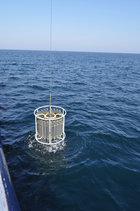
The CTD/ Rosette is brought to deck.
13 April 2010
The surface of the seafloor where the investigations of Gaute and his colleagues end is where the work of many other people on board just starts. Similar to the water column also the sediments of the Black Sea show a transition from shallow oxic to deeper oxygen-free and even sulfidic sites. We plan to start at the deep sites in the night. But first some technical issues need to be solved. Standard coring equipment literally drowns in the extremely fluidic muds which cover the deeper parts of the area between 300 and 150 m. The first night we use only the mini corer from Istanbul Technical University (ITU) to retrieve samples. But after some joined Turkish-German creative thinking Umut Ulgen and Dursun Acar from Istanbul and Axel Nordhausen from Bremen are able to solve the problem.
14 April 2010
Antje Boetius and her team from the Alfred Wegener Institute (AWI) and the MPI are focusing on sediment biogeochemistry under different oxygen conditions. Now that the coring devices work reliably, the team has the hands and faces full of mud from sampling sediments. These are extracted, incubated, frozen and preserved in many ways for analyses of biogeochemical processes and communities of microorganisms. Other people like Umut Ulgen and Zeynep Erdem from ITU are more interested in the past of the Black Sea waters. For that purpose they need several meter long sediment cores that can, once analyzed, be read as a diary with notes about the history of, e.g., oxygen availability and water column productivity in the Black Sea. Retrieving cores of up to several meter length from the soft sediments turns out to be rather easy. This is very fortunate as Umut and Zeynep are not the only ones that queue for those samples. Ryan North from the Swiss Federal Institute of Aquatic Science and Technology (Eawag) takes sediment samples for the analysis of noble gases and biomarkers in huge amounts not only for himself but also for several of his colleagues. Some say, he never sleeps…
Left: six noble gas samples – the fruits of several hours of work.
Middle: A 12 meter long gravity corer is retrieved – luckily the ship is not rolling.
Right: one deployment – more than 8 m of sediment core
Middle: A 12 meter long gravity corer is retrieved – luckily the ship is not rolling.
Right: one deployment – more than 8 m of sediment core

Axel Nordhausen and Rafael Stiens, both technicians at MPI taking a deep look at the gravity corer.
15 April 2010
The Box corer – a standard sampling instrument for investigations of the animal communities in sediments.
Nelli Sergeeva, Maksim Gulin, and Sofia Mazlumyan from the Ukrainian Institute of Biology of the Southern Seas (IBSS) are on the hunt for creatures that are hardly visible with the naked eye: with fine sieves and microscopes they are looking for “meiofauna”, a huge variety of tiny animals that are known to inhabit oxic sediments in all oceans worldwide. Nelli and her colleagues are joining the cruise to identify meiofauna communities that are specific for different concentrations of oxygen. Of special interest is the lower oxygen limit of meiofaunal life – are they maybe even found in the absence of oxygen? A promising result is the observation of living nematode worms in sediments from water depths where only traces of oxygen are found.
From left to right:
- Taking a close look at a sieved sample.
- Freshly retrieved from the seafloor with the box corer – a box of sediment – and a jellyfish.
- Ukranian Biology professor Nelli Sergeeva presenting a coelenterath worm.
- Taking a close look at a sieved sample.
- Freshly retrieved from the seafloor with the box corer – a box of sediment – and a jellyfish.
- Ukranian Biology professor Nelli Sergeeva presenting a coelenterath worm.
16 April 2010
After several days of profiling the sea to search for evidence of recent Bosporus inflow, Gaute and his team have found answers. Our HYPOX members Namik Cagatay (ITU) and Emil Stanev (GKSS) have advised us via email that the weather conditions may be the main reason for the absence of strong inflow signals. It seems that the strong northerly winds that prevailed previous to the cruise piled up surface waters, which block the deep outflow of the Bosporus. This interesting finding is confirmed by tens of CTD casts in all parts of the working area that show only traces of older filaments of Marmara Sea waters which have already lost their oxygen. To investigate the fine scale distribution water column chemical parameters, Moritz Holtappels from the MPI deploys the recently developed instrument called “Free Falling Pump CTD” for the first time. It’s a device that pumps water from the water column right into the shipboard lab while sinking from the surface down to several hundred meters water depth. Compared to previous approaches this allows a much finer vertical resolution, which is also independent of the wave movement of the ship. Based on the findings of the CTD casts, Jean-Francois Rolin and Serge le Reste from the French Research Institute for Exploitation of the Sea (Ifremer) select an appropriate site and deploy a so-called “Provor float”. It is basically an autonomous CTD that profiles the water column for several years and transmits the data to shore via satellite. But the Provor float of Jean-Francois and Serge is very special and represents one of new HYPOX observatory technologies, because it is equipped with an oxygen sensor and programmed to rest on the seafloor between profile casts in order to stay as close as possible to the Bosporus area, one of the main target areas of HYPOX. Everybody on board is keen to read the first transmission of data from the float in a few days.
A lot of vials have to be prepared for every deployment of the free falling pump CTD – at the appropriate conditions there are always volunteers.
17 April 2010
Everybody wants to have a look at the seafloor.
Screenshot of the video transect showing bacterial mats
Besides progressing with the water column and sediment sampling, a main highlight of this day is the long TV MUC transect across the entire biogeochemical sampling area from 300 m water depth onto the shelf. Looking at anoxic water column and seafloor, it is amazing to see how different the oceans would be without animals. The absence of oxygen excludes zooplankton in the water, and polychaete worms or small nematodes and crustaceans from the sediments. Hence, the anoxic Black Sea waters are very turbid and full of particles, because of the absence of grazers. The particles can sink to the seafloor and build up thick horizons of finely layered sediments. However, many of the cores from the upper margin do not show such fine layering, as sediment slides may frequently occur, mixing the sediments to a uniform blackish mass. At 300 m water depth we observe gas bubbling from the seafloor during sampling, in 220-200 m water depths we find large mats of sulfide oxidizing bacteria as a first sign of minimal supplies of oxygen and at 180 m we see the first larger animals such as polychaete worms and starfish. Some fish are visible at 160 m and the first crustaceans and larger fish, for example rays, at 130 m. The videotransect is very helpful in supporting our biological, biogeochemical and geological data. The images match very well the observations of animals above 200 m by the IBSS biologists. Apparently a few micromoles of oxygen can still be exploited by quite a diversity of life.
18 April 2010
We spend the day with coring a second transect from 250m up to 80 m from North to South west of the main Bosporus inflow. With enormous speed and efficiency, the ITU team collects 12 cores to study traces of inflow and hypoxia in the past. The “water column team” obtains their last pump CTD and a few further CTDs for biogeochemical and microbiological subsampling. They are excited, as finally a stronger filament of Marmara water is detected and sampled. Too bad that we have to leave now that the inflow picks up again, but if we are lucky Ifremer’s PROVOR system will record the event. We just turn to our last coring stations in the Bosporus outflow area, to sample the large bacterial mats and analyse the environmental conditions needed to sustain them.
This is the last day before we enter the port of Eregli as a first stop to exchange some of our scientific participants. Travelling across Europe is a major issue these days as a side effect of the eruptions of Iceland’s volcano, and only three of our eight new crew members can make it to Eregli. So tomorrow we have to make new plans how to continue, as every hand is needed on board, and our two important technical support teams for the submersible JAGO and the benthic crawler MOVE may not make it in time to the ship.
This is the last day before we enter the port of Eregli as a first stop to exchange some of our scientific participants. Travelling across Europe is a major issue these days as a side effect of the eruptions of Iceland’s volcano, and only three of our eight new crew members can make it to Eregli. So tomorrow we have to make new plans how to continue, as every hand is needed on board, and our two important technical support teams for the submersible JAGO and the benthic crawler MOVE may not make it in time to the ship.
19 April 2010
During the transit from Port Eregli to the Crimean shelf.
Just arrived at the ship Giuditta, Nadia and Flavio start to assemble the MEDUSA system
After finishing the station work in the Bosporus area, we head for Port Eregli roughly 100 miles south east of the Bosporus inlet. While some of us are still busy working their way through the last sediment and water samples, others use the evening to tidy up the labs and to remove traces of sediments that are found virtually everywhere after the splitting of numerous Multiple Corer and Gravity Corer samples. Before going to bed some of us gather in the “Hangar”, a large wet lab that directly connects to the working deck, to celebrate a very successful first week. As planned we reach Port Eregli in the morning of April 19th. Now it is time to say good bye to Zeynep, Umut, and Dursun from Istanbul Technical University (ITU), to Gaute, Gabi, and Yudi from the Nutrient group at the Max Planck Institute for Marine microbiology (MPI) and to Jean Francois and Serge from the French Research Institute for Exploitation of the Sea (IFREMER). Right before leaving, Serge and Jean Francois have received the first data from the satellite, confirming that the PROVOR float started to profile the water column as planned. A small bus picks up the scientists to carry them to Istanbul. When the car leaves the port it looks quite overloaded – due to many meters of gravity core samples that our Turkish colleagues take back to the core scanning facilities at ITU in Istanbul.
The cranes of Port Eregli when arriving in the fog.
As new members of the scientific crew we welcome HYPOX members Giuditta Marinaro and Nadia LoBue from the National Institute of Geophysics and Volcanology (INGV) in Rome and the technician Flavio Furlan from Tecnomare-ENI. We are very lucky that they have made it in time to Istanbul, despite the current problems with air traffic. Their responsibility is to run the towed monitoring system “MEDUSA”, which we will use to get an overview of the seafloor chemistry in the working area. For the other five new members of the scientific crew, it was impossible to reach Eregli but there is a good chance that they will make it to Sewastopol, for the second exchange of scientific staff on 23.4. In the afternoon of 19.4., we head for the Ukrainian shelf west of Crimea where we will work for the coming three weeks.
20 April 2010
Right after reaching the Crimean shelf in the morning, the first MEDUSA transect is carried out. The system monitors the seafloor with a video-camera, towed by the ship along a predefined transect. In addition MEDUSA contains several sensors to characterize the properties of the overlying water, including oxygen, salinity, temperature, methane, and turbidity. We spend our spare time around the monitors, to get a live impression of the highly structured seafloor at the Crimean shelf. Smooth and rippled structures alternate with sudden cracks and large outcrops of carbonates. Luckily the winch operators at MERIAN always manage to keep the system close enough to the seafloor to get good images (0.5 to 1m) and far enough to prevent damage of the camera. During the transect we enjoy the unbelievable positioning capabilities of the MARIA S. MERIAN. Commands like “please stop and move 1 meter east” (that you would hardly dare on other research vessels) are easily fulfilled – which is of great help to position cameras, sensors and sampling devices exactly on the right spot.
Before the second MEDUSA deployment in the afternoon, colleagues from the MPI in Bremen attach 4 additional types of electrochemical and optical oxygen sensors to the system, making it a true multi oxygen sensor system (“Mega-Medusa”..). A first analysis of the data from all sensors indicates that the boundary between hypoxia and anoxia (the shallowest depth were oxygen is still present) is found at a depth of exactly 175 m. This knowledge is very important in order to position our main sampling sites in the right environment, to test our hypotheses on the effect of oxygen depletion on seafloor ecosystems. Today’s MEDUSA transects ends around midnight, giving Giuditta and her colleagues time for a little rest until starting again tomorrow.
21 April 2010
The first sediment sampling starts after a night of seafloor mapping with a high-resoultion multibeam sonar. Samples for biological investigations are taken with the box corer, and are processed by our colleagues from the IBSS, Nelli, Maksim, and Sofia. A look into the box corer shows that the sediments at this part of the Crimean shelf are rather coarse with a large fraction of bivalve shell debris. This is in good agreement with yesterdays MEDUSA transects where softer sediments appeared only very occasionally. Hence, we have to continue searching with MEDUSA, to find appropriate spots where the sediment is soft enough to allow for successful and safe sampling and deployments of our diverse measuring systems, especially those equipped with microsensors, to which bivalve shells are a natural enemy. Meanwhile, Nelli and her colleagues are working hard to retrieve the tiniest from kilograms of shell debris, and we are curious to find out what is living at below 10 micromoles of oxygen.
22 April 2010
A recording current meter is attached to the mooring close to the bottom weight.
The marker buoy for the moorings is ready to go.
On the third and last day before going to Sevastopol for another exchange of scientific crew we continue the MEDUSA transects at water depths of 120 and 160m. It turns out that also at those depths almost all sediments are littered by shell debris and that it will be very difficult to find spots where work with delicate instruments will be possible – for example with our needle-like glass microsensors. Oxygen measurements carried out during the Medusa surveys show that oxygen concentrations depend strongly on the local bathymetry with lower values in the underwater canyons that in the surrounding areas. In order to investigate the temporal resolution of oxygen availability at depth we deploy an array of three oceanographic moorings at neighbouring sites in the hypoxic part of the seafloor. Each mooring consists of a rope that extends from a ballast weight at the seafloor (in fact a 250 kg wheel from a train) to the surface buoy, and to which several logging sensors are attached. Oxygen, current, temperature, and salinity readings logged over the time course of the cruise will be used to follow fluctuations of the so called “chemocline” – the water layer that separates the oxic upper waters from the more saline anoxic deeper water body. Changes in chemocline position are expected to affect the benthic communities as they would select for organisms that are able to tolerate very different conditions. To understand this connection between biology and oxygen availability is one of the core tasks of HYPOX.
Anna Lichtschlag and Jan Fischer are preparing the additional oxygen sensor pack attached to MEDUSA.
But right before finishing the station work we get informed by the captain of MERIAN that there will be exercises of the Russian Navy in our research area. Soon we are commanded by a Russian navy ship to leave the area immediately, but luckily we are already on our transit to Sevastopol. We go to bed with mixed feelings – on the one hand we could successfully finish the first exploratory step at the Crimea target site. On the other hand it is uncertain when we will be able to continue our work and if we will find the moored instruments in good shape.
23 April 2010
We arrive at the nice cruise ship pier of Sevastopol in the early morning and the sun is shining. Soon after our berthing, we can welcome the new members of the scientific crew that will join us for the remaining part of the cruise. After some three days of travelling the team of the submersible JAGO from the Leibniz Institute of Marine Sciences in Kiel (IFM-GEOMAR), the team of the benthic crawler MOVE from MARUM at Bremen University, and two scientists of the Max Planck Institute in Bremen (MPI) arrive at the pier, a bit exhausted but in the best mood. The only scientific crew member that is not able to join is Ronnie Glud from the HYPOX partner Institute SAMS (“Scottish Association for Marine Science”). Instead Sonya from the Ukrainian Institute of Biology of the Southern Seas (IBSS) can stay on board and continue with Maksim and Nelli to search for fauna in the numerous sediment samples. But first we have one and a half day at the pier in Sevastopol. While the Italian colleagues disintegrate the MEDUSA system, the newly arrived members of the scientific crew are setting up their systems. Everybody on board gets excited when Karen Hissmann, Juergen Schuer and Torben Klagge unpack the bright yellow manned submersible JAGO from the container. Juergen and Karen are not only running JAGO but were also the ones who built the system some twenty years ago. The pretty yellow submarine can take 2 people (pilot and scientist) to water depths of up to 400 m. In the afternoon Yuri Burchenko, head of the International Relations Department at HYPOX partner institution IBSS offers to guide us through the center of Sewastopol. Several of us take the opportunity to join for a closer look at this beautiful city and to learn a lot about its history. We all have a very inspiring afternoon downtown Sewastopol that is, according to Yuri, one of the three cities in the world that all natives will come back to at some point in their lives. Being native or not - after we saw the promenade drowning in the last sunlight of the day, music is played everywhere and people gather on the shores of the Black Sea, we certainly like to come back.
24 April 2010
The benthic crawler MOVE is set up in Sevastopol harbour.
Leaving Sevastopol.
Preparing the first JAGO dive for the next morning.
This is the day of the bad news: another military exercise is announced for 26-29 April and every hour there are new updates of what is going to happen and what this will mean for our work. After hours of communication by the Captain of the Merian, Friedhelm von Staa and Antje Boetius with the different authorities it becomes clear that the exercises will keep us away from our moorings and IBSS sampling sites for almost a week. Of course everyone is disappointed because it was a lot of work to map the oxygen distribution with MEDUSA and CTD, and it is unfortunate not to be able to recover the moorings as planned.
Fortunately the working permission we got for the Ukrainian waters is flexible, and we are allowed to work outside our original working area, which has all of a sudden become a military training area. After some consideration we decide for a new site west of Sevastopol which we reach in the evening. We use the night to get a first idea of the site. Sebastian Albrecht from FIELAX in Bremerhaven, who is in charge of all data management issues (and numerous other things) during this cruise, uses MERIANs excellent acoustical mapping tools Multibeam and Parasound to provide us with a first bathymetry the next morning.
At midnight we get back to our good mood as we celebrate the birthday of Frank Wenzhoefer from MPI with some Ukrainian sweets and one (or was that two?) bottles of famous Crimean Champagne.
Fortunately the working permission we got for the Ukrainian waters is flexible, and we are allowed to work outside our original working area, which has all of a sudden become a military training area. After some consideration we decide for a new site west of Sevastopol which we reach in the evening. We use the night to get a first idea of the site. Sebastian Albrecht from FIELAX in Bremerhaven, who is in charge of all data management issues (and numerous other things) during this cruise, uses MERIANs excellent acoustical mapping tools Multibeam and Parasound to provide us with a first bathymetry the next morning.
At midnight we get back to our good mood as we celebrate the birthday of Frank Wenzhoefer from MPI with some Ukrainian sweets and one (or was that two?) bottles of famous Crimean Champagne.
25 April 2010
Anna Lichtschlag is attaching microsensors to a microprofiler on the MOVE system.
Torben Klagge has to stay on JAGO in order to release it from the hook once its lowered to the surface.
The day starts sunny and calm and with the promising prospect to witness the first dive of JAGO. Based on the Sebastian’s maps and on the oxygen distributions found in the CTD/Rosette casts we selected waypoints for the upcoming dives. Again, the main purpose is to map the oxygen concentrations close to the seafloor and to search for soft sediments as potential sampling sites. In contrast to the Medusa system, JAGO allows a direct observation of the sites. On the other hand, exploration of unknown territory with JAGO is slower and more time consuming – but a wonderful experience. Felix Janssen from MPI, the scientific coordinator of the HYPOX project, is the first scientist to take seat in JAGO together with the pilot Juergen Schauer. It turns out that diving is a lot of fun and, due to the long term experience of the JAGO team, also very relaxed and enlightening experience. Only when dragged by a dinghy from the ship to the dive position, JAGO performs funny movements and it gets a bit uncomfortable… The first dive and a second one by Anna Lichtschlag from MPI are dedicated to reconnaissance of the 10-25 µM oxygen zone at 160-150 m water depth and produces good news: The sediments here are soft, smooth, and almost free of bivalve shell debris: ideal conditions for sediment sampling and work with delicate instruments, especially those carrying microsensors! From this moment on some of us start to think that maybe the bad luck turns to a good thing.
Between the two dives, Jan Fischer from MPI carries out a calibration deployment of MUFO a completely new device he developed. “MUFO” stands for Multi Fibre Optode – it is basically a string of 100 optical sensors that simultaneously determine oxygen concentrations in the lowermost meters of the water column. The first deployment looks very promising and Jan will be able to deploy the system soon, to monitor oxygen fluctuations in the lowermost part of the water column. Late in the evening the MOVE system of MARUM at Bremen University is ready for a first test launch. This so called crawler is basically a camera-equipped frame on wheels that is lowered to the seafloor where it moves according to the commands transmitted through a cable from the lab down to the seafloor. When it is deployed, fully equipped with different instruments to measure solute distributions and fluxes and to map the seafloor at high resolution, it looks like some very sophisticated outer space instrument. The deployment is quite complicated and again we are thankful to the very experienced and helpful crew of MERIAN! MOVE itself and most of the instruments attached to it work well. The only thing is that MOVE sinks a little too deep into the rather soft sediment, so for the next dive it better looses some weight. However, after two weeks of excellent food on board prepared by the Ship’s chief cook Waldemar Arndt and his team this is probably true for most of us…
26 April 2010
This is the first time during this cruise that we get a little heavier winds and higher waves so there’s probably nothing to complain about. Still it is unfortunate that the conditions are too rough to be able to continue with the JAGO dives. Therefore we go for “plan B”. Instead of joining Jürgen for a trip in the yellow submarine Moritz Holtappels from MPI is busy to prepare the so-called “BBL profiler” that conducts measurements and takes samples in the lowermost meters of the water column (the so called benthic boundary layer, or “BBL”). Therefore it extends the part of the water column that can be investigated with classical CTD / Rosette casts all the way down to the bottom. To also investigate the temporal evolution of oxygen concentrations a back to back deployment of MUFO is planned for later today. While Moritz and Jan are preparing their deployments, samples of the sediments suveyed with JAGO yesterday are now sampled with the TV-guided Multiple Corer.
27 April 2010
The Chamber lander upon deployment
The MUFO system is retrieved after a 12h deployment
Finally Maksim is entering JAGO for a dive to the 200m station
Unfortunately the weather is still too rough to go on with the JAGO dives. Maksim Gulin from the Ukrainian Institute of Biology of the Southern Seas (IBSS) has to wait until the afternoon for the winds to abate until he can finally enter JAGO. Maksim knows the excellent capabilities of JAGO from first hand experience he gained during an earlier cruise to the Crimean Shelf on board the German research vessel POSEIDON. But this is not the only reason he is impatiently waiting for “his” dive – rather it is the possibility to have a direct look at the environment that his research is focusing at: the anoxic but not yet sulfidic areas and the higher life that may be found there. Although there is an increasing number of observations of multicellular life reported from anoxic regions, it is still unknown how animals manage to extend their habitat into anoxic realms.
The windy day is dedicated to a combined deployment of the “fabulous four” – four autonomous instruments that perform pre-programmed measurements while sitting at the sea floor. In addition to the MUFO and the BBL profiler mentioned earlier these are the eddy correlation system “EDDY”, and a so-called Chamber lander, which combines a benthic chamber with a microprofiler system. Each of the four instruments run by the team of the Max Planck Institute in Bremen (MPI) is a valuable tool to investigate conditions and processes at the seafloor–bottom water-boundary. When combined they have the potential to provide us with deep insights into processes at the active benthic boundary layer. While MUFO and the BBL-profiler focus on the gradients of oxygen and other solutes in near bottom waters, the other two systems add the seafloor perspective. EDDY determines the fluxes of oxygen between the water column and the seafloor based on combined measurements of turbulent flow properties and oxygen concentrations (“Eddy correlation technique”). The benthic chamber lander takes a more direct approach by measuring the release and uptake of oxygen and other dissolved compounds of a smaller enclosed sediment patch. The microprofiler measures gradients of oxygen and many other compounds within the top sediment horizon which can be converted to uptake or loss rates. It is already evening when the last of the four instruments is finally deployed at a water depth of 150m. The day is, however, not yet over as another deployment of the benthic crawler MOVE follows at the same water depth and extends deep into the night.
28 April 2010
Erika Weiz from MPI is taking subsamples from Multicorer cores
After all dives oxygen samples are taken from the JAGO Niskin bottle to confirm sensor readings
The MOVE deployment indicated that oxygen conditions changed strongly during phase of stronger currents in the last two days. We had considered the 150m station as a hypoxic station based on the measurements during the first two dives of JAGO, but this site is now completely anoxic. This rapid fluctuation is confirmed when the four autonomous instruments are retrieved. Only the top sensors of the MUFO system indicate some oxygen a few meters above the seafloor. Apparently, the temporal variations exceed the spatial variations at our current target site, which makes it a very interesting natural laboratory for several objectives of the HYPOX project. The JAGO dives of Moritz Holtappels from MPI in Bremen and of Maksim Gulin add to these findings. Maksim, investigating a station at a depth of 200m, observed traces of oxygen at some locations. Moritz observed a significant drop in oxygen at 145 m when JAGO was stopping for sampling of sediment cores. Now we really miss our oceanographic moorings, which are still sitting in the first area now closed due to a Russian military exercise. At the end of the day the MPI team has again prepared the in situ deployments of MUFO, BBL profiler, EDDY, and chamber lander. Again, all four instruments are deployed – once more at 150m to repeat the experiment. Also we are looking forward to another long and exciting night with MOVE at the 140m station.
29 April 2010
Today it is the turn of Jan Fischer and Antje Boetius to continue the exploration work with JAGO dives to 125 and 150m. Antje’s task was to have a close look at whitish, often circular sediment spots that were frequently observed during previous dives. It turns out that the colour of these spots originates from the presence of high numbers of large filamentous bacteria that form a thin mat atop sedimented organic matter. Another typical feature of these spots is that they seem to be associated with circular depressions in the seafloor. This could be the key to the formation of these structures. Maybe the degradation of the accumulated organic debris fuels microbial sulphide production, nourishing the filamentous bacteria. Jan’s dive is in search for a well oxygenated zone with concentrations higher than 100µM – but unexpectedly oxygen concentrations stay well below this benchmark. Hence we have to look for an oxic reference site in shallower waters. Late in the afternoon the deployment of our instrument is finished. When we enter the “Hangar” we cannot believe how it changed its appearance. The ship’s chief cook Waldemar Arndt and his team have turned the large lab into a dining room for a delicious barbecue. There are moments when the MERIAN has a strong resemblance to the land of milk and honey...
30 April 2010
A CTD is deployed as part of the mooring. The air-filled plastic spheres keep the rope upright and stiff
Part of the working area bathymetry assembled by Sebastian Albrecht, Filax, Bremerhaven based on the transects with Merians Multibeam sonar
After a night of Multibeam transects to finalize a map of the working area at high resolution we steam to the area where we originally intended to work. Just after the Navy exercises came to an end we arrive to pick up our oceanographic moorings. When the top buoys finally get in sight we are very happy that they look intact and obviously didn’t serve as a target for firing. At least we can get a rough idea of the oxygen conditions at the original target site, and finish the sampling by multiple corer along the transect, so that the previous work can be put into perspective. But looking at the cores stuffed with mussel debris, some of us are grateful that the Navy has indirectly helped us to find a far more convenient site.
Now we are keen to redeploy the instruments in the substitute working area, in order to monitor the temporal fluctuations in oxygen concentration. After returning to the station off Sewastopol in the late evening we immediately deploy two of the three moorings at depths of 150 and 135m. In the second half of the night the fabulous four in situ instruments (EDDY, MUFO, Chamber lander, and BBL profiler) get on another mission to investigate the environment of the seafloor and the bottom water at 135 m water depth.
Now we are keen to redeploy the instruments in the substitute working area, in order to monitor the temporal fluctuations in oxygen concentration. After returning to the station off Sewastopol in the late evening we immediately deploy two of the three moorings at depths of 150 and 135m. In the second half of the night the fabulous four in situ instruments (EDDY, MUFO, Chamber lander, and BBL profiler) get on another mission to investigate the environment of the seafloor and the bottom water at 135 m water depth.
1 May 2010
The characteristic layering of the sediment cores from the 200m deep station is a clear indication for the long term absence of bottom dwelling fauna due to the lack in oxygen. Still some animals may be present here.
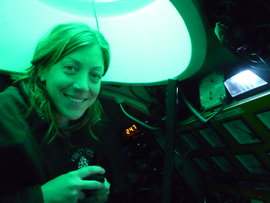
Daphne Donis, PhD student at MPI during her JAGO dive
In search for a shallower, oxic reference station we need advice from the Captain: the shallow part of our substitute area is crossed by busy ship routes which makes it too risky to deploy gear. There are also military no-go areas near by, and territorial waters to be avoided: so our only choice is a small area to the north of our deeper stations at 100m water depth. For this reason we carry out a small bathymetry transect before deploying the third mooring and further sampling. The seafloor looks promisingly flat and soft. As the first JAGOnaut of the day, Daphne Donis, PhD student at the MPI in Bremen visits the 115m station on the upslope end of our working area. Surprisingly, still signs of higher life are mostly missing. The afternoon dive of Sonja Mazlumjan (IBSS) takes place at the new 100m site. We have chosen a good spot, with macro- and megafauna life. In contrast, the entire area between 115 and 200m is exposed at least temporarily to low oxygen concentrations or even anoxia. But then we realize that another navy exercise is scheduled to start in our substitute area til the morning of the 5.5. We decide to quickly sample sediments at the 200m station which will not be accessible for the next couple of days before continuing at the shallow sites.
2 May 2010
The digital camera “MEGACAM” is attached to a 2 axis drive that allows horizontal and vertical positioning
Another MOVE deployment starts in the early morning at 135m water depth. Again the so-called MEGACAM is attached to take photographs of the seafloor at high resolution. Looking at the brilliant close up images is very exciting – even if there are hardly any signs of macrofauna life. A manipulator attached to MOVE allows to adjust the distance to the sediment as well as to take long sequences of images without moving MOVE, to get an overview of the structure of the sediment and of the animals living at the surface. We are looking very much forward to have a close look at the oxic 100m station where more life should be found for the next MOVE dive.
Example of a high resolution image of the seafloor at 135m water depth. The fluffy organic rich layer at the surface is clearly visible.
3 May 2010
3.5.2010
The most amazing event of today is certainly the rendezvous of the two mobile underwater instruments that are on board during this cruise. Christoph Waldmann from MARUM at Bremen University, the father of the MOVE system, joins Juergen Schauer from the IFM-GEOMAR in Kiel in his manned submersible JAGO for a very special underwater meeting. Christoph is using the JAGO to have a detailed look at MOVE during the deployment – to test and monitor the functions and to investigate potential technical improvements. For safety reasons JAGO has to descent some hundred meter away from MOVE which is directly lowered to the seafloor and hence connected to the ship during the deployment. Immediately after the two systems were in the water the scientific crew starts betting whether or not JAGO would be able to find its way to the MOVE “benthic crawler” system – again the water is extremely murky from the mixing of anoxic and oxic waters. Juergen uses his forward looking echosounder and is guided by Karen Hissmann who sees the Posidonia transponder display on board and can communicate from the ship via underwater phone communication Of course he finds the crawler straight away even when not seeing much. Some tens of minutes later, the sceptics on bord were in several ways convinced of being wrong: First the amazed shouting of Juergen through the underwater phone (“wir habens!”), the acoustic footprint of the two systems on the echo sounder display, the meeting of the two points on the screen of the acoustic tracking system “Posidonia”, and finally, JAGO in the field of view of the online camera on the MOVE system. Some of you may still be sceptical about the manned moon mission being real –however, there’s certainly no doubt that this manned underwater rendezvous was for real!
The most amazing event of today is certainly the rendezvous of the two mobile underwater instruments that are on board during this cruise. Christoph Waldmann from MARUM at Bremen University, the father of the MOVE system, joins Juergen Schauer from the IFM-GEOMAR in Kiel in his manned submersible JAGO for a very special underwater meeting. Christoph is using the JAGO to have a detailed look at MOVE during the deployment – to test and monitor the functions and to investigate potential technical improvements. For safety reasons JAGO has to descent some hundred meter away from MOVE which is directly lowered to the seafloor and hence connected to the ship during the deployment. Immediately after the two systems were in the water the scientific crew starts betting whether or not JAGO would be able to find its way to the MOVE “benthic crawler” system – again the water is extremely murky from the mixing of anoxic and oxic waters. Juergen uses his forward looking echosounder and is guided by Karen Hissmann who sees the Posidonia transponder display on board and can communicate from the ship via underwater phone communication Of course he finds the crawler straight away even when not seeing much. Some tens of minutes later, the sceptics on bord were in several ways convinced of being wrong: First the amazed shouting of Juergen through the underwater phone (“wir habens!”), the acoustic footprint of the two systems on the echo sounder display, the meeting of the two points on the screen of the acoustic tracking system “Posidonia”, and finally, JAGO in the field of view of the online camera on the MOVE system. Some of you may still be sceptical about the manned moon mission being real –however, there’s certainly no doubt that this manned underwater rendezvous was for real!
The staff of Jago after the successful dive. Center and right: CMOVE is equipped wuth a high resolution camera. The tips underneath the CMOCE are microsensors.
Left: Jago meets CMOVE as coud be seen on the sonar of Maria S Merian.
Right: JAGO dives underneath CMOVE.
Right: JAGO dives underneath CMOVE.
4 & 5 May 2010
Pure excitement: Sebastian Albrecht (Filax Bremerhaven) after his dive.
The Chamber Lander is retrieved after a 12h deployment.
Jan Fischer and Moritz Holtappels waiting quite relaxed for the next deployments of their in situ instruments (Multi Fibre Optode and Benthic Bottom Layer profiler).
Since a couple of days the work is evolving more and more into a very smooth routine. In the early hours of the new day the in situ instruments from the MPI in Bremen (“fabulous four”, see weblog 27.4.) are deployed one after the other and side by side with only a ship’s length of space in between. Being a major task in the beginning of the work on the Crimean Shelf, Frank Wenzhoefer, Anna Lichtschlag, Jan Fischer, Moritz Holtappels and the technicians Axel Nordhausen and Joern Patrick Meyer are up for an entry in the Guinness book of World Records – of course due to the good training by the ship crew during the last weeks. During both days, a total of four JAGO dives take place. They are mainly dedicated to “filling the gaps” in our data. We need to explore bottom water oxygen and seafloor characteristics between the main sampling stations in order to get a complete overview of the dynamic working area. Being now part of the daily routine doesn’t mean that the JAGO dives themselves are getting less exciting – this is at least what you can tell from the faces of Sebastian Albrecht (Fielax, Bremerhaven) and the MPI members Gerdhard Jessen, Erika Weiz, and Rafael Stiens after returning from their respective dives. Between the dives, while the JAGO batteries and pressurized air tanks are replenished, it is high time to retrieve the four in situ instruments, collect the samples and read out the data and prepare them for the next deployment. This basic program of the day is of course interspersed with sampling of waters and sediments with the CTD/Rosette, the Multiple Corer, and the Box Corer. The water samples are mainly used to measure nutrient distributions and to investigate microbial processes and rates by means of incubation experiments. Also some of the sediment samples are incubated directly on board while others are examined for the presence of fauna by our Ukrainian colleagues from the IBSS. Most of the sediments, however, are sampled for later analysis of biogeochemical, geochemical, and molecular analyses after returning to our laboratories on land. The regular sequence of daily tasks on board that evolved somehow naturally makes it easier to plan the work and also the breaks in order to get at least some sleep. This is true for all of us - except for a few poor fellows staying up for the late night- early morning MOVE dives - who will probably have to postpone their beauty sleep to after we return…
Left: There is never enough water samples...
Middle: Late night sediment sampling can be fun!
Right: Some sediment samples ready to be examined for meiofauna by Nelli Sergeeva, Maksim Gulin, and Sonja Mazlumjan (IBSS).
Middle: Late night sediment sampling can be fun!
Right: Some sediment samples ready to be examined for meiofauna by Nelli Sergeeva, Maksim Gulin, and Sonja Mazlumjan (IBSS).
6 May 2010
Tidying up the deck conscientiously after sampling doesn’t help us from being nominated by the crew as the dirtiest scientific crew ever…
Sometimes even the huge working deck of MERIAN seems too small…
One of the last tasks: the entry in MERIAN’s guest book created by Daphne Donis from MPI. A good opportunity to say thank you to the crew!
Sonja Mazlumjan (IBSS) sieving the last samples for macrofauna.
The end of the cruise is approaching fast. Everything has now the bittersweet taste of being “the last” – the last box corer to be sieved for macrofauna (animals >1mm) by the colleagues from the IBSS in Ukraine – or the last Multiple Corer tube being cut in slices by the never sleeping Bremian sediment slaughterers Erika Weiz, Daphne Donis, Rafael Stiens, and Gerdhard Jessen from MPI (You can always find them following the muddy path towards the cold room). And there is of course the last opening hour of the ship’s store and thus the last opportunity to buy some souvenirs. Our chief scientist, Antje Boetius from the MPI uses a last short dive of JAGO in the afternoon to investigate characteristic zonations in the water column, as there were several observations during previous dives indicating that certain species prefer certain depths. Indeed it turns out that with increasing depth and decreasing oxygen concentration the dominating makroplankton species also change. The jellyfish Aurelia aurita which everybody knows from beach vacations (the one that children like to throw at each other) is only found in the surface layer where oxygen concentrations are still high. Deeper down and peaking around 120m water depth Aurelia is replaced by two different comb jelly (Ctenophores) species. Later, at the depth where oxygen concentrations rapidly drop (the so-called oxycline) also the ctenophores are no longer found. Instead, arrow worms (Chaetognaths) are present in high abundances. Finally, after passing the turbid layer that marks the transition from low to no oxygen all visible planktonic life is gone and only sinking flocculent material (“marine snow”) can be seen – an eerie view. In the evening the last MOVE deployment is scheduled as a revisit of the 100m station with the main mission of taking photographs of life at the presumably always oxic and hence most lively station (from the non-bacteria point of view, of course). This time it’s almost a bit too lively as fishes get attracted by the camera light in masses and steal the show from the tinier and more hidden species below that we are planning to document. In the end we decide to make full use of MOVE’s motive power and make pictures while moving to leave the fishes behind. It turns out to be some very exiting ten minutes on the move. For us - and for the fishes who get entangled between the microsensors.
Chief scientist Antje Boetius (MPI) is obviously looking forward to her investigation of Plankton zonation.
7 May 2010
The NEMO float is deployed - one minute later the station work of leg 15-1 has come to an end.
Putting the containers on deck is the first step to pack them.
All chemical waste has to be shipped back.
The very last task of this journey is the retrieval of the three oceanographic moorings, starting at the break of the new day. Everything goes amazingly smooth. Thanks to the as always highly professional and (even at this time of the day!) friendly and motivated crew, Moritz Holtappels and Jan Fischer from MPI manage to finish the retrieval punctual to the minute before starting the transit to Istanbul (For this they get a short laudatio at the scientific meeting later). However their performance is missed by most of us and when we wake up in the morning the ship is already steaming fastly towards the positions where two drifting observatories are to be launched. Just like the PROVOR floats that our French colleagues Jean-Francois Rolin and Serge le Reste deployed in the first week these so-called “NEMO floats” are part of the ARGO family of floats. These floats are deployed worldwide to monitor the main physical parameters of the sea (temperature and salinity) and, more recently, in some places also oxygen. The floats to be deployed belong to the MPI in Bremen and to the GKSS in Geesthacht, Germany. The deployment of the two floats does not only serve the HYPOX monitoring tasks but is also a contribution to the EUROARGO initiative in which Emil Stanev is also involved, HYPOX Scientist in charge at GKSS. In contrast to the PROVOR floats, the NEMO floats are resting at 450m instead of at the seafloor and are meant to drift freely with the counter-clockwise Black Sea rim current. The deployment is simple – the systems are carefully thrown over board. It is amazing to think that these systems are able to perform oceanographic casts for a period of 2-3 years and send over a data set every fifth day. Also this last station work is passing largely unnoticed as we are all already deep into packing. The packing motivation increases when we learn from Antje Boetius later that the scientific crew of the next leg from MARUM at Bremen University is scheduled to arrive tomorrow around lunchtime, expecting us to close the containers by this time…
8 May 2010
Getting up early we realize that we are already at the pier in Haydarpasa port in Istanbul. Did we mention earlier that the Merian is an amazingly quiet ship? As it was noticed by the JAGO crew during the dives this is not only true for the rooms on board of the ship but also for the marine environmnt. Yesterday’s packing of the boxes and disassembling of the instruments was of course only the first step. Now it’s the turn to pile the boxes and instruments into the four containers. Unbelievable that all our equipment will fit and that we will finish in time - but we do! Anyway – it is not later than 5 o’ clock tea time when we leave the ship and get transported across the Bosporus towards the beautiful old town of Istanbul where we spend a night in the hotel before travelling home. And although we get of course stuck in the traffic as well we still make it in time for a roof-restaurant dinner with an incredible view over Istanbul in the sunset. And if we are looking very carefully we may see the MARIA S. MERIAN lying on the Pier on the other side of the Bosporus, to remind us about four inspiring and intense weeks on the Black Sea. So the last words of this BLOG go to the Captain of the Maria S. Merian, Friedhelm von Staa, and his crew for making this cruise possible and supporting us so well – thanks a lot to all of you!
Packing in the relaxed possible way: Karen Hissmann from the JAGO team is tidying up the JAGO container.
